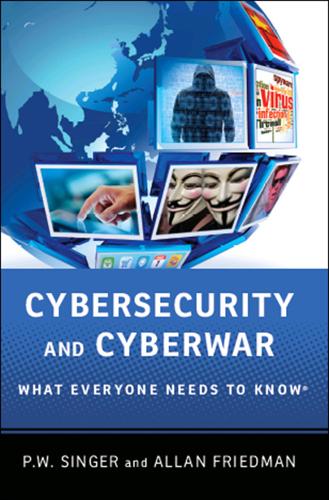
Cybersecurity: What Everyone Needs to Know
by
P. W. Singer
and
Allan Friedman
Published 3 Jan 2014
“civilian personnel and infrastructure” Neil C. Rowe, “Ethics of Cyber War Attacks,” in Cyber Warfare and Cyber Terrorism, edited by Lech J. Janczewski and Andrew M. Colarik (Hershey, PA: Information Science Reference, 2008), p. 109. “984 Siemens centrifuges” Ibid. “Pandora’s box” Mark Clayton, “From the Man Who Discovered Stuxnet, Dire Warnings One Year Later,” Christian Science Monitor, September 22, 2011, http://www.csmonitor.com/USA/2011/0922/From-the-man-who-discovered-Stuxnet-dire-warnings-one-year-later. “CYBERWAR, UGH, WHAT ARE ZEROS AND ONES GOOD FOR?”: DEFINING CYBERWAR “hereby formally declared” Historical Resources about the Second World War, “Text of Declaration of War on Bulgaria—June 5, 1942,” August 7, 2008, http://historicalresources.wordpress.com/2008/08/07/text-of-declaration-of-war-on-bulgaria-june-5-1942/.
…
equivalent to the use of guns Beidleman, “Defining and Deterring Cyber War,” p. 13. “more like a cyber riot” Shaun Waterman, “Analysis: Who Cyber Smacked Estonia?” United Press International, March 11, 2009. directness and measurability Owens, Dam, and Lin, Technology, Policy, Law, and Ethics Regarding U.S. Acquisition and Use of Cyberattack Capabilities. “politics by different means” Carl von Clausewitz, On War, edited by Michael Howard and Peter Paret (Princeton, NJ: Princeton University Press, 1976). bend the other to its will Thomas G. Mahnken, “Cyberwar and Cyber Warfare,” in America’s Cyber Future: Security and Prosperity in the Information Age, vol. 2, edited by Kristin M.
…
Mahnken, “Cyberwar and Cyber Warfare,” in America’s Cyber Future: Security and Prosperity in the Information Age, vol. 2, edited by Kristin M. Lord and Travis Shard (Washington, DC: Center for a New American Security, June 2011), p. 59. “It’s always a judgment” Jennifer Martinez, “DOD Could Use Force in Cyber War,” Politico, July 15, 2011, http://www.politico.com/news/stories/0711/59035.html. WHAT MIGHT A “CYBERWAR” ACTUALLY LOOK LIKE? COMPUTER NETWORK OPERATIONS confirm the Israeli suspicions Erich Follath and Holger Stark, “How Israel Destroyed Syria’s Al Kibar Nuclear Reactor,” Der Spiegel, November 2, 2009, http://www.spiegel.de/international/world/the-story-of-operation-orchard-how-israel-destroyed-syria-s-al-kibar-nuclear-reactor-a-658663-2.html.

Sandworm: A New Era of Cyberwar and the Hunt for the Kremlin's Most Dangerous Hackers
by
Andy Greenberg
Published 5 Nov 2019
Smith’s speech was, perhaps, the broadest, most public articulation of the ideal that I’d heard stated for years, most notably by Richard Clarke, a former national security counterterrorism adviser to three presidents whose 2010 book Cyber War had advocated a “Cyber War Limitation Treaty.” Clarke’s imagined treaty would ban “first-use” cyberattacks on critical infrastructure, and even forbid planting sabotage malware on targets like power grids, railroads, and financial institutions. The cyberwar doves’ position boiled down to Rob Lee’s maxim: No one, anywhere, should be hacking anyone else’s civilian critical infrastructure. For those who’d been in the trenches of the recent cyberattacks spilling out from Ukraine, it seemed obvious.
…
At the ribbon-cutting ceremony to celebrate the unit’s creation in August of that year, Deputy Secretary of Defense John Hamre discreetly alluded to the ongoing cybersecurity crisis the military was facing as Moonlight Maze continued to siphon its secrets. “The Department of Defense has been at cyberwar for the last half year,” Hamre told the audience. He didn’t name Moonlight Maze; the code name would only leak to the press months later. “Cyberspace isn’t just for geeks,” Hamre added in his JTF-CND speech. “It’s for warriors now.” * * * ■ What did Hamre mean by all this talk of warriors in cyberspace and that still unfamiliar word, “cyberwar”? By the time of Hamre’s speech in 1999, the notion had already been tossed around in military studies circles for years. The term “cyberwar” had been coined in a 1987 Omni magazine article that defined it in terms of giant robots and autonomous weapon systems replacing and augmenting human soldiers.
…
But in 1993, another landmark paper scrapped that Terminator-style definition and gave cyberwar a far more influential meaning, expressing it in terms of military forces’ potential exploitation of information technology. That article by two analysts from the think tank Rand, John Arquilla and David Ronfeldt, appeared in the journal Comparative Strategy with the title “Cyberwar Is Coming!” (The exclamation point, Arquilla would later say, was intended “to show everybody how serious this was.”) The two Rand analysts defined cyberwar as any means of warfare that shifts the balance of knowledge in the attacker’s favor.
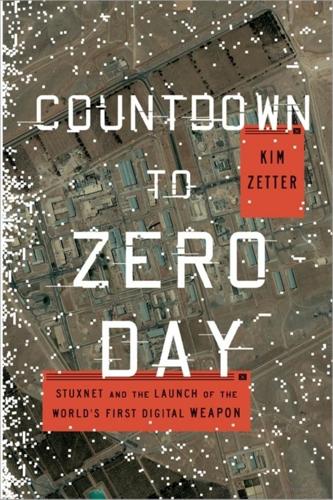
Countdown to Zero Day: Stuxnet and the Launch of the World's First Digital Weapon
by
Kim Zetter
Published 11 Nov 2014
“We went through the drill of figuring out how we would do some of these cyber things if we were to do them,” one senior military officer told the paper. “But we never went ahead with any.” Graham, “Military Grappling with Rules for Cyber.” 26 John Markoff and H. Sanker, “Halted ’03 Iraq Plan Illustrates US Fear of Cyberwar Risk,” New York Times, August 1, 2009. According to Richard Clarke, it was the secretary of treasury who vetoed it. See Richard Clarke and Robert Knake, Cyber War: The Next Threat to National Security and What to Do About It (New York: Ecco, 2010), 202–3. In general, nations have observed an unspoken agreement against manipulating financial systems and accounts out of concern over the destabilizing effect this could have on global markets and economies. 27 David A.
…
Lin, (eds.), “Technology, Policy, Law, and Ethics Regarding US Acquisition and Use of Cyberattack Capabilities,” National Academies Press, 2009, available at: steptoe.com/assets/attachments/3785.pdf. 49 Ellen Nakashima, “List of Cyber-Weapons Developed by Pentagon to Streamline Computer Warfare,” Washington Post, May 31, 2011. 50 Lolita Baldor, “Pentagon Gets Cyberwar Guidelines,” Associated Press, June 22, 2011, available at usatoday30.usatoday.com/news/military/2011-06-22-pentagon-cyber-war_n.htm. 51 Glenn Greenwald and Ewen MacAskill, “Obama Orders US to Draw Up Overseas Target List for Cyber-Attacks,” Guardian, June 7, 2013. Presidential Policy Directive 20 was issued in October 2012, according to the paper. 52 All quotes from Lin in this chapter come from an author interview in January 2014. 53 “International Strategy for Cyberspace: Prosperity, Security, and Openness in a Networked World,” The White House, May 2011, available at whitehouse.gov/sites/default/files/rss_viewer/international_strategy_for_cyberspace.pdf. 54 Siobhan Gorman and Julian E.
…
Security-industry/2014/01/31/Israel-combats-cyberattacks-biggest-revolution-in-warfare/UPI-24501391198261/. 21 Marcus Ranum, “Parsing Cyberwar—Part 3: Synergies and Interference,” published on his Fabius Maximus blog, August 13, 2012, available at fabiusmaximus.com/2012/08/13/41567. 22 Thomas Rid, “Think Again: Cyberwar” Foreign Policy, March/April 2012. 23 Author interview with Andy Pennington, November 2011. 24 James A. Lewis, “Cyberwar Thresholds and Effects,” IEEE Security and Privacy (September 2011): 23–29. 25 Rid, “Think Again: Cyberwar.” 26 This and other quotes from Healey come from author interview, October 2013. 27 Julian Barnes, “Pentagon Digs In on Cyberwar Front,” Wall Street Journal, July 6, 2012. 28 James A.
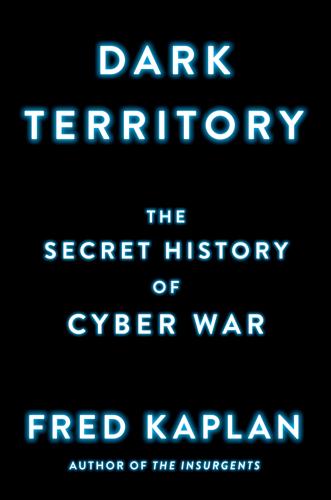
Dark Territory: The Secret History of Cyber War
by
Fred Kaplan
Published 1 Mar 2016
“in light of the breadth”: This language was reproduced in a memorandum from Attorney General to the National Security Council, on March 16, http://fas.org/sgp/othergov/munromem.htm. One word was floating around: The first use of “cyber war” was probably John Arquilla and David Ronfeldt, Cyberwar Is Coming! (Santa Monica: RAND Corporation, 1993), but their use of the phrase was more like what came to be called “netcentric warfare” or the “revolution in military affairs,” not “cyber war” as it later came to be understood. “may have experienced as many as 250,000 attacks”: General Accounting Office, “Information Security: Computer Attacks at Department of Defense Pose Increasing Risks” (GAO/AIMD-96-84), May 22, 1996.
…
Clarke, testimony, 9/11 Commission, March 24, 2004, http://www.cnn.com/TRANSCRIPTS/0403/28/le.00.html. a segment on CBS TV’s 60 Minutes: “The CBS 60 Minutes Richard Clarke Interview,” http://able2know.org/topic/20967-1. Published in April 2010: For examples of criticism, see Ryan Singel, “Richard Clarke’s Cyber War: File Under Fiction,” Wired, April 22, 2010. “Cyber-war, cyber-this”: Jeff Stein, “Book Review: ‘Cyber War’ by Richard Clarke,” Washington Post, May 23, 2010. On August 27: http://www.dni.gov/index.php/intelligence-community/review-group; the substance of the meeting comes from interviews. The next morning: The date of the first meeting at Fort Meade comes from a highly entertaining video of Geoffrey Stone delivering the “Journeys” lecture at the University of Chicago, sometime in 2014, http://chicagohumanities.org/events/2014/journeys/geoffrey-stone-on-the-nsa; substance of the session comes from that video and interviews.
…
Meanwhile, the FBI was probing all leads: See the many FBI memos, to and from various field offices, in the declassified documents obtained by the Cyber Conflict Studies Association. 5.5 gigabytes of data: The figure of 5.5 gigabytes comes from Maj. Gen. John H. Campbell, PowerPoint briefing on computer network defense, United States Attorneys’ National Conference, June 21, 2000. Days later, the news leaked to the press: “Cyber War Underway on Pentagon Computers—Major Attack Through Russia,” CNN, March 5, 1999; Barbara Starr, “Pentagon Cyber-War Attack Mounted Through Russia,” ABC News, March 5, 1999, http://www.rense.com/politics2/cyberwar.htm. They flew to Moscow on April 2: Declassified FBI memos, in the files of the Cyber Conflict Studies Association, mention the trip: for instance, FBI, Memo, from NatSec, “Moonlight Maze,” March 31, 1999; FBI, Memo (names redacted), Secret/NoForn, “Moonlight Maze Coordinating Group,” April 15, 1999.
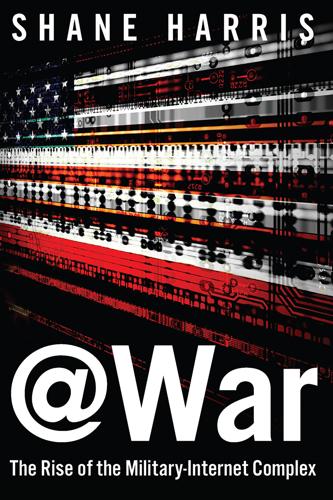
@War: The Rise of the Military-Internet Complex
by
Shane Harris
Published 14 Sep 2014
These are the same kinds of targets that a foreign army would draw up on the United States for a cyber war. The directive also instructs other government departments and agencies, including the State Department, the FBI, the NSA, the Treasury Department, and the Energy Department, to make plans for retaliating against “persistent malicious cyber activity against US Interests” when “network defense or law enforcement measures are insufficient or cannot be put in place in time.” The military would carry out those attacks as well, at the president’s instruction. PDD-20 is seen by military commanders and civilians as the rules of the road for cyber war, a crucial document that spells out lines of authority and command, responsibilities, and broad principles.
…
There is now an emergency conference-call system so that in the event of an imminent or ongoing cyber attack on the United States, military, Defense Department, intelligence, and law enforcement officials can be looped in with the president and the National Security Council—constituting a kind of cyber war cabinet—to decide how to respond. A command-and-control system for US cyber attacks is also in place. There is even an emergency communications line from Washington to Moscow, the cyber equivalent of the Cold War red phone. The core infrastructure for fighting a cyber war has been created. Now the United States is raising an army. To build a cyber force, the military first has to recruit the best warriors. Each branch of the armed forces has developed aptitude tests, molded on those used by corporations, to determine whether someone might be suited to network maintenance and defense or shows promise for the rarer, more sophisticated offensive missions.
…
Governments will still forbid companies from launching private cyber wars—that includes hacking back as retaliation for a theft or an attack on a privately owned network. But there will have to be rules that recognize the legitimate right to self-defense. Will these rules take the form of law? Perhaps in the long run. But in the nearer term they will take the form of generally accepted norms of behavior, and they will be extremely difficult to regulate. As soon as one company hacks back in self-defense, another will feel justified in doing the same, even if the law doesn’t expressly allow it. Private cyber wars are probably inevitable.
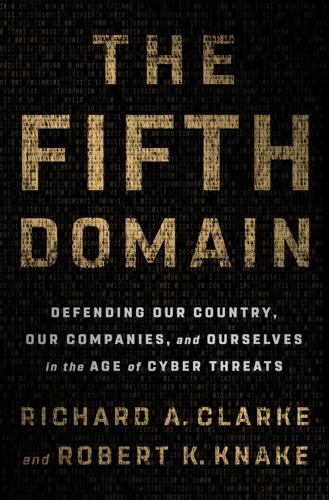
The Fifth Domain: Defending Our Country, Our Companies, and Ourselves in the Age of Cyber Threats
by
Richard A. Clarke
and
Robert K. Knake
Published 15 Jul 2019
According to Dutch police, the Russian military personnel were in possession of taxi receipts from GRU headquarters to Moscow airport, thus proving that business expenses are the bane of every organization, even cyber-war units. Whether or not you call all of that activity cyber war, it is objectively a lot of damage being done by a military organization. Much of it fits the definition we suggested in Cyber War in 2010 (damage, disruption, and destruction of physical objects caused by a nation-state-created cyberattack). Back then there were commentators and critics who thought such predictions were hyperbolic.
…
He seeks to divide Americans from one another, to divide Britain from the European Union, to divide Turkey from NATO, to divide Catalonia from the rest of Spain, to divide parts of Ukraine from the rest of the country, etc. Hybrid war includes cyber war, of every sort. It also includes classical intelligence operations to buy influence, paramilitary activity, and diplomacy. It is everything short of major armed conflict. We, however, are going to focus on the cyber-war components. When the potential for cyber war began to emerge in the 1990s, the U.S. military called it “information warfare.” The problem with that was that they had already called the massive propaganda operations of the Cold War “information warfare” too.
…
After a briefing in a small white-and-gold ballroom meant to be reminiscent of eighteenth-century Versailles, we were ushered into a hall next door, a vast twenty-first-century space filled with computer racks and purple lights. We had one question in mind: Was artificial intelligence (AI) the revolutionary tool that would finally give cyber defense the advantage? We will return to Las Vegas in a bit, but first let’s put in perspective the introduction of AI into cyber-war. The ongoing low-grade cyber wars around the world are not static. Both offense and defense are forever developing tools or, as in the case of AI, entirely new classes of weapons. Having new technologies hit the battlefield during a period of conflict is not unusual. During World War II, warring nations spent six years engaged in the most destructive campaigns in human history, killing millions and wiping out hundreds of cities.

The New Digital Age: Transforming Nations, Businesses, and Our Lives
by
Eric Schmidt
and
Jared Cohen
Published 22 Apr 2013
mass of prominent Estonian websites: Ian Traynor, “Russia Accused of Unleashing Cyberwar to Disable Estonia,” Guardian (Manchester), May 16, 2007, http://www.guardian.co.uk/world/2007/may/17/topstories3.russia. Estonia is often called the most wired country on Earth: Joshua Davis, “Hackers Take Down the Most Wired Country in Europe,” Wired, August 21, 2007, http://www.wired.com/politics/security/magazine/15-09/ff_estonia?currentPage=all. Urmas Paet, accused the Kremlin directly: Doug Bernard, “New Alarm Bells, and Old Questions, About the Flame Virus and Cyber-War,” VOA (blog), May 30, 2012, http://blogs.voanews.com/digital-frontiers/tag/cyber-war/. NATO and European Commission experts were unable to find evidence: “Estonia Has No Evidence of Kremlin Involvement in Cyber Attacks,” RIA Novosti (Moscow), June 9, 2007, http://en.rian.ru/world/20070906/76959190.html.
…
For our purposes, we’ll use the definition of cyber warfare offered by the former U.S. counterterrorism chief Richard Clarke: actions by a nation-state to penetrate another nation’s computers or networks for the purposes of causing damage or disruption.4 Cyber attacks—including digital espionage, sabotage, infiltration and other mischief—are, as we established earlier, very difficult to trace and have the potential to inflict serious damage. Both terrorist groups and states will make use of cyber-war tactics, though governments will focus more on information-gathering than outright destruction. For states, cyber war will primarily meet intelligence objectives, even if the methods employed are similar to those used by independent actors looking to cause trouble. Stealing trade secrets, accessing classified information, infiltrating government systems, disseminating misinformation—all traditional activities of intelligence agencies—will make up the bulk of cyber attacks between states in the future.
…
remains to be seen, but the fact that this will be feasible says something significant about the diffusion of state power in the digital age. Digital Provocation and Cyber War No discussion on the future of connected states would be complete without a look at the worst things they’ll do to each other: namely, launch cyber wars. Cyber warfare is not a new concept, nor are its parameters well established. Computer security experts continue to debate how great the threat is, what it looks like and what actually constitutes an act of cyber war. For our purposes, we’ll use the definition of cyber warfare offered by the former U.S. counterterrorism chief Richard Clarke: actions by a nation-state to penetrate another nation’s computers or networks for the purposes of causing damage or disruption.4 Cyber attacks—including digital espionage, sabotage, infiltration and other mischief—are, as we established earlier, very difficult to trace and have the potential to inflict serious damage.
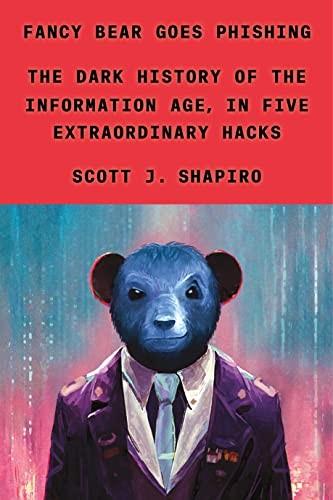
Fancy Bear Goes Phishing: The Dark History of the Information Age, in Five Extraordinary Hacks
by
Scott J. Shapiro
now made public: 50 USC §1872 (a). Advocates: 50 USC §1803(i)(2). annual statistics: 50 USC §1873. Richard Clarke published: Richard Clarke and Robert Knake, Cyber War (New York: Ecco, 2010), 67. For a contrary view, see Thomas Rid, “Cyber War Will Not Take Place,” Journal of Strategic Studies 35 (2012): 1. apply it to cyberwar: On the history of cyber-conflict, see Healey, A Fierce Domain; Fred Kaplan, Dark Territory: The Secret History of Cyber War (New York: Simon and Schuster, 2016); Ben Buchanan, The Hacker and the State: Cyber Attacks and the New Normal of Geopolitics (Cambridge, MA: Harvard University Press, 2020); Adam Segal, The Hacked World Order: How Nations Fight, Trade, Maneuver, and Manipulate in the Digital Age (New York: Public Affairs, 2015); Kim Zetter, Countdown to Zero Day (New York: Crown, 2014); Andy Greenberg, Sandworm (New York: Doubleday, 2019).
…
In 2010, Richard Clarke published a bestselling book entitled Cyber War, in which he warned about the impending dangers. He described a cyber blitzkrieg where hackers overtake the Pentagon’s network, destroy refineries and chemical plants, ground all air travel, unplug the electrical grid, throw the global banking system into crisis, and kill thousands immediately. How easy would this be? “A sophisticated cyberwar attack by one of several nation-states could do that today, in fifteen minutes,” Clarke answered. How concerned should we be about cyberwar? Was Clarke right about the threat? And what might we do to reduce the risk of the digital Armageddon he describes?
…
Russian hacking of the United States: The first known hacking operation conducted by the Russian Federation against the United States began in 1996. The FBI investigation to uncover the hacks was called Moonlight Maze. Newsweek staff, “We Are in the Middle of a Cyberwar,” Newsweek, September 19, 1999, https://www.newsweek.com/were-middle-cyerwar-166196. See also Fred Kaplan, Dark Territory: The Secret History of Cyber War (New York: Simon and Schuster, 2016), 78–88; Juan Andres Guerrero-Saade et al., “Penquin’s Moonlit Maze: The Dawn of Nation-State Digital Espionage,” Securelist, Kaspersky Lab, April 3, 2017, https://ridt.co/d/jags-moore-raiu-rid.pdf.
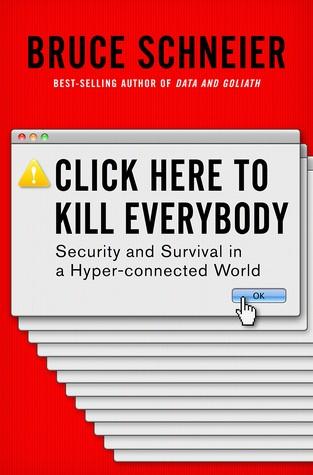
Click Here to Kill Everybody: Security and Survival in a Hyper-Connected World
by
Bruce Schneier
Published 3 Sep 2018
Anthony Faiola (6 Jan 2016), “Germany springs to action over hate speech against migrants,” Washington Post, https://www.washingtonpost.com/world/europe/germany-springs-to-action-over-hate-speech-against-migrants/2016/01/06/6031218e-b315-11e5-8abc-d09392edc612_story.html. 68Some say cyberwar is coming: Richard Clarke and Robert K. Knake (Apr 2010), Cyber War: The Next Threat to National Security and What to Do about It, Harper Collins, https://books.google.com/books?id=rNRlR4RGkecC. 68Some say cyberwar is here: David E. Sanger (2018), The Perfect Weapon: War, Sabotage, and Fear in the Cyber Age, Crown, https://books.google.com/books?id=htc7DwAAQBAJ. 68Some say cyberwar is everywhere: Fred Kaplan (2016), Dark Territory: The Secret History of Cyber War, Simon & Schuster, https://books.google.com/books?id=q1AJCgAAQBAJ. 68In truth, “cyberwar” is a term: Probably the best consensus definition is in the Tallinn Manual.
…
To accomplish all this espionage, surveillance, and control, nation-states are making use of the Internet’s insecurities, as I’ll talk about more in Chapter 9. This isn’t going away anytime soon, and will continue to be one of the driving forces behind nations’ Internet+ security policies. CYBERWAR IS THE NEW NORMAL Some say cyberwar is coming. Some say cyberwar is here. Some say cyberwar is everywhere. In truth, “cyberwar” is a term that everyone uses, that no one agrees on, and that has no agreed-upon definition. But whatever we’re calling it, countries are using the inherent insecurity of the Internet to attack each other. They’re prioritizing the ability to attack over the ability to defend, which helps perpetuate an insecure Internet for all of us.
…
Security Response Attack Investigation Team (20 Oct 2017), “Dragonfly: Western energy sector targeted by sophisticated attack group,” Symantec Corporation, https://www.symantec.com/connect/blogs/dragonfly-western-energy-sector-targeted-sophisticated-attack-group. 69In 2016, the Iranians did the same thing: Joseph Berger (25 Mar 2016), “A dam, small and unsung, is caught up in an Iranian hacking case,” New York Times, http://www.nytimes.com/2016/03/26/nyregion/rye-brook-dam-caught-in-computer-hacking-case.html. 69Experts surmise that these operations: United States Computer Emergency Readiness Team (20 Oct 2017), “Alert (TA17-293A): Advanced persistent threat activity targeting energy and other critical infrastructure sectors,” https://www.us-cert.gov/ncas/alerts/TA17-293A. 69“preparing the battlefield”: Seymour M. Hersh (7 Jul 2008), “Preparing the battlefield,” New Yorker, https://www.newyorker.com/magazine/2008/07/07/preparing-the-battlefield. 69It’s not just the stronger powers: Kertu Ruus (2008), “Cyber war I: Estonia attacked from Russia,” European Affairs 9, no. 1–2, http://www.europeaninstitute.org/index.php/component/content/article?id=67:cyber-war-i-estonia-attacked-from-russia. 69Iran attacked Las Vegas’s Sands Hotel: Benjamin Elgin and Michael Riley (12 Dec 2014), “Now at the Sands Casino: An Iranian hacker in every server,” Bloomberg, http://www.businessweek.com/articles/2014-12-11/iranian-hackers-hit-sheldon-adelsons-sands-casino-in-las-vegas. 69These include the US, the UK: The industry name for these kinds of attackers is APT: advanced persistent threat. 69They are the elite few: Ben Buchanan (Jan 2017), “The legend of sophistication in cyber operations,” Harvard Kennedy School Belfer Center for Science and International Affairs, https://www.belfercenter.org/publication/legend-sophistication-cyber-operations. 70Both of these tiers of countries: Scott DePasquale and Michael Daly (12 Oct 2016), “The growing threat of cyber mercenaries,” Politico, https://www.politico.com/agenda/story/2016/10/the-growing-threat-of-cyber-mercenaries-000221. 70If an isolated and heavily sanctioned country: David E.

The Hacker and the State: Cyber Attacks and the New Normal of Geopolitics
by
Ben Buchanan
Published 25 Feb 2020
For technical analysis, see Sergei Shevchenko, “Two Bytes to $951m,” BAE Systems Threat Research Blog, April 25, 2016; Kate Kochetkova, “What Is Known About the Lazarus Group: Sony Hack, Military Espionage, Attacks on Korean Banks and Other Crimes,” Kaspersky Daily, February 24, 2016; “Operation Blockbuster,” Novetta, 2016. 8. Choe Sang-Hun, “North Korea Urgently Needs Food Aid After Worst Harvest in Decade, U.N. Says,” New York Times, May 3, 2019. 9. Cyber coercion has been the subject of a great deal of academic discussion. For examples, see Thomas Rid, Cyber War Will Not Take Place (New York: Oxford University Press, 2013); Erik Gartzke, “The Myth of Cyberwar: Bringing War in Cyberspace Back Down to Earth,” International Security 38, no. 2 (2013): 41–73; Brandon Valeriano, Benjamin Jensen, and Ryan C. Maness, Cyber Strategy: The Evolving Character of Power and Coercion (New York: Oxford University Press, 2018). 10.
…
Levin, “When the Great Power Gets a Vote: The Effects of Great Power Electoral Interventions on Election Results,” International Studies Quarterly 60, no. 2 (2016): 189–202. 3. Kenneth Geers, ed., Cyber War in Perspective: Russian Aggression against Ukraine (Tallinn, Estonia: NATO Cooperative Cyber Defence Center of Excellence, 2015), ch. 6; Ben Buchanan and Michael Sulmeyer, “Hacking Chads: The Motivations, Threats, and Effects of Electoral Insecurity,” paper, Cyber Security Project, Belfer Center for Science and International Affairs, October 2016; Mark Clayton, “Ukraine Election Narrowly Avoided ‘Wanton Destruction’ from Hackers,” Christian Science Monitor, June 17, 2014; Andy Greenberg, Sandworm: A New Era of Cyberwar and the Hunt for the Kremlin’s Most Dangerous Hackers (New York: Doubleday, 2019): 46–47. 4.
…
In 2018, Cyber Command announced a shift to a more aggressive approach and received new authorities to more routinely conduct clandestine military cyber operations.29 The new strategy seeks what the Command calls “persistent engagement,” as part of a daily “agreed competition” with other states.30 The director of the NSA and commander of Cyber Command, Paul Nakasone, notes that adversaries act similarly below the threshold of war, “gaining strategic advantage through competition without triggering armed conflict.”31 Other American officials, including former White House officials, likewise hint at the possibility of American attacks on adversaries’ critical infrastructure, saying, “we don’t want to take any options for ourselves off the table.”32 The strategy of persistent engagement and the normalization of powerful cyber attacks offer notable contrast to the era when policymakers and pundits feared catastrophic cyber war and treated every incident with alarm. For instance, in one of the earliest examples of public state-sponsored espionage—an effort called Moonlight Maze—Russian hackers penetrated a range of unclassified American networks and stole gigabytes of information. In 1999, in a secret session in the midst of the operation, Deputy Secretary of Defense John Hamre put it bluntly to Congress: “We’re in the middle of a cyber war.”33 In hindsight, Moonlight Maze pales in comparison to every case discussed in this book.
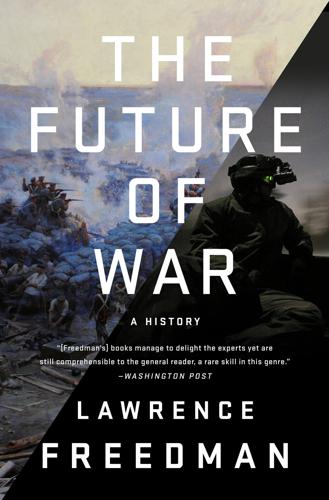
The Future of War
by
Lawrence Freedman
Published 9 Oct 2017
Lines of light ranged in the nonspace of the mind, clusters and constellations of data. Like city lights, receding. WILLIAM GIBSON, Neuromancer, 19841 The other form of information warfare was to interfere with the information flows necessary to keep modern military and civilian systems working. In this respect it was as much an aspect of ‘cyber war’ as ‘hybrid war’. The idea of cyberwar was a natural inference from the digital revolution. If all military activity depended on the rapid collection, processing, and transmission of data then should not that be as important a focus of attention as launching strikes or blunting enemy attacks? What if one side suddenly found itself in the dark, with screens either blank or full of misleading information, and was unable to send out orders to local commanders or else had these orders substituted by false instructions?
…
The human role was likely to be to ‘stand helplessly by as a struggle rages between robot armies and navies, and air and rocket forces’.9 In the first article to talk of ‘cyberwars’, published in 1987, robots dominated the scene. They were fearless and irresistible, pushing away any poor humans sent to confront them. If everything was automated then future wars would be between machines with artificial brains, with their controllers hidden away in command bunkers.10 Cyberwar dominated by robots that ‘do much of the killing and destroying without direct instructions from human operators’ was also the theme of an article in the Bulletin of Atomic Scientists in 1992.
…
New York: Knopf, 2017. Arnett, Eric. ‘Hyperwar’. Bulletin of the Atomic Scientists 48.7 (1992). Arquilla, John, and David Ronfeldt. ‘Cyberwar is Coming!’ Comparative Strategy 12.2 (1993). eds. Networks and Netwars: The Future of Terror, Crime, and Militancy. Santa Monica, CA: RAND, 2001. Available: www.rand.org/publications/MR/MR1382/. . Swarming and the Future of Conflict, Santa Monica: RAND Corporation, 2005. Arquilla, John. ‘The Computer Mouse that Roared: Cyberwar in the Twenty-First Century’. The Brown Journal of World Affairs 18.1 (2011): 39–48 Arreguın-Toft, Ivan. ‘How the Weak Win Wars: A Theory of Asymmetric Conflict’.

Black Code: Inside the Battle for Cyberspace
by
Ronald J. Deibert
Published 13 May 2013
Then it was introduced to the public and it was wrong … to introduce it in the same way.” See Vivian Yeo, “Microsoft OneCare was ‘Good Enough’ ” ZDNet, October 16, 2009, http://www.zdnet.com/microsoft-onecare-was-good-enough-2062058697. 2 The former U.S. counterterrorism czar: Richard Clarke warns about the growing cyber-war threat in Richard A. Clarke and Robert K. Knake, Cyber War: The Next Threat to National Security and What to Do About It (New York: HarperCollins, 2010). Researchers warn against the alarmist rhetoric about cyber threats and the emergence of a cyber-industrial complex in the United States in Jerry Brito and Tate Watkins, Loving the Cyber Bomb?
…
David Perera traces the history of the term “Electronic Pearl Harbor” from its first public usage in 1996 to the present in “Stop Saying ‘Cyber Pearl Harbor,’ FierceGovernmentIT, June 13, 2012, http://www.fiercegovernmentit.com/story/stop-saying-cyber-pearl-harbor/2012–06–13. Thomas Rid argues that cyber war is unlikely to occur in the future in “Cyber War Will Not Take Place,” Journal of Strategic Studies 35, no. 1 (2012). 3 Kaspersky was back in the news: Kaspersky Lab’s announcement on the discovery of Flame in “Kaspersky Lab and ITU Research Reveals New Advanced Cyber Threat,” is at Kaspersky Lab, May 28, 2012, http://www.kaspersky.com/about/news/virus/2012/Kaspersky_Lab_and_ITU_Research_Reveals_New_Advanced_Cyber_Threat.
…
They found “the number of security flaws found within ten months is far bigger than the number of flaws found during the whole previous period starting from 2005.” Positive Technologies documented its findings in Yury Goltsev et al., SCADA Safety in Numbers, Positive Technologies, 2012, available at: www.ptsecurity.com/download/SCADA_analytics_english.pdf. 15 “Cyberwar is very different from nuclear war …”: Fred Kaplan, “Why the United States Can’t Win a Cyberwar,” Slate, June 8, 2012, http://www.slate.com/articles/news_and_politics/war_stories/2012/06/obama_s_cyber_attacks_on_iran_were_carefully_considered_but_the_nuclear_arms_race_offers_important_lessons_.html. 12: THE INTERNET IS OFFICIALLY DEAD 1 The June 2011 RSA breach hit the American security: “Breachfest 2011” is documented in Matt Liebowitz, “2011 Set to Be Worst Year Ever for Security Breaches,” Tech News Daily, June 10, 2011, http://www.technewsdaily.com/2710–2011-worst-year-ever-security-breaches.html. 2 I first read about Narus’s technology: Narus’s 2007 press release is available at “Narus Expands Traffic Intelligence Solution to Webmail Targeting,” Narus, December 10, 2007, http://www.narus.com/index.php/overview/narus-press-releases/press-releases-2007/274-narus-expands-traffic-intelligence-solution-to-webmail-targeting. 3 its sales to Telecom Egypt: Timothy Karr discusses the use of Narus in Egypt in “One U.S.
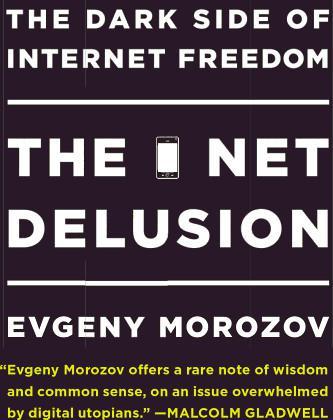
The Net Delusion: The Dark Side of Internet Freedom
by
Evgeny Morozov
Published 16 Nov 2010
Cyber Cold War But it would be disingenuous to suggest that it’s only neoconser vatives who like delving into their former glory to grapple with the digital world. That the intellectual legacy of the Cold War can be repurposed to better understand the growing host of Internet-related emerging problems is an assumption widely shared across the American political spectrum. “To win the cyber-war, look to the Cold War,” writes Mike McConnell, America’s former intelligence chief. “[The fight for Internet freedom] is a lot like the problem we had during the Cold War,” concurs Ted Kaufman, a Democratic senator from Delaware. Freud would have had a good laugh on seeing how the Internet, a highly resilient network designed by the U.S. military to secure communications in case of an attack by the Soviet Union, is at pains to get over its Cold War parentage.
…
“The Logic of Historical Explanation in the Social Sciences.” Comparative Political Studies 42, no. 1 (2009): 114. Mahoney, J., and R. Snyder. “Rethinking Agency and Structure in the Study of Regime Change.” Studies in Comparative International Development 34, no. 2 (1999): 3-32. McConnell, Mike. “Mike McConnell on How to Win the Cyber-War We’re Losing.” Washington Post, February 28, 2010. McFaul, M. “The Fourth Wave of Democracy and Dictatorship: Noncooperative Transitions in the Postcommunist World.” World Politics 54, no. 2 (2002): 212-244. Moe, H. “Everyone a Pamphleteer? Reconsidering Comparisons of Mediated Public Participation in the Print Age and the Digital Era.”
…
Wall Street Journal, May 28, 2010. Pljuwev, Aleksandr. “Poiskovye Sistemy Kak Strategicheskij i Politicheskij Resurs.” Tochka, Jeho Moskvy, January 24, 2010. echo.msk.ru/programs/tochka/651123-echo/ . Scheck, Justin. “Stalkers Exploit Cellphone GPS.” What They Know series, Wall Street Journal, August 3, 2010. Sharma, A. “Cyber Wars: A Paradigm Shift from Means to Ends.” Strategic Analysis 34, no. 1 (2010): 62-73. Simonite, Tom. “Surveillance Software Knows What a Camera Sees.” Technology Review, June 1, 2010. www.technologyreview.com/computing/25439/?a=f. Soar, Daniel. “Short Cuts.” London Review of Books, August 14, 2008.
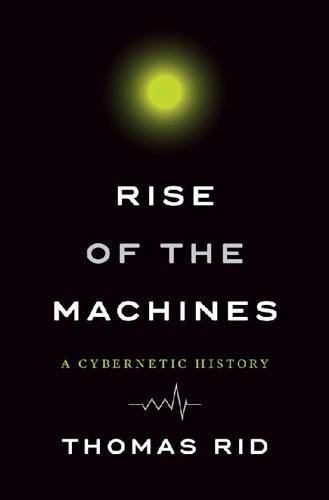
Rise of the Machines: A Cybernetic History
by
Thomas Rid
Published 27 Jun 2016
This great procurement debate gave rise to a new concept of armed conflict: “The two sides are engaged in a long-term struggle that will redefine the relationship of human to machine in matters of war,” the Bulletin of the Atomic Scientists reported in a long article on defense planning in September 1992.19 “The leading military concept of the new era might be called ‘cyberwar,’” the Bulletin observed. In this new cyberwar, “robots do much of the killing and destroying without direct instructions from human operators.” These weapons would be “autonomous,” in one of the phrases then preferred by weapon designers. An example was the navy’s Tomahawk cruise missile. Cyberwar meant crewless tanks, cruise missiles that behave like kamikaze robots, head-to-toe battle gear with microclimate control and hazard protection for the infantry, as well as “anti-missile satellites.”20 Some thought this characterization was too simple.
…
This is what happened with Alice Mary Hilton’s dreams of automation in the early 1960s, with Jaron Lanier’s cyberspace in the early 1990s, with Timothy May’s crypto anarchy in the late 1990s, and, indeed, with John Hamre’s cyberwar around the same time. First a free cyberspace arrived; then it was a vision of the future again. One day the Pentagon was at cyberwar; the next day, cyberwar had not happened yet. Another pattern is an extraordinary appetite for new terms. New myths need new words, pointed out Roland Barthes, an influential mid-twentieth-century philosopher and literary theorist.4 This is especially true for technology myths that carry a promise of a new future.
…
WAR 1.Jonathan Post, “Cybernetic War,” Omni 2, no. 5 (May 1979): 45. 2.Apple, advertisement, Omni 2, no. 8 (August 1979): 29. 3.Dylan Tweney, “Sept. 24, 1979: First Online Service for Consumers Debuts,” Wired, September 24, 2009. 4.Post, “Cybernetic War,” 45. 5.Ibid. 6.Ibid., 46. 7.Ibid., 48. 8.Ibid. 9.Ibid., 49. 10.Ibid., 45. 11.Ibid., 104. 12.Frans Osinga, Science, Strategy and War: The Strategic Theory of John Boyd (London: Routledge, 2007), 21–22. 13.See ibid., 72, especially notes. 14.US Army, Field Manual 100-5 (Washington, DC: Headquarters of the Army, 1982), 8-5. 15.Owen Davies, “Robotic Warriors Clash in Cyberwars,” Omni 9, no. 4 (January 1987). 16.Ibid., 76. 17.Ibid., 78. 18.Henry G. Gole, General William E. DePuy (Lexington: University Press of Kentucky, 2008), 297. 19.Eric H. Arnett, “Hyperwar,” Bulletin of the Atomic Scientists 48, no. 7 (September 1992): 15. 20.Ibid. 21.John Arquilla and David Ronfeldt, “Cyberwar Is Coming!” Comparative Strategy 12, no. 2 (1993): 146. 22.Ibid., 162. 23.See David Ronfeldt, “Cyberocracy Is Coming,” Information Society 8 (1991): 243n1. 24.Arquilla and Ronfeldt, “Cyberwar Is Coming!” 147. 25.John Arquilla and David Ronfeldt, In Athena’s Camp (Santa Monica, CA: Rand, 1997), 155. 26.Arquilla and Ronfeldt, “Cyberwar Is Coming!”

The New Rules of War: Victory in the Age of Durable Disorder
by
Sean McFate
Published 22 Jan 2019
A much-read Vanity Fair article claimed the episode represented the future of war, declaring: “Stuxnet is the Hiroshima of cyber-war.”9 In reality, Stuxnet had no effect on the Iranian nuclear program. It did not destroy it or even meaningfully delay it. The Iranians simply replaced the broken centrifuges, ran an antivirus program, and went back to developing nuclear weapons. Stuxnet is pure hype. Cyber is important, but not in ways people think. It gives us new ways of doing old things: sabotage, theft, propaganda, deceit, and espionage. None of this is new. Cyberwar’s real power in modern warfare is influence, not sabotage. Using the internet to change people’s minds is more powerful than blowing up a server, and there’s nothing new about propaganda.
…
One Stanford University experiment involved feeding pictures of objects into a machine-learning algorithm, so it could learn to identify them. When finished, it made goofs even a child would not make. For instance, one picture showed a baby clutching a toothbrush, which the machine labeled “A young boy is holding a baseball bat.”5 The rise of the machines will not happen anytime soon. Cyberwar doomsayers are the biggest con artists among technophiles—a genuine achievement. Despite what experts claim, nobody really knows what “cyber” means, other than ones and zeroes in space.6 So far, no one has been killed by a cyberweapon, but such facts do not stop these futurists from dreaming up Armageddon scenarios in which a single hacker shuts down New York City, the Eastern Seaboard, or the planet.
…
Despite what experts claim, nobody really knows what “cyber” means, other than ones and zeroes in space.6 So far, no one has been killed by a cyberweapon, but such facts do not stop these futurists from dreaming up Armageddon scenarios in which a single hacker shuts down New York City, the Eastern Seaboard, or the planet. They draw inspiration from movies like Skyfall, a James Bond film in which every time someone touches a keyboard, that person becomes a god. But as any real hacker will tell you, hacking is boring and makes for bad TV. Hollywood’s hyperbolic portrayals of cyberwar influence Washington at the highest levels. Back in 2011, Leon Panetta, then the CIA director, warned Congress: “The next Pearl Harbor could very well be a cyberattack.”7 In 2017, the Department of Energy declared that America’s power grid “faces imminent danger” of a cyberattack that could produce nationwide blackouts, causing billions in damage and threatening lives.
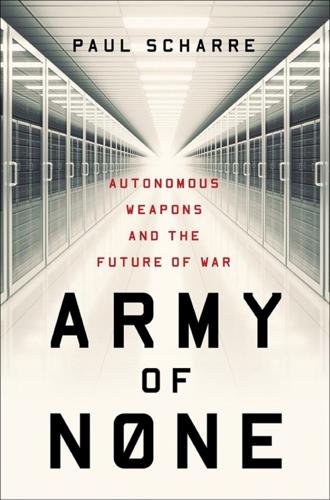
Army of None: Autonomous Weapons and the Future of War
by
Paul Scharre
Published 23 Apr 2018
,” WIRED, November 11, 2014, https://www.wired.com/2014/11/what-is-a-zero-day/. 213 Stuxnet had four: Michael Joseph Gross, “A Declaration of Cyber War.” Vanity Fair, March 2011, https://www.vanityfair.com/news/2011/03/stuxnet-201104. 214 programmable logic controllers: Gross, “A Declaration of Cyber War.” Nicolas Falliere, Liam O Murchu, and Eric Chien, “W32.Stuxnet Dossier,” Symantec Security Response, February 2011, https://www.symantec.com/content/en/us/enterprise/media/security_response/whitepapers/w32_stuxnet_dossier.pdf. 214 two encrypted “warheads”: Gross, “A Declaration of Cyber War.” 214 Computer security specialists widely agree: Falliere et al., “W32.Stuxnet Dossier,” 2, 7. 214 Natanz nuclear enrichment facility: Gross, “A Declaration of Cyber War.”
…
Sanger, “In a Computer Worm, a Possible Biblical Clue,” New York Times, September 24, 2010, http://www.nytimes.com/2010/09/30/world/middleeast/30worm.html. 214 Security specialists have further speculated: Ibid. Gross, “A Declaration of Cyber War.” 215 “While attackers could control Stuxnet”: Falliere et al., “W32.Stuxnet Dossier,” 3. 215 “collateral damage”: Ibid, 7. 215 spread via USB to only three other machines: Ibid, 10. 215 self-terminate date: Ibid, 18. 215 Some experts saw these features as further evidence: Gross, “A Declaration of Cyber War.” 215 “open-source weapon”: Patrick Clair, “Stuxnet: Anatomy of a Computer Virus,” video, 2011, https://vimeo.com/25118844. 215 blueprint for cyber-weapons to come: Josh Homan, Sean McBride, and Rob Caldwell, “IRONGATE ICS Malware: Nothing to See Here . . .
…
Patrick Lin, an ethicist at California Polytechnic State University who has written extensively on autonomy in both military and civilian applications, warned at the United Nations in 2015, “autonomous cyber weapons could automatically escalate a conflict.” As Tousley acknowledged, cyberspace could be an area where automatic reactions between nation-states happen in milliseconds. Automated hacking back could cause a flash cyberwar that rapidly spirals out of control. Automated hacking back is a theoretical concept, and there are no publicly known examples of it occurring. (Definitively saying something has not happened in cyberspace is difficult, given the shadowy world of cyberwar.) The third intersection between cyber- and autonomous weapons is increasingly autonomous offensive cyberweapons. Computer security researchers have already demonstrated the ability to automate “spear phishing” attacks, in which unwitting users are sent malicious links buried inside seemingly innocuous emails or tweets.

This Is How They Tell Me the World Ends: The Cyberweapons Arms Race
by
Nicole Perlroth
Published 9 Feb 2021
“But the manner in which the Russian hackers are targeting the companies also gives them the opportunity to seize control of industrial control systems from afar, in much the same way the U.S. and Israel were able to use the Stuxnet computer worm in 2009 to take control of an Iranian nuclear facility.” Later researchers changed their tune. The real goal wasn’t intellectual property theft; these attacks were the planning stages for cyberwar. For an account of Russia’s calls for an international cyberweapons ban, see Andrew E. Kramer and Nicole Perlroth, “Expert Issues a Cyberwar Warning,” New York Times, June 3, 2012. For Russian anxieties about cyber escalation, see Timothy Thomas, “Three Faces of the Cyber Dragon: Cyber Peace Activist, Spook, Attacker,” Foreign Military Studies Office, 2012. For details of Russia’s Internet of Things—or IoT—market, see MarketWatch, “Russia Internet of Things (IoT) Market Is Expected to Reach $74 Billion By 2023,” October 17, 2019.
…
Kim Zetter’s book, Countdown to Zero Day: Stuxnet and the Launch of the World’s First Digital Weapon (Broadway Books), was invaluable in fleshing out the details of the hunt to decipher Stuxnet. Eric Chiu and Liam O’Murchu at Symantec patiently took every call and read over me as I described the zero-days that formed the entry points in Stuxnet. Fred Kaplan’s book, Dark Territory: The Secret History of Cyber War (Simon & Schuster, 2016), also provided useful context. I found myself frequently citing Joe Menn at Reuters, whose cybersecurity coverage is first rate. Chris Bing and Joel Schectman, also at Reuters, scooped me with their definitive 2019 report on “Project Raven.” The dialogue between Walter Deeley and the NSA’s analysts quoted in the Project Gunman chapter was taken from Eric Haseltine’s book, The Spy in Moscow Station: A Counterspy’s Hunt for a Deadly Cold War Threat (Thomas Dunne Books, 2019).
…
For Brad Smith’s remarks to the United Nations, see “Remarks on Cybersecurity and a Digital Geneva Convention,” United Nations, November 9, 2017: www.youtube.com/watch?v=EMG4ZukkClw. For Richard Clarke’s earlier proposal that countries agree not to conduct cyberattacks on civilian infrastructure, see Richard A. Clarke and Robert K. Knake, Cyber War: The Next Threat to National Security and What to Do about It (HarperCollins, 2010). For a chronicle of Russian cyberattacks on America’s grid, and vice versa, see David E. Sanger and Nicole Perlroth, “U.S. Escalates Online Attacks on Russia’s Power Grid,” New York Times, June 15, 2019. CHAPTER 23: THE BACKYARD Scott Shane and I reported on the long tail of EternalBlue, which included attacks in San Antonio, Texas; Allentown, Pennsylvania; and finally, in the NSA’s own backyard, in Baltimore.

Data and Goliath: The Hidden Battles to Collect Your Data and Control Your World
by
Bruce Schneier
Published 2 Mar 2015
Alexander Klimburg (2 Sep 2014), “Shades of cyber grey: Espionage and attack in cyberspace,” Fletcher Forum of World Affairs, http://www.fletcherforum.org/2014/09/02/klimburg. Modern cyberespionage is a form of cyberattack: It is not, however, “cyberwar.” That term has been way overused in political discourse. For a good antidote, try this book. Thomas Rid (2013), Cyber War Will Not Take Place, Oxford University Press, http://thomasrid.org/no-cyber-war. nationwide Internet blackout: James Bamford (13 Aug 2014), “Edward Snowden: The untold story,” Wired, http://www.wired.com/2014/08/edward-snowden. 30 countries have cyberwar divisions: Even more have cyberwar capabilities. George Mason University School of Public Policy (Feb 2014), “Cyber security export markets 2014,” Virginia Economic Development Partnership, http://exportvirginia.org/wp-content/uploads/2014/02/Report-on-Cyber-Security-Preface.pdf Estonia was the victim: Joshua Davis (21 Aug 2007), “Hackers take down the most wired country in Europe,” Wired, https://web.archive.org/web/20071019223411/http://www.wired.com/politics/security/magazine/15-09/ff_estonia.
…
In 2012, the NSA repeatedly penetrated Syria’s Internet infrastructure. Its intent was to remotely install eavesdropping code in one of the country’s core routers, but it accidentally caused a nationwide Internet blackout. Exfiltrating data and taking out a country’s Internet involve exactly the same operations. Governments are getting into cyberwar big time. About 30 countries have cyberwar divisions in their military: US, Russia, China, the major European countries, Israel, India, Brazil, Australia, New Zealand, and a handful of African countries. In the US, this is led by US Cyber Command inside the Department of Defense. Admiral Michael S. Rogers is in charge of both this organization and the NSA.
…
David E. Sanger (6 May 2013), “U.S. blames China’s military directly for cyberattacks,” New York Times, http://www.nytimes.com/2013/05/07/world/asia/us-accuses-chinas-military-in-cyberattacks.html. sometimes invoking: New York Times (7 May 2013), “China and cyberwar (editorial),” New York Times, http://www.nytimes.com/2013/05/08/opinion/china-and-cyberwar.html. David E. Sanger and Elisabeth Bumiller (31 May 2011), “Pentagon to consider cyberattacks acts of war,” New York Times. http://www.nytimes.com/2011/06/01/us/politics/01cyber.html. more moderate language: Barack Obama (17 Jan 2014), “Obama’s speech on N.S.A. phone surveillance,” New York Times, http://www.nytimes.com/2014/01/18/us/politics/obamas-speech-on-nsa-phone-surveillance.html.

The Road to Unfreedom: Russia, Europe, America
by
Timothy Snyder
Published 2 Apr 2018
In June 2017, after Russia’s victory, Putin spoke for himself, saying that he had never denied that Russian volunteers had made cyberwar against the United States. This was the precise formulation he had used to describe the Russian invasion of Ukraine: that he had never denied that there were volunteers. Putin was admitting, with a wink, that Russia had defeated the United States in a cyberwar. American exceptionalism proved to be an enormous American vulnerability. The Russian ground offensive in Ukraine proved to be more difficult than the concurrent cyberwar against Europeans and Americans. Even as Ukraine defended itself, European and American writers conveyed Russian propaganda.
…
In matters of peace and war, Moscow also took actions that made it harder for Europeans to see Russia as an equal. In April 2007, Estonia was crippled for weeks in a major cyberattack. Although the event was confusing at the time, it was later understood to be the first salvo in a Russian cyberwar against Europe and the United States. In August 2008, Russia invaded its neighbor Georgia and occupied some of its territories. The conventional assault was accompanied by cyberwar: the president of Georgia lost control of his website, Georgian news agencies were hacked, and much of the country’s internet traffic was blocked. Russia invaded Georgia to make European integration impossible for its neighbor, but was in fact renouncing it for itself.
…
Russia under Putin declared war not for cause but because the terms were favorable. Ilyin and other Russian nationalists after him had defined the West as a spiritual threat, whose very existence generated facts that could be harmful or confusing to Russians. By that logic, preemptive cyberwar against Europe and America was justified as soon as it was technically feasible. By 2016, Russian cyberwar had been underway for nearly a decade, though it was largely ignored in American discussions. A Russian parliamentarian said that the American secret services “slept through” as Russia chose the American president, and there was justice in his words.

The Perfect Weapon: War, Sabotage, and Fear in the Cyber Age
by
David E. Sanger
Published 18 Jun 2018
There was “a sort of silence for a moment,” one participant in that meeting recalled, “and you could sense that people were just letting that sink in.” * * * — Something else had sunk in at Fort Meade: Not only were the Russians inside the election infrastructure; they might well be inside the Tailored Access Operations unit, the operations center for America’s cyber wars. In mid-August, when the Democrats were still struggling to figure out what the Russian hackers were doing to them, the NSA discovered that it wasn’t only campaign memos that were suddenly showing up on the Internet. So were samples of the tools the TAO had used to break into the computer networks of Russia, China, and Iran, among others.
…
Not the American attacks on Iran’s and North Korea’s weapons programs; not the North Korean attacks on American banks, a famed Hollywood studio, and the British healthcare system; not the Russian attacks on Ukraine, Europe, and then the core of American democracy. That streak of luck was certain to end soon. But why would Donald Trump, or any of his successors, take the huge risk of escalating a cyberwar by going nuclear? The Pentagon’s recommendation, it turned out, was the prelude to other proposals—delivered to a president who values toughness and “America First”—to use the nation’s powerful cyberweapons far more aggressively. But it was also a reminder of how quickly the fear of devastating cyberattacks has moved from the stuff of science fiction and Die Hard movies to the center of American defense strategy.
…
A bearded computer scientist in his late thirties, Ozment seemed to deliberately cultivate a demeanor suggesting it hadn’t been that long since he graduated from Georgia Tech and that he’d rather be hiking than cracking malware. He lived with his Norwegian wife in a two-story redbrick townhouse in a funky section of Washington, north of the Capitol. He always managed to look like he just walked out of one of the weekend farmers markets in his neighborhood, rather than off the front lines of America’s daily cyberwars. It was an admirable feat, considering he was running the closest thing the US government had to a fire department for cyberattacks. His team in Arlington functioned as the first responders when banks or insurance companies were attacked, utility companies found viruses lurking in their networks and suspected foul play, or incompetent federal agencies—like the Office of Personnel Management—discovered that Chinese intelligence agents were walking off with millions of highly sensitive security-clearance files.
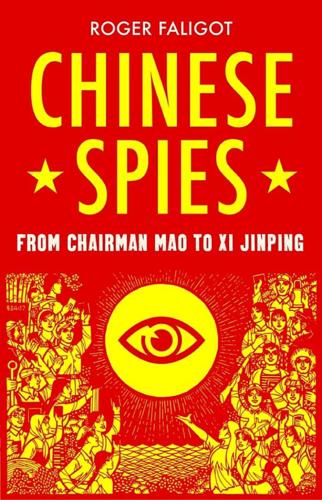
Chinese Spies: From Chairman Mao to Xi Jinping
by
Roger Faligot
Published 30 Jun 2019
In France, Huawei was not allowed to erect 5G antennae close to the Paris headquarters of the Ministry of Defence, while the prime minister’s SGDSN (General Secretariat for Defence and National Security) suspected Huawei of being a Trojan horse that provided Beijing with the ability to freeze 5G networks in case of conflict, which would thereby debilitate connected devices and internet-controlled autonomous vehicles.19 French intelligence (DGSE) uncovered an attempt by Huawei agents to build up a private biographical data system on leaders of the French competitor company Orange, which ironically favoured a strategic alliance with the Chinese firm.20 Together with the Australians, German and other European security services agree that, despite disclaimers by its leaders, Huawei was intimately linked to the PLA interception and cyberwar effort (see chapter 11). This brings us back to our question, which we can now answer: it is perfectly clear how the CCP—and so the PRC—benefits from economic intelligence. Not to mention the purely material gain generated by the corruption that is endemic at the highest state levels. The Taiwan frigate scandal It’s time to talk about corruption.
…
Technicians and cadets must complete linguistic internships not only abroad—perhaps truly as innocent students of the language and literature of linguistically interesting countries—but also in remote areas of China, Mongolia and Xinjiang, where listening posts are located, and where it is important both to know the local dialects and to learn to withstand the harsh mountain climate. The PLA4 was transferred in 1991 from PLA3 headquarters at Xionghongqi to Tayuan, near the Summer Palace in Beijing. It is now much bigger. There is a straightforward reason for this: the PLA4, responsible for electronic warfare, carries out cyber-war operations with the aid of naval and air capacity, including new reconnaissance planes—specifically, Chinese AWACS planes of Russian origin, and Ilyushin II-76 airlifters equipped with (since 1997) an Israeli-made airborne early warning system. On 1 April 2001, the service received an unexpected gift, when Chinese fighters forced a US navy spy plane to land on Hainan Island in southern China, leading to a standoff between Washington and Beijing.
…
These were the PLA2, then led by General Luo Yudong; the Communications Department (Tongxin Bu), led by General Xu Xiaoyan; the PLA3 led by Qiu Rulin; the defence ministry’s Department of Technological Intelligence; the Institute of Military Science’s Department of Special Technologies, nicknamed “Department 553”; and the 10th and 13th Bureaus of the Guoanbu, responsible for communications. The taskforce was led by Xie Guang, deputy minister of COSTIND, who was one of the principal theoreticians of cyber-war.30 Trained technicians were needed, too. General Si Laiyi was charged with setting up the PLA University of Science and Technology, which involved the merger of a number of telecommunications research institutions to train cadres in cyber-warfare (Xinxi Zhanzheng). This involved a thorough practical and theoretical training, using books such as Qiao Liang and Wang Xiangsui’s Unrestricted Warfare and various Western books including Wars in Cyberspace by the French journalist Jean Guisnel, which was published in Chinese in 2000.31 After they graduated, cadets and technicians of all ranks moved into action, taking part in internal simulations of war games and in real attacks such as those carried out against Japan and against the German Chancellery in 2007.

The End of Big: How the Internet Makes David the New Goliath
by
Nicco Mele
Published 14 Apr 2013
Qtd. in http://mediacdn.reuters.com/media/us/editorial/reuters-magazine/reuters-aspen-2012.pdf 16. http://news.cnet.com/8301-31921_3-20062755-281.html 17. http://www.bloomberg.com/news/2011-09-09/terrorism-after-bin-laden-seeks-smaller-targets.html 18. http://gizmodo.com/5927379/the-secret-online-weapons-store-thatll-sell-anyone-anything 19. http://www.reuters.com/article/2012/05/23/us-arms-navies-smallships-idUSBRE84M0PW20120523 20. http://www.armytimes.com/legacy/new/0-292925-1060102.php 21. http://krebsonsecurity.com/2011/01/ready-for-cyberwar/ 22. http://www.brookings.edu/research/articles/2011/08/15-cybersecurity-singer-shachtman 23. http://www.washingtonpost.com/national/national-security/cyber-intruder-sparks-response-debate/2011/12/06/gIQAxLuFgO_print.html 24. Seymour Hersh, “The Online Threat: Should We Be Worried about a Cyber War?,” The New Yorker, November 1, 2010; http://www.newyorker.com/reporting/2010/11/01/101101fa_fact_hersh?currentPage=all. 25. Ibid. 26. http://www.wired.com/threatlevel/2010/04/cyberwar-richard-clarke/ 27. www.youtube.com/watch?
…
Our think tanks and national security policy-making bodies remain mired in approaches that fail to adequately address or even understand the threats posed by individuals with an Internet connection, a laptop, and a reasonable degree of technical expertise. The former Clinton administration antiterrorism adviser and Bush administration cybersecurity czar Richard Clarke sees cyber war as a major unaddressed policy issue; he is primarily concerned with the potential for a cyber war with China. Despite his status in the national security establishment, his book Cyber War: The Next Threat to National Security and What to Do About It aroused nothing but ridicule in technology circles. Wired magazine’s review noted, “So much of Clarke’s evidence is either easily debunked with a Google search, or so defies common sense, that you’d think reviewers of the book would dismiss it outright.
…
The second virus is called Flame, and it has not been definitively linked to the United States, although the evidence is strong. These proactive acts of “cyber war,” while significant programming projects, hardly raise the scale of resource-intensive military operations such as designing, building, and maintaining an aircraft carrier. Comparatively small, nimble teams can carry out cyber war. But as computer security expert and investigative journalist Chris Soghoian has warned, the way these viruses have been created and released into the wild exhibits a blindness to the unintended consequences of cyber war. Soghoian has suggested that Flame exposes the average citizen to a significant level of security risk on their personal computer by undermining automatic security updates, not to mention the growing consumer privacy concerns.27 As the preceding discussion suggests, the term “nonstate actor” has its limitations; it’s conceivable that every technically literate person with a laptop and an Internet connection might be able to influence global geopolitics as a nonstate actor.

Active Measures: The Secret History of Disinformation and Political Warfare
by
Thomas Rid
Igor Protsyk, “Question Pawn Storm,” email to Thomas Rid, April 26, 2018, 18:08 EST. 19. “ЦВК: Проведення виборів на Донеччині та Луганщині стає дедалі складнішим,” Українська правда, May 17, 2014. 20. Margaret Coker and Paul Sonne, “Ukraine: Cyberwar’s Hottest Front,” The Wall Street Journal, November 10, 2015, p. A1. 27. Sofacy 1. Margaret Coker and Paul Sonne, “Ukraine: Cyberwar’s Hottest Front,” The Wall Street Journal, November 10, 2015, p. A1. 2. Nikolay Koval, “Revolution Hacking,” in Cyber War in Perspective (Tallinn: NATO CCDCOE, 2015), pp. 55–58. 3. Михаил Зеленский, “Первый канал показал ‘фейковые’ данные о победе Яроша на президентских выборах,” Republic, May 25, 2014, 23:53 (Moscow time), https://web.archive.org/web/20180302214107/https://republic.ru/fast/russia/pervyy-kanal-pokazal-feykovye-dannye-o-pobede-yarosha-na-prezidentskikh-vyborakh-1103324.xhtml; https://www.youtube.com/watch?
…
(Lenin) Whites (monarchist émigrés) Whole Earth Catalog Whole Spy Catalog, The Who’s Who in CIA Why We Fight (1944) Wiesenthal, Simon WikiLeaks Williams, Jake Wired magazine Wisner, Frank Wochenpost, Die Wolf, Louis Wolf, Markus Wolfe, Alan Woll, Matthew Working Group for a Nuclear-Weapons-Free Europe (Arbeitskreis) World Marxist Review World Peace Council World Peace Movement World War II Wrangel, Pyotr X X, the, see Department X X-Agent kit X-Informationen Y Yakushev, Alexander Yanukovych, Victor Yarosh, Dmytro Yefremov, Alexander Yeltsin, Boris Young, John YouTube Z Zapevalov, Vitaly Zavgorodny, Leonid Zeit, Die zero-days ZEUS operation Zeynalova, Irada Zia-ul-Haq, Muhammad Zind, Ludwig Zinoviev letter Zluva, Vaclav Znamya Zorza, Victor ZP/UHVR (Ukrainian Supreme Liberation Council/Foreign Representation) ALSO BY THOMAS RID Rise of the Machines: A Cybernetic History Cyber War Will Not Take Place War and Media Operations: The US Media and the Press from Vietnam to Iraq A NOTE ABOUT THE AUTHOR Thomas Rid is an information security professor at Johns Hopkins University. He testified about disinformation before the U.S. Senate Select Committee on Intelligence. You can sign up for email updates here.
…
Joint warfare of the future would become network-centric and lightning fast, as the Persian Gulf War had demonstrated. Digital shortcuts between sensors and shooters would dispel the fog of war and herald nothing short of a revolution in military affairs. Yet images of military utopia were confronted with dystopian visions of the coming “cyberwar” and an “electronic Pearl Harbor.” The country that invented the internet was uniquely vulnerable to remote attacks. Unbridled optimism predominated in Silicon Valley; pessimism came to dominate the Beltway. Both extremes would benefit active measures operations over the next decade, although for different reasons: utopianism made it easy to run operations undetected; dystopianism made it easy to exaggerate results.

Spies, Lies, and Algorithms: The History and Future of American Intelligence
by
Amy B. Zegart
Published 6 Nov 2021
Department of State, “Joint Comprehensive Plan of Action,” posted January 20, 2009, to January 20, 2017, https://2009-2017.state.gov/e/eb/tfs/spi/iran/jcpoa//index.htm; Arms Control Association, “The Joint Comprehensive Plan of Action (JCPOA) at a Glance,” https://www.armscontrol.org/factsheets/JCPOA-at-a-glance (accessed September 26, 2020). In 2018, the Trump administration unilaterally withdrew from the nuclear deal. 10. Sanger et al., “Mysterious Explosion and Fire Damage”; Guilbert Gates, “How a Secret Cyberwar Program Worked,” New York Times, June 1, 2012, https://archive.nytimes.com/www.nytimes.com/interactive/2012/06/01/world/middleeast/how-a-secret-cyberwar-program-worked.html?ref=middleeast; David E. Sanger, The Perfect Weapon: War, Sabotage, and Fear in the Cyber Age (New York: Crown, 2018), 9, 41. 11. For details, see Kim Zetter, Countdown to Zero Day: Stuxnet and the Launch of the World’s First Digital Weapon (New York: Crown Publishers, 2014); Sanger, Perfect Weapon. 12.
…
Cybersecurity experts at Symantec believe a version of the Stuxnet virus was deployed as early as 2005 but the virus was not publicly discovered until 2010. Jim Finkle, “Researchers Say Stuxnet Was Deployed against Iran in 2007,” Reuters, February 26, 2013, https://www.reuters.com/article/us-cyberwar-stuxnet/researchers-say-stuxnet-was-deployed-against-iran-in-2007-idUSBRE91P0PP20130226. 132. Sanger, Perfect Weapon, 268–85. 133. David Sanger and William Broad, “Trump Inherits a Secret Cyberwar against North Korean Missiles,” New York Times, March 4, 2017, https://www.nytimes.com/2017/03/04/world/asia/north-korea-missile-program-sabotage.html. 134. Robert McMillan, “Hackers Lurked in SolarWinds Email System for at Least 9 Months, CEO Says,” Wall Street Journal, February 2, 2021. 135.
…
But we do know the idea of a cyber threshold of war quickly became irrelevant. Instead, cyber warfare looked a lot more like covert action, operating in the gray zone between war and peace without official government acknowledgment.52 By 2017—just a decade after the DNI threat assessment didn’t mention cyber—cyber war was occurring every day, and it didn’t resemble any war anyone had seen before. While physical warfare involved major mobilizations and strategic strikes—German troops marching into Poland, American atomic bombs dropping in Japan, Iraqi tanks rolling into Kuwait—cyber warfare was more of a bleed-every-minute insidious campaign in which attackers influenced outcomes one hack or Tweet at a time.
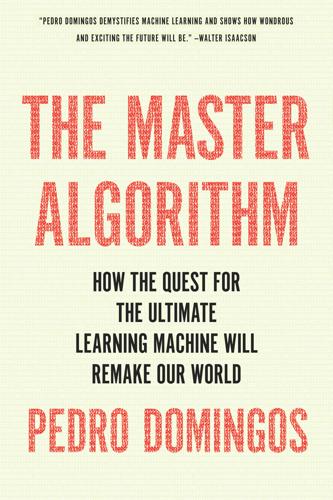
The Master Algorithm: How the Quest for the Ultimate Learning Machine Will Remake Our World
by
Pedro Domingos
Published 21 Sep 2015
“How President Obama’s campaign used big data to rally individual votes,” by the same author (MIT Technology Review, 2013), tells the story of its greatest success to date. Nate Silver’s The Signal and the Noise (Penguin Press, 2012) has a chapter on his poll aggregation method. Robot warfare is the theme of P. W. Singer’s Wired for War (Penguin, 2009). Cyber War, by Richard Clarke and Robert Knake (Ecco, 2012), sounds the alarm on cyberwar. My work on combining machine learning with game theory to defeat adversaries, which started as a class project, is described in “Adversarial classification,”* by Nilesh Dalvi et al. (Proceedings of the Tenth International Conference on Knowledge Discovery and Data Mining, 2004).
…
But machine learning runs into a problem if an attack is the first of its kind and there aren’t any previous examples of it to learn from. Instead, learners build models of normal behavior, of which there’s plenty, and flag anomalies. Then they call in the cavalry (aka system administrators). If cyberwar ever comes to pass, the generals will be human, but the foot soldiers will be algorithms. Humans are too slow and too few and would be quickly swamped by an army of bots. We need our own bot army, and machine learning is like West Point for bots. Cyberwar is an instance of asymmetric warfare, where one side can’t match the other’s conventional military power but can still inflict grievous damage. A handful of terrorists armed with little more than box cutters can knock down the Twin Towers and kill thousands of innocents.
…
M., 138–139 Baldwin effect, 139, 140, 304 Bandit problems, 129–130 Barto, Andy, 221 Bayes, Thomas, 144–145 Bayesian learning, 166–170, 174–175 Bayesian methods, cell model and, 114 Bayesian model averaging, 166–167 Bayesian models, tweaking probabilities, 170–173 Bayesian networks, 24, 156–161, 305–306 Alchemy and, 250 gene regulation and, 159 inference problem and, 161–166 Master Algorithm and, 240, 245 relational learning and, 231 Bayesians, 51, 52–53, 54, 143–175 Alchemy and, 253 further reading, 304–305 hidden Markov model, 154–155 If . . . then . . . rules and, 155–156 inference problem, 161–166 learning and, 166–170 logic and probability and, 173–175 Markov chain, 153–155 Markov networks, 170–173 Master Algorithm and, 240–241, 242 medical diagnosis and, 149–150 models and, 149–153 nature and, 141 probabilistic inference and, 52, 53 See also Bayesian networks Bayes’ theorem, 31–32, 52–53, 143–149, 253 Beam search, 135 “Beer and diapers” rule, 69–70 Belief, probability and, 149 Belief propagation, 161–164, 242, 253 Bell Labs, 190 Bellman, Richard, 188, 220 Bellman’s equation, 220 Berkeley, George, 58 Berlin, Isaiah, 41 Bias, 78–79 Bias-free learning, futility of, 64 Bias-variance decomposition, 301 The Bible Code (Drosnin), 72 Big data, 21 A/B testing and, 227 algorithms and, 7 clustering and, 206–207 relational learning and, 232–233 science, machine learning, and, 14–16 scientific truth and, 40 Big-data systems, 258 Bing, 12 Biology, learning algorithms and, 15 Black swans, 38–39, 158, 232 The Black Swan (Taleb), 38 Blessing of nonuniformity, 189 Board games, reinforcement learning and, 219 Bohr, Niels, 178, 199 Boltzmann distribution, 103–104 Boltzmann machines, 103–104, 117, 250 Boole, George, 104, 175 Boolean circuits, 123, 136 Boolean variable, 149 Boosting, 238 Borges, Jorge Luis, 71 Box, George, 151 Brahe, Tycho, 14, 131 Brahe phase of science, 39–40 Brain learning algorithms and, 26–28 mapping, 118 number of connections in, 94–95 reverse engineering the, 52, 302 S curves and, 105 simulating with computer, 95 spin glasses and, 102–103 BRAIN initiative, 118 Breiman, Leo, 238 Brin, Sergey, 55, 227, 274 Bryson, Arthur, 113 Bucket brigade algorithm, 127 Building blocks, 128–129, 134 Buntine, Wray, 80 Burglar alarms, Bayesian networks and, 157–158 Burks, Arthur, 123 Burns, Bob, 206 Business, machine learning and, 10–13 C. elegans, 118 Cajal, Santiago Ramón y, 93–94 Caltech, 170 CancerCommons.org, 261 Cancer cure algorithm for, 53–54 Bayesian learning and, 174 inverse deduction and, 83–85 Markov logic network and, 249 program for (CanceRx), 259–261, 310 Cancer diagnosis, 141 Cancer drugs predicting efficacy of, 83–84 relational learning and models for, 233 selection of, 41–42 CanceRx, 259–261, 310 Capital One, 272 Carbonell, Jaime, 69 Carnap, Rudolf, 175 Cars driverless, 113, 166, 172, 306 learning to drive, 113 Case-based reasoning, 198, 307 Catch Me If You Can (film), 177 Cause and effect, Bayes’ theorem and, 145–149 Cell model of, 114–115 relational learning and workings of, 233 Cell assembly, 94 Cell phone, hidden Markov models and, 155 Centaurs, 277 Central Dogma, 83 Cerebellum, 27, 118 Chance, Bayes and, 145 Chaos, study of, 30 Checkers-playing program, 219 Cholera outbreak, London’s, 182–183 Chomsky, Noam, 36–38 Chrome, 266 Chunking, 223–227, 254, 309 Circuit design, genetic programming and, 135–136 Classes, 86–87, 209, 257 Classifiers, 86–87, 127 Master Algorithm and, 240 Naïve Bayes, 151–153 nearest-neighbor algorithm and, 183 Clinton, Bill, 18 Clustering, 205–210, 254, 257 hierarchical, 210 Cluster prototypes, 207–208 Clusters, 205–210 “Cocktail party” problem, 215 Cognition, theory of, 226 Coin toss, 63, 130, 167–168 Collaborative filtering systems, 183–184, 306–307 Columbus test, 113 Combinatorial explosion, 73–74 Commoner, Barry, 158 Commonsense reasoning, 35, 118–119, 145, 276–277, 300 Complexity monster, 5–6, 7, 43, 246 Compositionality, 119 Computational biologists, use of hidden Markov models, 155 Computers decision making and, 282–286 evolution of, 286–289 human interaction with, 264–267 as learners, 45 logic and, 2 S curves and, 105 as sign of Master Algorithm, 34 simulating brain using, 95 as unifier, 236 writing own programs, 6 Computer science, Master Algorithm and, 32–34 Computer vision, Markov networks and, 172 Concepts, 67 conjunctive, 66–68 set of rules and, 68–69 sets of, 86–87 Conceptual model, 44, 152 Conditional independence, 157–158 Conditional probabilities, 245 Conditional random fields, 172, 306 Conference on Neural Information Processing Systems (NIPS), 170, 172 Conjunctive concepts, 65–68, 74 Connectionists/connectionism, 51, 52, 54, 93–119 Alchemy and, 252 autoencoder and, 116–118 backpropagation and, 52, 107–111 Boltzmann machine and, 103–104 cell model, 114–115 connectomics, 118–119 deep learning and, 115 further reading, 302–303 Master Algorithm and, 240–241 nature and, 137–142 neural networks and, 112–114 perceptron, 96–101, 107–108 S curves and, 104–107 spin glasses and, 102–103 symbolist learning vs., 91, 94–95 Connectomics, 118–119 Consciousness, 96 Consilience (Wilson), 31 Constrained optimization, 193–195, 241, 242 Constraints, support vector machines and, 193–195 Convolutional neural networks, 117–119, 303 Cope, David, 199, 307 Cornell University, Creative Machines Lab, 121–122 Cortex, 118, 138 unity of, 26–28, 299–300 Counterexamples, 67 Cover, Tom, 185 Crawlers, 8–9 Creative Machines Lab, 121–122 Credit-assignment problem, 102, 104, 107, 127 Crick, Francis, 122, 236 Crossover, 124–125, 134–136, 241, 243 Curse of dimensionality, 186–190, 196, 201, 307 Cyber Command, 19 Cyberwar, 19–21, 279–282, 299, 310 Cyc project, 35, 300 DARPA, 21, 37, 113, 121, 255 Darwin, Charles, 28, 30, 131, 235 algorithm, 122–128 analogy and, 178 Hume and, 58 on lack of mathematical ability, 127 on selective breeding, 123–124 variation and, 124 Data accuracy of held-out, 75–76 Bayes’ theorem and, 31–32 control of, 45 first principal component of the, 214 human intuition and, 39 learning from finite, 24–25 Master Algorithm and, 25–26 patterns in, 70–75 sciences and complex, 14 as strategic asset for business, 13 theory and, 46 See also Big data; Overfitting; Personal data Database engine, 49–50 Databases, 8, 9 Data mining, 8, 73, 232–233, 298, 306.
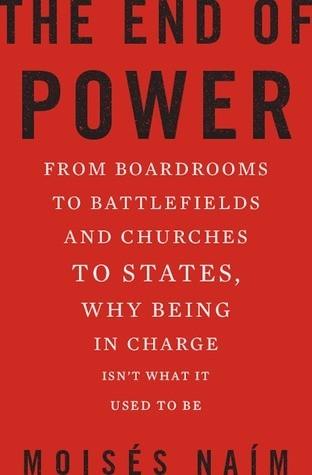
The End of Power: From Boardrooms to Battlefields and Churches to States, Why Being in Charge Isn’t What It Used to Be
by
Moises Naim
Published 5 Mar 2013
“The Changing Character of War,” ch. 7 in Institute for National Strategic Studies, Global Strategic Assessment 2009, p. 148. 42. David E. Johnson et al., “Preparing and Training for the Full Spectrum of Military Challenges: Insights from the Experience of China, France, the United Kingdom, India and Israel,” National Defense Research Institute, 2009. 43. John Arquilla interview in “Cyber War!,” Frontline, April 24, 2003, www.pbs.org. 44. Amir Oren, “IDF Dependence on Technology Spawns Whole New Battlefield,” Haaretz, January 3, 2010. 45. John Arquilla, “The New Rules of Engagement,” Foreign Policy, February–March 2010. 46. Joseph S. Nye, Jr., “Is Military Power Becoming Obsolete?”
…
Moreover, the culture of martyrdom is ruthlessly effective, as it is almost impossible to completely defend against a suicide bomber whose only purpose is to approach the target, and has no interest in getting away. Dispersed and stealth warfare uses resolutely modern tools as well, of course. The Internet has become just as essential as IEDs or suicide attacks in the new decentralized landscape of war. At the frontier of cyberwar are hacker attacks on civilian and military infrastructure, as well as distributed denial of service (DDOS) and other disruptions of websites and platforms relied upon by the target government or population. But even simpler to access is the constellation of online militant voices that amplify hostile messages, spread propaganda materials and threats, and attract new recruits to their cause.
…
Although coming from different perspectives, analysts such as Kaplan and Amy Chua, author of World on Fire, have argued that the rapid pace of globalization and the weakening of states have made violent conflict more likely, and that attempts to create Western-style democracies where they do not currently exist are likely to backfire into violence.37 Meanwhile terrorism, cyberwar, and narco-trafficking take place on amorphous, shifting, borderless fronts, liable to take their toll anywhere in the world on any given day. Call it low-intensity conflict, small war, irregular war, or, as scholars Marc Hecker and Thomas Rid put it, “‘War 2.0’—by any name, violent conflict today is drastically different from the forms that shaped the 19th and 20th centuries and that live on in History Channel documentaries . . . and in the defense spending patterns of most countries.”38 What is less clear is how to address this new landscape.
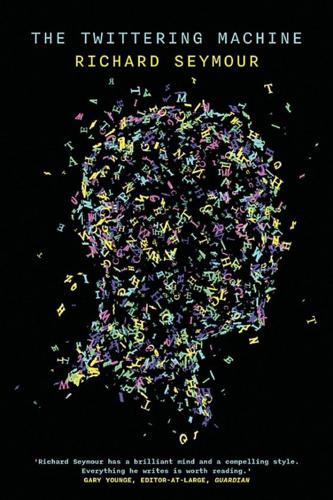
The Twittering Machine
by
Richard Seymour
Published 20 Aug 2019
In Tahrir Square, a coalition of Islamists, liberals and Nasserists had built . . . Atef Shahat Said, ‘The Tahrir Effect: History, Space, and Protest in the Egyptian Revolution of 2011’, University of Michigan, 2014. 36. The reduced costs of organizing also reduced the costs of quitting . . . Thomas Rid, Cyber War Will Not Take Place, Oxford University Press: New York, 2013, p. 28. 37. And, as Paolo Gerbaudo’s analysis in his book . . . Paolo Gerbaudo, The Digital Party, Pluto Press: London, 2019, pp. 25–6. 38. On Ask.fm, another recruiter answered questions about . . . Laurie Segall, ‘ISIS recruiting tactics: Apple pie and video games’, CNN, 30 September 2014; Wendy Andhika Prajuli, ‘On social media, ISIS uses fantastical propaganda to recruit members’, The Conversation (www.theconversation.com), 4 December 2017. 39.
…
Yet their property claims were now disrupting the security state’s fantasy of omniscience. Washington nonetheless continued to champion the tech giants. Indeed, the government found that it was able to hijack the features of the social media platforms to extend its surveillance, building the biggest domestic spying programme in US history. It used Facebook to launch cyberwar programmes aimed at enemies, implanting malware and stealing files from personal hard drives. It was this attack on the security of the platform that led to an incensed Mark Zuckerberg calling the White House to complain about the lack of transparency in NSA programmes. He said that such secretive, counter-security measures not only put users at risk but would also incline them to ‘believe the worst’ – and, he implied, disconnect.30 The security state was threatening the informational property of the platforms.
…
It tacitly recognized that the forms of association on the platform are not ‘horizontal’ but built around complex informational hierarchies that could be manipulated. US counter-insurgency, confronting ISIS, was likewise opportunistic in its use of the medium. While the greatest emphasis was placed on coordinated aerial bombardment, racking up tens of thousands of bodies according to the US Military, the Obama administration began to talk cyberwar. This was already in vogue in the administration. It had used cyber-sabotage against North Korea’s nuclear weapons programme. It cooperated with Israeli intelligence in writing code for the Stuxnet worm – a viral attack that shut down Iran’s nuclear power facilities in Natanz. In 2015, State Department counterterrorism official Alberto Fernandez argued that the US, in a break from the ‘marketplace of ideas’ rhetoric, needed its own ‘troll army’ to combat ISIS.48 Later the same year, the US Air Force bombed a ‘command and control’ building discovered by combing ISIS’s social media streams and associated metadata.
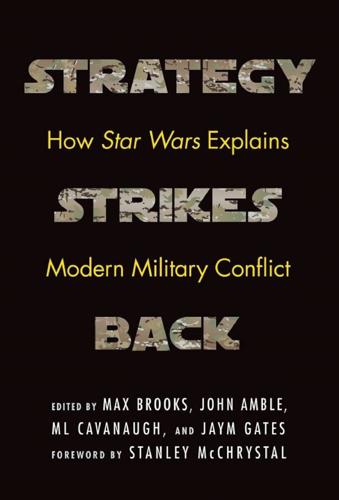
Strategy Strikes Back: How Star Wars Explains Modern Military Conflict
by
Max Brooks
,
John Amble
,
M. L. Cavanaugh
and
Jaym Gates
Published 14 May 2018
Michael Walzer, Just and Unjust Wars: A Moral Argument with Historical Illustrations, 4th ed. (New York: Basic Books, 1991), 264. 3. Coppieters and Fotion, Moral Constraints on War, 164. 4. Allan Friedman and P. W. Singer, Cybersecurity and Cyberwar: What Everyone Needs to Know (Oxford: Oxford University Press, 2014), 117. 5. Friedman and Singer, Cybersecurity and Cyberwar, 98. 6. James P. Farwell and Rafal Rohozinski, “Stuxnet and the Future of Cyber War,” Survival 53, no. 1 (2011): 28. 5 Civil-Military Relationships in Star Wars Daniel D. Maurer Science fiction sets out not so much to explore the possibilities of the future as to comment on the crises that it sees imminent in contemporary life.
…
And of course, limited AI and swarm intelligence will—as all technology does—proliferate and escalate. While the U.S. offset strategies are designed to offset some Russian and Chinese relative advantages, the United States can expect to see rapid advances in autonomous minions from Russia and in AI from China. Both adversaries pose significant cyberwar threats as well, which will doubtless be deployed against military AIs. We already see decentralized networks organized around a central why, in the Taliban, Al-Qaeda, and ISIS. Another downside is that algorithms are philosophies, not proofs—and in a swarm the algorithms that drive drone decision making must be tested and retested against the geo-socio-political landscape in order to avoid becoming outdated or worse.
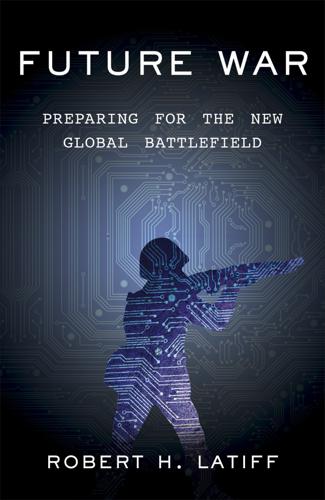
Future War: Preparing for the New Global Battlefield
by
Robert H. Latiff
Published 25 Sep 2017
Sensors will be everywhere. Surveillance capabilities will depend even more heavily on drones, satellites, computer spying and exploitation, and communications intercepts, among other tools, and less on human assets. Machines will think for us. War will be increasingly fought with computers, whether in the form of cyber war, such as an attack on infrastructure, or with computers providing support to soldiers and weapons in the field. The extensive data from sensors will be subjected to intensive mining, and artificial intelligence systems will supplant the intelligence analyst. Rather than analyzing information, the soldier will merely choose among machine-provided products.
…
The ability to destroy information, reputation, and financial resources was evident in the North Korean attack on Sony Pictures. There have been instances of passengers hacking into aircraft flight systems from their coach seats, and it was recently determined that control systems for a dam in upstate New York had been penetrated by Iranian hackers. Because of the speed at which cyber war will be conducted, the difficulty of distinguishing between exploitation and attack is great, and dangerous misperceptions can result. Is a massive denial-of-service attack from Russian hardware devices a prelude to a real attack, or is it merely the work of independent hackers through a Russian service provider?
…
Lethal cyber weapons are important and frightening additions to the tools of war, the ramifications of which are huge and largely unknown. We must think deeply about the consequences of using such weapons. There are also many as yet unanswered questions about the uses and methods of deterrence, and means of conflict deescalation once a cyber war begins. The Department of Defense has decreed that cyber warfare, like other forms of warfare, must adhere to laws of armed conflict. It must be aimed at harming military infrastructure, must degrade the adversary’s ability for kinetic war, do minimal harm to civilian life or property, and be a last resort, after negotiations have failed.

Cyber War: The Next Threat to National Security and What to Do About It
by
Richard A. Clarke
and
Robert Knake
Published 15 Dec 2010
That’s in effect what the Obama Administration is saying to industry today.” On this fundamental issue of whose job it is to defend America’s infrastructure in a cyber war, the government and industry are talking past each other. As a result, no one is defending the likely targets in a cyber war, at least not in the U.S. In other countries, some of whom might be cyber war adversaries someday, the defense part of cyber war might be doing a little better than it is here. THE CYBER WAR GAP We noted earlier that the U.S. may have the most sophisticated and complex cyber war capability, followed soon thereafter by Russia. China and perhaps France are in a close second tier, but over twenty nations have some capability, including Iran and North Korea.
…
But there is more to cyber war than cyber offensive. There is also cyber dependence, the degree to which a nation relies upon cyber-controlled systems. In a two-way cyber war, that matters. As I discovered when I asked for a cyber war plan to go after Afghanistan in 2001, there are sometimes no targets for cyber warriors. In a two-way cyber war, that gives Afghanistan an advantage of sorts. If they had any offensive cyber capability (they didn’t), the cyber war balance would have shifted in an interesting way. There is also the issue of whether a nation can defend itself from cyber war. Obviously, Afghanistan can protect itself just by being there and having no networks, but theoretically a nation may have networks and, unlike us, be able to protect them.
…
Oh yes, there is also that National Strategy to Secure Cyberspace dating back to 2003; but there is no publicly available cyber war strategy. In the absence of a strategy for cyber war, we do not have an integrated theory about how to address key issues. To prove that, let’s play Twenty Questions and see if there are agreed-upon answers to some pretty obvious questions about how to conduct cyber war: What do we do if we wake up one day and find the western half of the U.S. without electrical power as the result of a cyber attack? Is the advent of cyber war a good thing, or does it place us at a disadvantage? Do we envision the use of cyber war weapons only in response to the use of cyber war weapons against us?

I, Warbot: The Dawn of Artificially Intelligent Conflict
by
Kenneth Payne
Published 16 Jun 2021
DARPA, ‘AlphaDogfight trials foreshadow future of human-machine symbiosis,’ 26 August 2020, https://www.darpa.mil/news-events/2020-08-26. 11. Osinga, Frans. Science, Strategy and War: The Strategic Theory of John Boyd. Abingdon: Routledge, 2007. 12. For a dramatic account of recent state cyber activities, see Sanger, David E. The Perfect Weapon. London: Scribe, 2018. 13. Rid, Thomas. Cyber War Will Not Take Place. New York: Oxford University Press, 2013. 14. Avgerinos, Thanassis, David Brumley, John Davis, Ryan Goulden, Tyler Nighswander, Alex Rebert, and Ned Williamson. ‘The Mayhem cyber reasoning system’, IEEE Security & Privacy 16, no. 2 (2018): 52–60. 15. Brumley, David. ‘Mayhem, the machine that finds software vulnerabilities, then patches them’, IEEE Spectrum, 29 January 2019, https://spectrum.ieee.org/computing/software/mayhem-the-machine-that-finds-software-vulnerabilities-then-patches-them. 16.
…
A Theory of Justice. Boston, MA: Harvard University Press, 2009. Regalado, Antonio. ‘Exclusive: Chinese scientists are creating CRISPR babies’, MIT Technology Review, 25 November 2018, https://www.technologyreview.com/2018/11/25/138962/exclusive-chinese-scientists-are-creating-crispr-babies/. Rid, Thomas. Cyber War Will Not Take Place. New York: Oxford University Press, USA, 2013. Rid, Thomas. Rise of the Machines: The Lost History of Cybernetics. New York: WW Norton, 2016. Robinson, Heath. Heath Robinson’s Second World War. Oxford: The Bodleian Library, 2016. Roland, Alex, and Philip Shiman. Strategic Computing: DARPA and the Quest for Machine Intelligence, 1983–1993.
…
Perhaps even the society that produced the soldier and the weapon designer—its schools, its hospitals. This is a pretty expansive definition of a weapon system—like something out of a cybernetician’s daydream. But even if we draw the circle more narrowly, the electronic systems on which warbots depend fall squarely within the scope of a ‘weapon system’. So cyberwar ‘might not take place’ as Thomas Rid has argued, at least in the sense of malign code actually being used to carry out violent attacks.13 But deaths may ensue anyway as the result of hacking—cutting power grids, hijacking healthcare computers and so on. And, more fundamentally, attacks that compromise and degrade weapon systems are themselves having just as much impact on battle as the bullet fired from the Special Force’s patrol’s personal weapons.
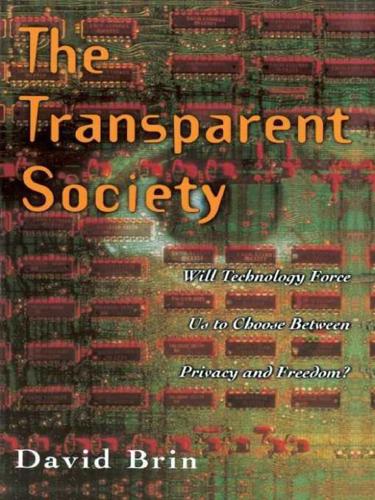
The Transparent Society: Will Technology Force Us to Choose Between Privacy and Freedom?
by
David Brin
Published 1 Jan 1998
According to Jeffrey Cooper: “Some propose information itself as the target in warfare; others treat information as the weapon; some see information as a critical resource; and still others see information as a realm (like space) or an environment (the ʻinfosphereʼ), as a medium for military operations (like air power). Information could also be considered a catalyst or as a control parameter in a process; and in both of these cases, information is neither transformed nor spent.” What some analysts fear, and others relish, is the possibility that cyber war may bring the realization of Sun Tzuʼs two-thousand-year-old dream—“vanquishing the enemy without fighting.” Netwar, a related topic, is the use of information-based means to threaten or damage an enemyʼs homeland, citizenry, or infrastructure base. This use of information technology has become a hot issue during the late 1990s, at summer workshops and gatherings of think tank experts.
…
(How will you establish ownership of your ecash if someone else uses a hidden camera to steal your passwords even as you type them?) This new, computerized realm does not eliminate all opportunities for predators. It just changes the type of jungle we must warily pass through, shifting all the landmarks, taking us into strange new territory. In chapter 10, we will discuss the possibilities of cyberwar—in which a frail and complex society may fall victim to deliberately or accidentally triggered breakdowns of essential systems, including power networks, transportation, or emergency services. Above all, no target is more tempting than the luscious flow of billions of dollars through slender electronic conduits.
…
Few expect the information age to be any different. Although a major case of transnational aggression via computers has not been announced yet, numerous studies have already described plausible scenarios for future strife, creating a vocabulary of terms we may see much more of in the decades ahead. The term cyberwar refers to knowledge-related conflict at the military level. Outcomes in future clashes may depend less on armed mass or mobility than on which side knows more. As we saw earlier, enhanced powers of sight range from spy satellites to tiny, camera-bearing robots that an infantry squad can deploy to inspect the next hedge or street.
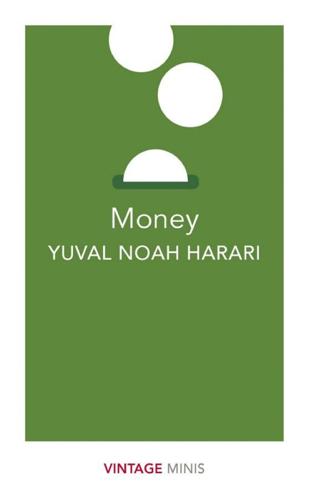
Money: Vintage Minis
by
Yuval Noah Harari
Published 5 Apr 2018
Aside from their unpredictability and their susceptibility to fear, hunger and fatigue, flesh-and-blood soldiers think and move on an increasingly irrelevant timescale. From the days of Nebuchadnezzar to those of Saddam Hussein, despite myriad technological improvements, war was waged on an organic timetable. Discussions lasted for hours, battles took days, and wars dragged on for years. Cyber-wars, however, may last just a few minutes. When a lieutenant on shift at cyber-command notices something odd is going on, she picks up the phone to call her superior, who immediately alerts the White House. Alas, by the time the president reaches for the red handset, the war has already been lost. Within seconds a sufficiently sophisticated cyber strike might shut down the US power grid, wreck US flight control centres, cause numerous industrial accidents in nuclear plants and chemical installations, disrupt the police, army and intelligence communication networks – and wipe out financial records so that trillions of dollars simply vanish without a trace and nobody knows who owns what.
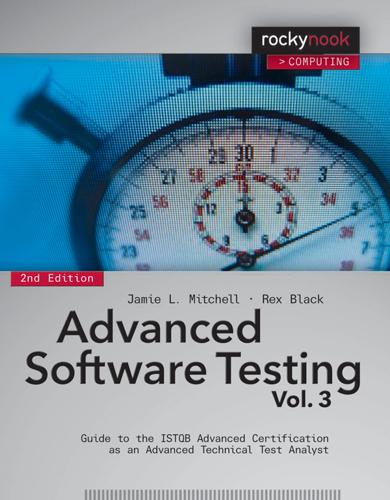
Advanced Software Testing—Vol. 3, 2nd Edition
by
Jamie L. Mitchell
and
Rex Black
Published 15 Feb 2015
id=308798. Common Attack Pattern Enumeration and Classification. capec.mitre.org. “A Look into Insidious Threats—The Logical Bomb.” Emmanuel Carabott. September 22, 2010. GFI Blog. http://www.gfi.com/blog/insidious-threats-logical-bomb/. “Cyber War 2.0 – Russia v. Georgia.” Ward Carroll. 2008. DefenseTech at Military.com. http://defensetech.org/2008/08/13/cyber-war-2-0-russia-v-georgia/. Common Vulnerabilities and Exposures. http://cve.mitre.org/. “Hacker says to show passenger jets at risk of cyber-attack.” Jim Finkle. Reuters, Aug. 4, 2014. http://www.reuters.com/article/2014/08/04/us-cybersecurity-hackers-airplanes-idUSKBN0G40WQ20140804.
…
Usually followed with an expansive arm movement, a knowing wink, and a quick run toward the door. 2. http://microsoft-news.tmcnet.com/microsoft/articles/81726-microsoft-study-reveals-that-regular-password-changes-useless.htm 3. http://security.freebsd.org/advisories/FreeBSD-SA-00:53.catopen.asc 4. Just one example: http://defensetech.org/2008/08/13/cyber-war-2-0-russia-v-georgia/ 5. A quote we have heard enough times to scare us! 6. http://www.gfi.com/blog/insidious-threats-logical-bomb/ 7. https://www.owasp.org/index.php/XSS_(Cross_Site_Scripting)_Prevention_Cheat_Sheet 8. http://www.sans.org/reading_room/whitepapers/windows/microsoft-windows-security-patches_273 9.

The Zenith Angle
by
Bruce Sterling
Published 27 Apr 2004
And they don’t come back, and their boss gets broken like a breadstick. So everyone claps real loud for you. They clap till their hands get sore. Because they are terrified of you, man. You are their stud cyberwar general. You are the geek who killed and ate some real military. You rock.” “That’s not at all how it really was.” Tony sighed. “Who even cares? You’re never going to tell them the truth about beating up some wacky little soldier inside your apartment. And neither am I, or anybody else, ever. The point is that a cyberwar needs heroes. There aren’t a lot of cyber-heroes around. In fact, you’re pretty much the only one in the world.” The ground was coming up outside the window.
…
What the hell kind of weapon is that? You plug it in, you turn the heat on, and sooner or later a bullet explodes and somebody gets killed? That’s your big concept here?” “That’s cyberwar, Tony.” “Look, Van, I don’t want to play your weird ray gun game.” “Now you don’t want to play it, Tony. Because I play it better than you do.” Tony bent to look up the gun’s barrel. “You really put a real bullet inside that cool little toy?” “Cyberwar is real.” The ray gun exploded: Carew catapulted backward out of his chair. A 250-grain elk cartridge was designed to take down a bull elk at four hundred yards. It ripped a hole through Carew.
…
We are the agents from a new geopolitical arena. It’s time to carry out our struggles in a new, improved way.” “What kind of cockamamie war doctrine is that?” Hickok demanded. “It’s cyberwar!” said Wimberley. “It’s information warfare,” said Gonzales. “It’s like media spin or something. Am I right?” “They are human beings in there,” said Van. “We need to convince them of something important right now. They need to believe that it’s cyberwar or it’s bloody-handed terror suicide, and those are the only kind of wars that get allowed. Now we can make that distinction clear to them. Let them fly back home, Mike.”

The Age of AI: And Our Human Future
by
Henry A Kissinger
,
Eric Schmidt
and
Daniel Huttenlocher
Published 2 Nov 2021
As Senator Angus King and Representative Mike Gallagher, chairs of the United States Cyberspace Solarium Commission, said in their March 2020 report, “Like an infection in the bloodstream, the malware spread along global supply chains.” See page 8 of Report of the United States Cyberspace Solarium Commission, https://drive.google.com/file/d/1ryMCIL_dZ30QyjFqFkkf10MxIXJGT4yv/view. 8. See Andy Greenberg, Sandworm: A New Era of Cyberwar and the Hunt for the Kremlin’s Most Dangerous Hackers (New York: Doubleday, 2019); Fred Kaplan, Dark Territory: The Secret History of Cyber War (New York: Simon & Schuster, 2016). 9. See Richard Clarke and Robert K. Knake, The Fifth Domain: Defending Our Country, Our Companies, and Ourselves in the Age of Cyber Threats (New York: Penguin Press, 2019). 10. See., e.g., Summary: Department of Defense Cyber Strategy 2018, https://media.defense.gov/2018/Sep/18/2002041658/-1/-1/1/CYBER_STRATEGY_SUMMARY_FINAL.PDF. 11.
…
Cyber arms-control negotiators (which do not yet exist) will need to solve the paradox that discussion of a cyber weapon’s capability may be one and the same with its forfeiture (permitting the adversary to patch a vulnerability) or its proliferation (permitting the adversary to copy the code or method of intrusion). These challenges are made more complex by the ambiguity surrounding key cyber terms and concepts. Various forms of cyber intrusions, online propaganda, and information warfare are called, by various observers in various contexts, “cyber war,” “cyberattacks,” and in some commentary “an act of war.” But this vocabulary is unsettled and sometimes used inconsistently. Some activities, such as intrusions into networks to collect information, may be analogous to traditional intelligence gathering—though at new scales. Other attacks—such as the election-interference campaigns on social media undertaken by Russia and other powers—are a kind of digitized propaganda, disinformation, and political meddling with a larger scope and impact than in previous eras.
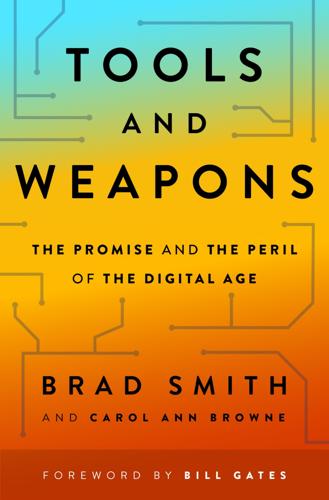
Tools and Weapons: The Promise and the Peril of the Digital Age
by
Brad Smith
and
Carol Ann Browne
Published 9 Sep 2019
David Smith, “Movie Night with the Reagans: WarGames, Red Dawn . . . and Ferris Bueller’s Day Off,” Guardian, March 3, 2018, https://www.theguardian.com/us-news/2018/mar/03/movie-night-with-the-reagans. Back to note reference 10. WarGames, directed by John Badham (Beverly Hills: United Artists, 1983). Back to note reference 11. Fred Kaplan, Dark Territory: The Secret History of Cyber War (New York: Simon & Schuster, 2016), 1–2. Back to note reference 12. Seth Rosenblatt, “Where Did the CFAA Come From, and Where Is It Going?” The Parallax, March 16, 2016, https://the-parallax.com/2016/03/16/where-did-the-cfaa-come-from-and-where-is-it-going/. Back to note reference 13.
…
What if the whole ransomware approach was just a cover to throw the press and public off the real message, which was intended to be more discreetly understood by US and allied officials? If North Korea was responding with its own cyberattack to a US cyberattack, then the whole episode was even more significant than people have appreciated. It was the closest thing the world has experienced to a global “hot” cyberwar. It would mean that this was an attack in which the impact on civilians represented more than collateral damage. It was the intended effect. Regardless of the answer, the question reflects a serious issue. Cyberweapons have advanced enormously over the past decade, redefining what is possible in modern warfare.
…
Congressional Internet Caucus, 321n3 Connect America Fund, 323n17 Constitution, U.S., 9 Bill of Rights, 7 First Amendment to, 12, 15, 33, 36, 102 Fourth Amendment to, 7–8, 14, 15, 23, 26, 33, 34, 36 Constitutional Convention, 77 consumer credit, 246 consumer privacy, see privacy Cook, Tim, 16, 252 Coons, Chris, 314n9 copyright, 284 Correal, Annie, 220 Courtois, Jean-Philippe, 181 Court TV, 104 Crovitz, Gordon, 104–5 Curie, Marie, 184 Customs and Border Protection, US (CBP), 215, 220–21 cyberattacks, 111, 112–14, 124, 205 attribution of, 118–19 denial-of-service attack in Estonia, 91–92 NotPetya, 69–72 WannaCry, 63–69, 71–74, 122, 294, 300, 301 Cyber Defense Operations Center, 111 cybersecurity, 61–76, 92, 112–15, 119, 123, 294–95, 300, 302 China and, 251, 252 data sharing and, 283 generational divide in views on, 71 national security and, 110–11 tech companies’ attitudes toward, 294–95 Cybersecurity Tech Accord, 119–21, 294, 300, 301 cybertribes, 92–93 cyberwar, cyberweapons, 69, 118, 130, 205–6, 289 Czechoslovakia, 40 D DACA (Deferred Action for Childhood Arrivals), 173–74 Daily, 219–20 Daily Beast, 83 Daily Princetonian, 13 Dartmouth College, 193 data, xiii, xiv, 195 creation of, 274 government, 283–84, 297 open, 269–86, 297 ownership of, 283 privacy and, 282–84; see also privacy sharing of, 275–76, 280–83 data centers, xiv–xv, xviii–xix, 8, 19, 21, 24, 42, 44–45, 52, 133, 303 of Microsoft, xiv–xix, 5, 14–15, 29–30, 34, 42–46, 48–56 data science, 181, 196, 207, 264, 323n9 biomedical science and, 273 Davos, World Economic Forum at, 191–93, 202 DCU (Digital Crimes Unit), 78–81, 85, 111, 112, 316n2 Declaration Networks Group, 167 Declaration of Independence, 7 deep fakes, 99 DelBene, Suzan, 314n9 democracy(ies), 10, 77–88, 89, 91, 95, 97, 107, 149, 227, 229, 289, 295, 301–4 disinformation campaigns and, 94, 289, 302 foreign interference in, 105–6 see also elections Democratic National Committee (DNC), 78, 278 Democratic National Convention (2016), 77, 78 Democrats, 82, 84–85, 106, 172, 278–81 denial-of-service attacks, 91–92 Denmark, 109–10, 112, 123, 130 Depression, Great, 164, 165, 171, 242–44 Deutsche Telekom, 122 Dick, Philip K., 211 Dickerson, Caitlin, 220 DeGeorge syndrome, 213 Dietterich, Thomas, 328n12 Digital Accountability and Transparency Act, 283–84 Digital Geneva Convention, 113–15, 128, 300 digital neutrality, 35 diplomacy, 109–30 disabilities, 200, 287–88 disinformation campaigns, 90, 94, 102, 104, 106–7, 289, 294, 302 Russia and, 95–98, 103 Downing, Richard, 59 DREAMers, 173–74 E Economic Graph, 181 economy, 241–43, 289, 299 Edelman Trust Barometer, 216–17 Edison, Thomas, 194 education, 156, 180, 182, 186, 207 computer science, 170, 177–81, 184 Microsoft’s school voucher program, 177 Microsoft’s Technology Education and Literacy in Schools program, 178–79 national talent strategy and, 175–76 Washington State Opportunity Scholarship program, 181–82 Workforce Education Investment Act, 182–84 Egan, Mike, 331n8 8chan, 99 Einstein, Albert, 129, 171, 209–10, 289 Eisenhower, Dwight D., 172 ElectionGuard, 87 elections, 84, 95 in France, 81 hacking and, 81, 86–88 U.S. presidential election of 2016, 81, 82, 139, 144, 157, 172, 189, 278–82, 331n8 voting machines and, 87 electricity, 70, 286, 289, 299 data centers and, xiv, xvi, 44 in rural areas, 159, 160, 163–66 Electronic Communications Privacy Act (ECPA), 22, 23, 33, 47 electronic grids and infrastructures, 70–71, 266, 299 El Paso, Tex., 233–35, 331n8 Ely, James, 110 email, 23, 24, 28, 49, 221, 237–38 phishing and, 79, 83 Russian hackers and, 81, 95 employee activism, 215–17 Empson, Mark, 70 encryption, 14–15, 19, 87, 149, 171, 283 endangered species, 288 engineering, 141–42 England, 316n2 National Health Service in, 62 see also United Kingdom Estonia, 89–93, 320n19 Étienne, Philippe, 123 European Commission, 131 European Court of Justice, 136, 137 European Union (EU), 43, 44, 47–48, 56, 124, 284, 314n10 Brexit and, 131–32, 139, 238 General Data Protection Regulation of, 131–32, 139–43, 146–49 International Safe Harbor Privacy Principles of, 133–36 Privacy Shield of, 137–38, 300 F FAA (Federal Aviation Administration), 336n10 Facebook, 2, 16, 44, 73–76, 85, 92, 95–99, 103, 104, 120–21, 124, 125, 133, 173, 253, 270, 272, 281, 285 Cambridge Analytica and, 144 Christchurch mosque shootings and, 99, 126 disinformation campaigns on, 90, 95–98 privacy and, 135, 144 facial recognition, 203, 211–30, 239, 264, 330n21 bias and, 198 legislation on, 226, 330nn19–20, 331n26 regulation of, 221–22, 224, 225, 228, 296 surveillance and, 227–28 Fancy Bear (APT28; Strontium), 78–81, 84–85 Fargo, N.Dak., 331n8 FarmBeats, 163 farmers, farming, 156, 163, 164, 171, 243–44 FBI (Federal Bureau of Investigation), 13, 22, 25, 27, 28, 36, 49, 63, 73, 78 data requested from Microsoft by, 31 FCC (Federal Communications Commission), 158, 323n17 Blue Book of, 101–2, 318nn27–28 broadband and, 153–56, 158, 322n6, 323n9 FedEx, 70 Ferguson, Bob, 173, 324n4 Ferry County, Wash., 151–55, 157, 166–67 fiber-optic cables, 13, 14, 42, 43, 153, 158, 159, 162, 163, 296 filing cabinets, xiv, 309n2 fire extinguishers, 236 fire horses, 231–32, 245, 247 First Amendment, 12, 15, 33, 36, 102 FISC (Foreign Intelligence Surveillance Court), 12 5G, 153, 266 Ford, Henry, 245, 246 4G, 158 Fourth Amendment, 7–8, 14, 15, 23, 26, 33, 34, 36 Fourth Geneva Convention, 113, 117–18 Fourth Industrial Revolution, 169 Fox News, 314n10 France, 126 National Assembly in, 224 presidential candidates in, 81 Revolution in, 319n36 1798 war with U.S., 9–10 terrorist attacks in Paris, 26–28 war between United Kingdom and, 105 Francis, James C., IV, 52, 314n10 Francis, Pope, 209–10 Frank, John, 3, 4, 8, 22 Franklin, Benjamin, 7, 77, 87, 107, 192 frauds and scams, 192–93, 316n2 Fred Hutchinson Cancer Research Center, 272–74, 276, 284–86 Freedom House, 222 freedom of speech, 102 French Revolution, 319n36 Friedman, Nat, 277 FTC (Federal Trade Commission), 29, 146, 310n6 G Galileo, 209 Garnett, Paul, 167 Gates, Bill, xviii, 29, 194, 240, 252, 254, 277, 325n11 Gates, Melinda, 252 Gebru, Timnet, 198 Gellman, Bart, 13 General Data Protection Regulation (GDPR), 131–32, 139–43, 146–49, 294 Genêt, Edmind Charles, 105–6, 319n36 Geneva, 129 Geneva Conventions, 113, 117–18, 320n16 Geography of Thought, The (Nisbett), 258, 261–62 George, John Earl, Sr., 165, 166 Germany, 39–41, 51–53, 56 Germany, Nazi, 39, 41, 61, 90, 129 Giant Company Software, xviii Gibson, Charlie, 314n10 Gilliland, Gary, 273 GitHub, 100, 277 Global Network Initiative (GNI), 333n16 Good, I.J., 328n12 Google, 16, 19, 44, 85, 97, 104, 120, 122, 124, 126, 133, 144, 173, 199, 216, 253, 256, 269, 272, 285 government sued by, 12, 18–19 Microsoft and, 12 military and, 203, 204, 215, 216 NSA and, 2, 4, 13 Plus, 270 YouTube, 2, 95, 99, 125, 126 GPS, 33–34, 228 Graham, Lindsey, 56, 57 Gramophone, 101 Graphika, 95 Great Depression, 164, 165, 171, 242–44 Greek philosophy, 259, 263 Green Bay, Wisc., 331n8 Green Bay Packers, 233, 331n8 Gregoire, Christine, 186, 189, 316n2, 325n20, 327n40 Guardian, 2–4, 8, 19 Gutenberg, Johannes, xiii, 209 Guterres, António, 205 Gutierrez, Horacio, 312–13n12 H hackers, hacking, 71, 79, 81, 86, 113, 266, 287 Chinese, 251, 263 elections and, 81, 86–88 hackers, Russian, 78, 82–83, 95 elections and, 81, 86 Strontium (Fancy Bear; APT28), 78–81, 84–85 Hamilton, 106, 249 Hamilton, Alexander, 105, 106 Harding, William, 100 Harvard Law Review, 330n24 Hastings, Reed, 16, 17, 335n7 Hatch, Orrin, 176, 314n9 He Huaihong, 261–62 Heiner, Dave, 194, 197 Heller, Dean, 314n9 Hippocratic oath for coders, 207–8 Hitachi, 122 Hoffman, Reid, 267, 292 Hogan-Burney, Amy, 25–26 Hollande, François, 28 HoloLens, 204, 238–39, 252 Hood, Amy, 174, 183, 188–89, 293–94, 306 horses, 240–45 fire, 231–32, 245, 247 Horvitz, Eric, 194, 199, 218, 327n5, 328n12 Hotmail, 21–22 Hour of Code, 179 House of Representatives, 7, 56, 57, 176 housing, 186–90, 302, 327n40 Houston, Tex., 96 Howard, David, 31–33, 35 HP, 120, 132 Huawei, 263 Hudson Institute, 84 Hu Jintao, 252 human rights, 260, 262–64, 292, 301–4, 333n16 Human Rights Watch, 206 Humphries, Fred, 55 Hutchinson, Bill, 272 Hutchinson Cancer Research Center, 272–74, 276, 284–86 I I, Robot, 193 IBM, 192, 285, 310n6 ImageNet, 197 immigration, 169, 171–76, 290 DACA program and, 173–74 facial recognition and, 214–15 national talent strategy and, 175–76 separation of children from parents at the border, 214, 215, 220–21 Immigration and Customs Enforcement, US (ICE), 214–15 Immigration Innovation Act (I-Squared), 176 information bubbles, 95 information technology, 70, 253, 298–300 China and, 253, 258, 263–67 persuasion and, 107 weaponization of, 97 infrastructure and grids, 70–71, 266, 299 Inslee, Jay, 325n20 Instagram, 95–96 Intel, 253 intellectual property, 113, 175, 207, 284, 336n9 International Campaign to Ban Landmines, 127 International Committee of the Red Cross (ICRC), 113, 118, 127, 320n16 International Humanitarian Law, 117 International Monetary Fund, 97 International Republican Institute (IRI), 84 international rules, 302 arms control, 116–18, 128, 302 International Safe Harbor Privacy Principles, 133–36 internet, 24, 41, 91, 106, 107, 192–93, 299, 335n9 Communications Decency Act and, 98–99 rural broadband and, 151–67, 289, 296, 322n6, 323n9 Internet Research Agency (IRA), 95–96 Interstate Commerce Commission, 299–300 Iowa, 164–66 Iran, 71 Iraq, 81 Ireland, 42–46, 49–56, 133, 135 Ischinger, Wolfgang, 96 ISIS (Islamic State of Iraq and Syria), 28 Israel, 81 J Jacobins, 319n36 Japan, xvii, 75, 122, 124, 129, 253 Japanese-Americans, internment of, 10 Jarrett, Valerie, 15–16 Jefferson, Thomas, 105, 106, 313n5 Jewish manuscripts, 288, 335n2 jobs, 186, 187, 297, 302 artificial intelligence and, 231–47 creation of, 156–58 digital content in, 177–78 Economic Graph and, 181 immigration seen as threat to, 175 unemployment, 152, 156 Jobs, Steve, 142, 241 Jones, Nate, 25–26, 49 Jourová, Věra, 136–37 Joyce, Rob, 73 Justice Department (DOJ), xx, 12, 13, 16, 18–19, 26, 31, 35, 36, 49, 53, 56, 148 K Kahan, John, 323n9 Kaljurand, Marina, 91–92 Kenya, 160 Kentucky School for the Blind, 287, 334n1 KGB, 92 Kids in Need of Defense (KIND), 220, 329n11 King County, Wash., 152, 157 Kirkpatrick, David, 192 Kissinger, Henry, 250, 259 Kistler-Ritso, Olga, 90–92, 317n2 Klobuchar, Amy, 176 Klynge, Casper, 109, 112, 123, 127, 128, 130 Kollar-Kotelly, Colleen, 335n7 Koontz, Elbert, 152–55, 167 Kubrick, Stanley, 328n12 Kushner, Jared, 173, 280 L Lagarde, Christine, 97 landmines, 127, 320n21 language translation, 197, 236, 239–40, 261 Law Enforcement and National Security (LENS), 24–26 Lay-Flurrie, Jenny, 334–35n1 Lazowska, Ed, 178, 325n11 LEADS Act (Law Enforcement Access to Data Stored Abroad), 314n9 League of Nations, 129 Lee, Kai-Fu, 269–70, 272, 273, 276 legal work, impact of technology on, 236, 237 Leibowitz, Jon, 29 LENS (Law Enforcement and National Security), 24–26 Leopard, HMS, 313n5 libraries, ancient, xiii, 309n1 Liddell, Chris, 173 Lincoln, Abraham, 10 LinkedIn, 100, 103, 126, 181, 325n18 Linux, 277 Long, Ronald, 43 LTE, 158, 162 M Macron, Emmanuel, 81, 123–24, 127 Mactaggart, Alastair, 144–49 Madison, James, 7 Maersk, 70–71 Mahabharata, The, 205 malware, 63, 68 see also cyberattacks Mamer, Louisan, 164–66 Manhattan Project, 171 Map to Prosperity, 157 Marino, Tom, 314n9 Markle Foundation, 325n18 Martin, “Smokey Joe,” 231 Martinon, David, 123 Mattis, James, 67 May, Theresa, 132, 238–39 Mayer, Marissa, 18 McCaskill, Claire, 83 McFaul, Michael, 117 McGuinness, Paddy, 56 McKinsey Global Institute, 241 Mercedes-Benz, 240, 326n31 Merck, 70 Meri, Lennart, 91 Merkel, Angela, 239 Mexico, 124 Microsoft: AccountGuard program of, 84, 85 AI ethics issues and, 199–201, 205, 218, 222, 223, 229–30, 294 AI for Earth team of, 288 antitrust cases against, xx, 12, 29, 96, 143, 148, 175–77, 291, 310n6, 335n7 Azure, 126, 140 Bing, 100, 104, 126, 140 board of directors of, 335n7 Brazil and, 48–49, 53 China and, 65, 250–52, 254–55, 259–61 Christchurch Call to Action and, 125–27 cloud commitments of, 30, 33, 292 Code.org and, 179 Cyber Defense Operations Center of, 111 Cybersecurity Tech Accord and, 119–21 data centers of, xiv–xix, 5, 14–15, 29–30, 34, 42–46, 48–56 Digital Crimes Unit (DCU) of, 78–81, 85, 111, 112, 316n2 ElectionGuard system of, 87 engineering structure at, 142 facial-recognition technology of, 213–15, 222–24, 226–27, 229–30 and FBI’s request for customer data, 31 Friday meetings of, 62 General Data Protection Regulation and, 140–43, 146–47, 294 Giant Company Software and, xviii GitHub, 100, 277 Google and, 12 government sued by, 12–13, 15, 16, 18–19, 33, 35–37, 83 housing initiative of, 186–90, 327n40 Immigration and Customs Enforcement and, 214–15 Ireland and, 42–45, 49–56 Law Enforcement and National Security (LENS) team of, 24–26 LinkedIn, 100, 103, 126, 181, 325n18 Muslim travel ban and, 173 NSA and, 1–4, 8, 13–14 Office, 84, 140, 253, 254 OneDrive, 126 open-source code and, 277–78 Patch Tuesdays of, 74 Philanthropies, 178–80 privacy legislation advocated by, 132, 146–48, 321n3 Research (MSR), 170–71, 194–95, 197, 237, 275, 328n12 Research Asia (MSRA), 255 Rural Airband Initiative of, 160–62, 166–67 Russia’s message to, 86 school voucher program of, 177 security feature development in, 111 Senior Leadership Team (SLT), 15, 62, 141, 221, 274, 307 Strontium and, 78–81, 84–85 Tay, 255–56 TechFest, 170–71 Technology Education and Literacy in Schools (TEALS) program of, 178–79 TechSpark program of, 233, 331n8 Threat Intelligence Center (MSTIC) of, 63, 78–79, 84 Windows, xx, 12, 29, 63–65, 203, 212, 253, 270 Word, 50, 264 Xbox, 72, 100, 126, 140, 160 military weapons, 117–18, 127, 202–6, 264, 329n29 artificial intelligence in, 202–6, 215, 216 nuclear, 116–17, 210 minimum viable product, 225–26, 296 Minority Report, 211–12 missiles, 66–67 MLATs (mutual legal assistance treaties), 47–49, 52 Mobility Fund, 158, 323n17 Moglen, Eben, 314n8 Mook, Robby, 279 Morrow, Frank, 125 MSTIC (Microsoft Threat Intelligence Center), 63, 78–79, 84 Munich Security Conference, 96–97, 208 Muslims, 288, 335n2 Christchurch mosque shootings, 99–100, 102, 125–26 travel ban on, 173 Myerson, Terry, 65 Myhrvold, Nathan, 194–95 Mylett, Steve, 187 N Nadella, Satya, 28–29, 62, 65, 66, 73, 115, 126–27, 141–43, 172–74, 186–88, 199, 200, 204–5, 218, 219, 221, 239–40, 252, 274, 276, 277, 289, 292 National Australia Bank, 213 National Federation for the Blind, 334n1 National Geographic Society, 161 National Health Service, 62 National Human Genome Research Institute, 213 National Institute of Standards and Technology, 221–22 nationalism, 112, 300–301 National Press Club, 29 national security: cybersecurity and, 110–11 individual freedoms vs., 9–10 National Security Council, 26 NATO, 82, 124, 204 Cooperative Cyber Defense Centre of Excellence, 92, 320n19 Nazi Germany, 39, 41, 61, 90, 129 negotiations, 175 Netflix, 16, 335n7 network effects, 270 neural networks, 196–97 New Deal, 164 NewsGuard, 104–5 New York, N.Y., 245 fire horses in, 231–32, 245, 247 New York Times, 63, 65–67, 99, 118, 219–20 New York University, 333n16 New Zealand, 75, 124, 125–27, 130 Christchurch mosque shootings in, 99–100, 102, 125–26 NGOs (nongovernmental organizations), 127, 128, 208, 302, 303 Nimitz, USS, 203 9/11 terrorist attacks, 8–9, 71, 72 1984 (Orwell), 227 Nisbett, Richard, 258, 261–62 North Korea, 63, 64, 67–69, 71–74 missile launch of, 67 Noski, Chuck, 335n7 NotPetya, 69–72 NSA (National Security Agency), 3, 8–9, 13, 15, 73 Google and, 2, 4, 13 Microsoft and, 1–4, 8, 13–14 PRISM program of, 1–4, 8, 9, 310–11n4 Snowden and, 4–5, 8, 9, 13–14, 17–19, 25, 41 Verizon and, 2–3 WannaCry and, 63–69, 71–74 and White House meeting with tech leaders, 16–19 nuclear power, 143–44 nuclear weapons, 116–17, 210 O Obama, Barack, 15–16, 26, 53, 83, 131, 174, 179–80, 278, 279, 284 meeting with tech leaders called by, 16–19 Office, 84, 140, 253, 254 Office of Personnel, US (OPM), 251, 263 O’Mara, Margaret, 297, 335n9 OneDrive, 126 Open Data Initiative, 285 Oracle, 120 Orwell, George, 227 O’Sullivan, Kate, 119–20 Otis, James, Jr., 6–7, 311nn14–15 Ottawa Convention, 320n21 Oxford University, 95 P Paglia, Vincenzo, 208–9 Pai, Ajit, 153–54 Pakistan, 21–22 Palais des Nations, 129 Paltalk, 2 Panke, Helmut, 335n7 paralegals, 236 Paris, terrorist attacks in, 26–28 Paris Call for Trust and Security in Cyberspace, 123–25, 127, 128, 300, 301 Paris Peace Forum, 123 Parscale, Brad, 280, 281 Partnership on AI, 200–201 Partovi, Hadi, 179 PAWS (Protection Assistant for Wildlife Security), 288 PBS NewsHour, 85–86 Pearl, Daniel, 21–22 Pearl Harbor attack, 10 Pelosi, Nancy, 57 Penn, Mark, 312–13n12 Pettet, Zellmer, 242–44 Petya, 69 Pew Research Center, 155–56, 323n9 phishing, 79, 83 Pickard, Vincent, 101 Pincus, Mark, 17–18 poachers, 288 Posner, Michael, 333n16 post office, 7, 192 Prague Spring, 40–41 presidential election of 2016, 81, 82, 139, 144, 157, 172, 189, 278–82, 331n8 Preska, Loretta, 314n10 Priebus, Reince, 279–80, 282 Princeton University, 13, 174, 218, 288, 314n10, 335n2 printing press, xiii, 209 PRISM (Planning Tool for Resource Integration, Synchronization, and Management), 1–4, 8, 9, 310–11n4 Pritzker, Penny, 136, 137, 250 privacy, 5–6, 21, 22, 30, 39–59, 131–49, 193, 229, 289, 300, 301 artificial intelligence and, 171, 199–200, 207 California Consumer Privacy Act, 147–48 data sharing and, 282–84 differential privacy, 282–83 Facebook and, 135, 144 facial recognition and, see facial recognition Fourth Amendment and, 7–8, 14, 15, 26 General Data Protection Regulation and, 131–32, 139–43, 146–49 legislation on, 132, 146–48, 321n3 Privacy Shield and, 137–38, 300 public attitudes about, 143 public safety and, 21–37, 222 reasonable expectation of, 7–8, 34 right to, 330n24 Safe Harbor and, 133–34 search warrants and, see search warrants social media and, 145 Wilkes and, 5–6, 23 see also surveillance Privacy Shield, 137–38, 300 Private AI, 171 Progressive movement, 245 ProPublica, 197–98 Proposition 13, 146 Purdy, Abraham, 232 Q Quincy, Wash., xiv–xv, 5, 34, 42 R racial minorities, 184–85 radio, 95, 100–102, 106, 159 Radio Free Europe, 107 radiologists, 236–37 railroads, 110, 299–300 Railroads and American Law (Ely), 110 ransomware, 68 WannaCry, 63–69, 71–74, 122, 294, 300, 301 Rashid, Rick, 237, 238 Reagan, Nancy, 116 Reagan, Ronald, 23, 116, 146 Red Cross, 113, 118, 127, 320n16 Reddit, 99 Redmond, Wash., 187 Reform Government Surveillance, 16–17 regulation, 102, 143, 144, 192, 206–7, 219, 224, 266, 295–98, 300, 301, 303 of artificial intelligence, 192, 296 China and, 258 of facial recognition, 221–22, 224, 225, 228, 296 of governments, 301–2 of railroads, 299 of social media, 98, 100, 102–4, 144 Republic, Wash., 151–52, 155, 167 Republican National Committee (RNC), 279–82 Republicans, 82, 106, 172, 278–80 International Republican Institute, 84 Republic Brewing Company, 167 restaurants, fast-food, 235, 241 Ries, Eric, 225 Riley v.

DarkMarket: Cyberthieves, Cybercops and You
by
Misha Glenny
Published 3 Oct 2011
Russian-language chat rooms began to exhort hackers to launch attacks on Estonian sites and were distributing the software to do so. According to sources quoted in a US Embassy telegram to Washington (c/o WikiLeaks), the initial attacks were technically unsophisticated and ‘seemed more like a cyber riot than a cyber war’. Over the weekend, however, the attacks escalated from spam showers to DDoS attacks. Hackers had created dozens of those pesky botnets, suborning infected zombie computers around the world and forcing them to request Estonian websites. These were mighty assaults – the presidential website, ‘which normally has a two-million megabits-per-second capacity, was flooded with nearly 200 million Mbps of traffic’, according to the US Embassy cable.
…
Serious though it was at the time, the attack on Estonia was the equivalent of a playful pre-match kick-about, compared to what Stuxnet heralds. The cyber warriors are also referred to as cyber securocrats – these are the prophets who warn that the sky is about to fall on our heads. Among the most articulate of this breed is Richard Clarke, who describes the following scenario in his book Cyber War: By the time you get to the Situation Room, the Director of the Defense Information Systems Agency is waiting on the secure phone for you. FEMA, the Federal Emergency Management Agency, has reported large refinery fires and explosions in Philadelphia and Houston, as well as lethal clouds of chlorine gas being released from several chemical plants in New Jersey and Delaware.
…
The National Air Traffic Control Center in Herndon, Virginia, has experienced a total collapse of its systems … Most securocrats continue by arguing that the only way we can prevent a digital Pearl Harbor or Cybergeddon is to put money into their think-tanks and companies in order to step up research into the threat. In fact, this is already happening. The Estonian events accelerated the move towards the militarisation of cyberspace. NATO first agreed to create the majestically titled Cooperative Cyber Defence Centre of Excellence in Tallinn in 2005. Despite an enthusiastic reception for the idea of a cyber-war operational institute, member states proved reluctant to put any money on the table (with the understandable exception of the host country, Estonia). The project wasn’t mothballed, but it struggled to advance much beyond the stage of some attractively designed headed notepaper. ‘As soon as the attack happened, however,’ noted Peeter Lorents, an eminent Estonian mathematician and one of the Centre’s co-founders, ‘the atmosphere changed and we started getting real support from both Brussels and Washington.
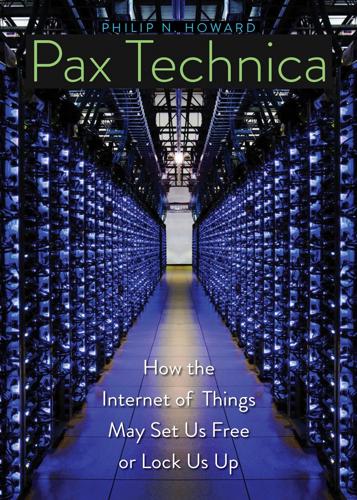
Pax Technica: How the Internet of Things May Set Us Free or Lock Us Up
by
Philip N. Howard
Published 27 Apr 2015
In the years ahead, global peace will be maintained by cyberdeterrence, and any balance of power among state actors will be achieved through either cyberwar or the perception of other actors’ abilities to wage it. So many governments and economies will be so dependent on the internet of things that massive attacks using it will be less likely. The proliferation of internet devices will result in a balance of power akin to when a handful of nuclear states held an uncomfortable balance of power. There will be an analogous possibility of accidents, and there will be regional conflicts where minor cyberskirmishes erupt. Based on our recent history, the prospects for all-out cyberwar diminish as the internet of things spreads. Cyberwar has developed in interesting ways.
…
Smashing your opponent’s computers is not just an antipropaganda strategy, and tracking people through their mobile phones is not just a passive surveillance technique. Increasingly, the modern battlefield is not even a physical territory. And it’s not just the front page of the newspaper either. The modern battlefield involves millions of individual instructions designed to hobble an enemy’s computers through cyberwar, long-distance strikes through drones, and coordinated battles that only bots can respond to. The reason that digital technologies are now crucial for the management of conflict and competition is that they respond quickly. Brain scientists find that it takes 650 milliseconds for a chess grandmaster to realize that her king has been put in check after a move.
…
At first, there were occasional and targeted attacks for specific military secrets. The earliest examples of cyberwarfare date back to the 1980s and 1990s, when Soviet and later Russian hackers went after U.S. military technologies.6 It wasn’t until the turn of the current century that the first cyberwar incidents and campaigns occurred: multiple attacks with retaliations and strategies, involving multiple people who had clearly taken sides or had been sponsored by sides. In this second phase, the attacks were mostly about embarrassing opponents by defacing their websites and demonstrating superior skills.
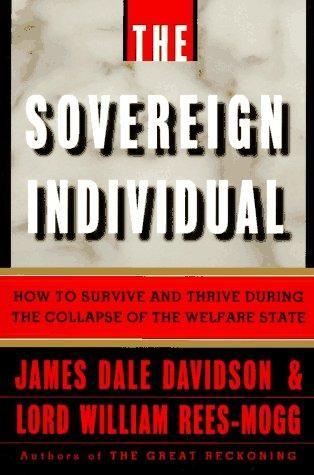
The Sovereign Individual: How to Survive and Thrive During the Collapse of the Welfare State
by
James Dale Davidson
and
William Rees-Mogg
Published 3 Feb 1997
One bizarre genius, working with digital servants, could theoretically achieve the same impact in a cyberwar as a nationstate. Bill Gates certainly could. In this sense, the age of the Sovereign Individual is not merely a slogan. A hacker, or a small group of mathematicians, not to mention a company like Microsoft, or almost any computer software company, could in principle do any or all of the things that the Pentagon's Cyber War Task Force has up its sleeves. There are hundreds of firms in the Silicon Valley and elsewhere that already have a greater capacity to wage a cyberwar than 90 percent of the existing nationstates. 141 The presumption that governments will continue to monopolize life on the ground as alternative avenues for protection open on all sides is an anachronism.
…
As pattern-recognition capabilities improve, computers linked to voice synthesizers will operate through networks to perform numerous functions formerly undertaken by humans employed as telephone operators, secretaries, travel agents, administrative assistants, chess champions, claims processors, composers, bond traders, cyberwar specialists, weapons analysts, or even street-smart flirts who answer the telephones on 900 calls. Michael Mauldin of Carnegie-Mellon University has programmed a an artificial personality named Julia, who is capable of fooling almost anyone with whom she converses on the Internet. According to press reports, Julia is a wise-cracking dame who lives out her life in a role-playing game on the Internet.
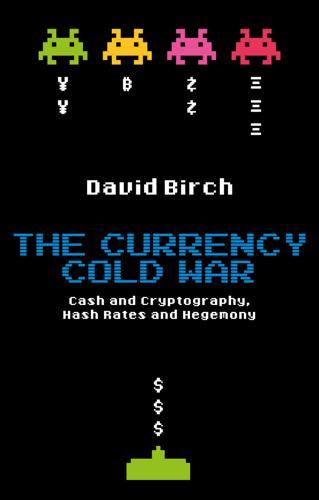
The Currency Cold War: Cash and Cryptography, Hash Rates and Hegemony
by
David G. W. Birch
Published 14 Apr 2020
In his wonderful history of the subject, The Ascent of Money, Niall Ferguson wrote that, for democracies at least, the lesson of history is that war does not pay because ‘the economic costs of war are always likely to outweigh the benefits of subsequent reparations’ (Ferguson 2001). But he was talking about military warfare, not the type of warfare we are facing now; the economics are different. This time we are in a cyberwar. We have no specific date for when this war broke out, and there is no conceivable Armistice Day on which it might end. As Bruce Schneier puts it, cyberwar is the new normal (Schneier 2018). World War III has already started, but a lot of people have so far failed to notice because it is in cyberspace. It did not begin because computers and communications technologies reached the Pentagon.
…
Early opinion sees lattice cryptosystems as both the most actively studied and the most flexible (Buchanan and Woodward 2016). They are capable of key exchanges, digital signatures and far more sophisticated constructions, such as fully homomorphic encryption, which, while not widely used now, might well be at the heart of future business infrastructure in response to the continuing cyberwar around us. Do not panic The point of this diversion was to reassure the reader that the problem is understood and in hand. So, when I refer to public-key encryption and digital signatures going forward, please take it as read that I understand that for mass-market deployments in the real world the implementation of quantum-safe algorithms is assumed!
…
The very first computers were developed to compute ballistic trajectories, and part of my young life was spent trying to work out how to use radio and satellite technologies to keep NATO computers connected after an attack on command and control infrastructure. In those far-off days, however, the reason for knocking out an enemy’s IT infrastructure was so that you could send in your tank columns or paratroopers. There were cyber aspects to war, but that was it. Now we are in a cyberwar and, in Ferguson’s terms, it is a war between networks (Ferguson 2017).39 The Canadian father of media theory, Marshall McLuhan, saw this coming just as he saw everything else coming. Way back in 1970, when the same Cold War that I fought in was well under way, he observed that ‘World War III is a guerrilla information war with no division between military and civilian participation’.

Reset
by
Ronald J. Deibert
Published 14 Aug 2020
Offensive action … takes place just below the threshold of armed conflict: But not always. For exceptions and discussion, see Zetter, K. (2014). Countdown to zero day: Stuxnet and the launch of the world’s first digital weapon. Broadway Books; Greenberg, A. (2019). Sandworm: A new era of cyberwar and the hunt for the Kremlin’s most dangerous hackers. Doubleday; For a contrary view, see Rid, T. (2013). Cyber war will not take place. Oxford University Press USA. Spreading false information is as old as humanity itself: See Posetti, J., & Matthews, A. (2018, July 23). A short guide to the history of “fake news” and disinformation. Retrieved from https://www.icfj.org/news/short-guide-history-fake-news-and-disinformation-new-icfj-learning-module Nonetheless products of history: See Deibert, R. (1999).
…
In what is truly becoming a new normal in the playbook of digital authoritarianism, al-Qahtani employed at least three separate but linked tactics. First, he contracted with the prestigious consulting firm McKinsey & Company to prepare an internal brief identifying key social media “influencers.” Left unsaid but obvious nonetheless, the aim of such a report was to help prioritize targets of al-Qahtani’s cyberwar on opposition. He simultaneously managed to secretly infiltrate Twitter itself, paying a number of Saudi-born, Silicon Valley–based engineers to find employment at the company and then clandestinely acquire confidential data on users, such as real names, private direct messages, geolocations, and IP addresses.

Hacker, Hoaxer, Whistleblower, Spy: The Story of Anonymous
by
Gabriella Coleman
Published 4 Nov 2014
You have accomplished nothing except inflaming ‘cyberwar’ rhetoric and fueling legislation that will end up with hackers getting 50 years in prison. The most retarded part is that you dont even realize you are the cause of the very thing you hate; Every time you DDoS a company Prolexic or DOSarrest sign up a new customer. Every time you SQL inject some irrelevant site a pentesting company gets a new contract. Every time you declare cyberwar on the government federal contractors get drowned in grant money. Other hackers and netizens also accused Anonymous of fortifying the cyberwar industrial complex. But it’s worth noting that long before Anonymous came to prominence, national governments around the world already aspired to control the Internet and were already developing statutes that eroded individual rights and privacies.
…
Phil Lapsley, Exploding the Phone: The Untold Story of the Teenagers and Outlaws Who Hacked Ma Bell (New York: Grove Press, 2013), 226. 14. Steven, Levy, Hackers: Heroes of the Computer Revolution—25th Anniversary Edition (Sebastapol: CA O’Reilly Media, 2010). 15. Adam L. Penenberg, “A Private Little Cyberwar,” forbes.com, Feb. 21, 2000. 16. “Biography of u4ea,” soldierx.com, last accessed May 21, 2014, available at https://www.soldierx.com/hdb/u4ea. 17. Marco Deseriis, “ ‘Lots of Money Because I Am Many’: The Luther Blissett Project and the Multiple-Use Name Strategy,” in Cultural Activism: Practices, Dilemmas and Possibilities (Amsterdam: Rodopi, 2011), 65–93. 18.
…
“Untitled,” Dec. 10, 2010, last accessed June 3, 2014, available at http://pastebin.com/WzzJ1Jp3. 20. Joel Johnson, “What Is LOIC?,” gizmodo.com, Dec. 8, 2010. 21. Gerry Smith, “Feds Charge 13 Members Of Anonymous in ‘Operation Payback’ Attacks,” huffingtonpost.com, Oct. 3, 2010. 22. For the definitive account of early hactivism, see Tim Jordan and Paul Taylor, Hactivism and Cyberwars: Rebels with a Cause? (New York: Routledge, 2004). 23. Molly Sauter, “‘LOIC Will Tear Us Apart,’ ” American Behavioral Scientist, 998, vol 57 (2013): 983–100. 24. Frances Fox Piven, Who’s Afraid of Frances Fox Piven?: The Essential Writings of the Professor Glenn Beck Loves to Hate (New York: New Press, 2011). 25.

The Industries of the Future
by
Alec Ross
Published 2 Feb 2016
The screenshot was from the hacked site: “Security Service of Ukraine Ensured Protection and Safe Functioning of Telecommunication System of the Central Electoral Commission during Elections of the President of Ukraine,” Security Service of Ukraine, May 27, 2014, http://www.sbu.gov.ua/sbu/control/en/publish/article?art_id=126126&cat_id=35317&mustWords=discredit&searchPublishing=1. Pro-Russian hacktivist group CyberBerkut: CyberBerkut, http://www.cyber-berkut.org/. The wave of denial-of-service attacks: Jeremy Hsu, “Why There’s No Real Cyberwar in the Ukraine Conflict,” IEEE Spectrum, March 14, 2014, http://spectrum.ieee.org/tech-talk/computing/networks/why-theres-no-real-cyberwar-in-the-ukraine-conflict. Eventually a Kremlin-backed patriotic: Charles Clover, “Kremlin-Backed Group behind Estonia Cyber Blitz,” Financial Times, March 11, 2009, http://www.ft.com/intl/cms/s/0/57536d5a-0ddc-11de-8ea3-0000779fd2ac.html#axzz33Us0YfDw.
…
Under this international framework, nuclear war is still a threat, but nuclear weapons are well understood and there are processes in place to manage them. In the 20th century, similar sets of procedures and rules were also developed for the weaponization of airplanes, space, and chemical and biological weapons. But the confounding factor when it comes to cyberwar is that the barriers to entry are so much lower in cyber than in any of these other domains. Any country, or even any rogue group or individual, that puts a little bit of time and effort into it can develop some nasty offensive cyber capabilities. It is, in fact, the near-opposite of the development of nuclear arms, which requires years of work, billions of dollars, and access to the scarcest of scarce scientific talent and transuranium elements.
…
If those networks and servers are attacked, is it the responsibility of the headquarters country or the country where the servers are located to respond? If neither government responds and the corporation defends its network with a cyberattack of its own, who else does this entangle? If international norms and treaties are not agreed to, setting definitions and boundaries for cyberconflict, a cyberwar is just as likely to be fought between a country and a company as it is between two countries. This blurring of lines calls into question the role of government and its responsibility to protect its citizens and corporations. Throughout summer and fall 2014, the Obama administration monitored a hack of JPMorgan Chase and other American banking institutions as a national security threat that required the direct engagement of the president of the United States.

Likewar: The Weaponization of Social Media
by
Peter Warren Singer
and
Emerson T. Brooking
Published 15 Mar 2018
Many articles and books had been written on “cybersecurity” and “cyberwar” (including by one of us)—raising the specter of hackers breaking into computers and implanting malicious lines of software code. When the next war came, we’d often been told, it would be a techno-nightmare marked by crashing networks, the disruption of financial markets, and electrical outages. It would show the “true” power of the internet in action. But the abrupt fall of Mosul showed that there was another side to computerized war. The Islamic State, which had no real cyberwar capabilities to speak of, had just run a military offensive like a viral marketing campaign and won a victory that shouldn’t have been possible.
…
The first time Arquilla and Ronfeldt put their thoughts into a short memo, the Pentagon immediately classified it. Their findings were made public in a revolutionary 1993 article titled “Cyberwar Is Coming!” At a time when the internet hadn’t even yet been opened up to commercial activity, they observed that “information is becoming a strategic resource that may prove as valuable and influential in the post-industrial era as capital and labor have been in the industrial age.” Accordingly, future conflicts would be won not by physical forces, they argued, but by the availability and manipulation of information. They warned of “cyberwar,” battles in which computer hackers might remotely target economies and disable military capabilities.
…
Neutrality in World War I (University of Missouri Press, 2016), 196; “British Cable Steamer.” 181 German word kadaver: Garth S. Jowett and Victoria O’Donnell, Propaganda and Persuasion, 5th ed. (Sage, 2012), 167. 182 When the United States: Ibid., 217–25. 182 Pentagon immediately classified: David Ronfeldt, phone interview with author, December 4, 2014. 182 “Cyberwar Is Coming!”: John Arquilla and David Ronfeldt, “Cyberwar Is Coming!,” Comparative Strategy 12, no. 2 (1993): 141–65, https://www.rand.org/content/dam/rand/pubs/reprints/2007/RAND_RP223.pdf. 182 “information is becoming”: Ibid. 183 “It means trying”: Ibid. 183 essentially a dead topic: Ronfeldt interview. 183 “Our hope was”: John Arquilla, phone interview with author, November 3, 2014. 184 “global information warfare”: Jolanta Darczewska, The Anatomy of Russian Information Warfare: The Crimean Operation, A Case Study, Point of View, no. 42 (Centre for Eastern Studies, May 2014). 184 release of an atomic bomb: Ulrik Franke, “War by Non-military Means: Understanding Russian Information Warfare” (report, Swedish Ministry of Defense, March 2015), 27, http://johnhelmer.net/wp-content/uploads/2015/09/Sweden-FOI-Mar-2015-War-by-non-military-means.pdf. 184 “blur the traditional”: Ministry of Foreign Affairs of the Russian Federation, “Doctrine of Information Security of the Russian Federation,” December 5, 2016, http://www.mid.ru/en/foreign_policy/official_documents/-/asset_publisher/CptICkB6BZ29/content/id/2563163. 184 “a system of spiritual”: Franke, “War by Non-military Means,” 12. 184 “measures aiming to pre-empt”: Ibid., 11. 184 “three warfares”: Information at War: From China’s Three Warfares to NATO’s Narratives, Beyond Propaganda (Transitions Forum, Legatum Institute, September 2015), https://stratcomcoe.org/legatum-institute-information-war-chinas-three-warfares-natos-narratives. 185 “War is accelerating”: State Council Information Office of the People’s Republic of China, “China’s Military Strategy (2015)” (report, May 2015), https://jamestown.org/wp-content/uploads/2016/07/China%E2%80%99s-Military-Strategy-2015.pdf. 185 Operation Earnest Voice: Nick Fielding and Ian Cobain, “Revealed: US Spy Operation That Manipulates Social Media,” The Guardian, March 17, 2011, https://www.theguardian.com/technology/2011/mar/17/us-spy-operation-social-networks. 185 “allow one U.S. serviceman”: Ibid. 185 In 2015, Britain formed: Ewen MacAskill, “British Army Creates Team of Facebook Warriors,” The Guardian, January 31, 2015, https://www.theguardian.com/uk-news/2015/jan/31/british-army-facebook-warriors-77th-brigade. 185 “agent of change”: “77th Brigade,” British Army, accessed October 5, 2017, http://www.army.mod.uk/structure/39492.aspx?

The Autonomous Revolution: Reclaiming the Future We’ve Sold to Machines
by
William Davidow
and
Michael Malone
Published 18 Feb 2020
History is replete with stories of obsolete societies that tried to apply old solutions to new challenges. Think of the Ethiopian tribesmen who tried to fight Italian tanks with spears. When we are threatened by the future, we tend to react with denial and confusion. Our reaction to the current threats of cyber war, cyber terror, and cybercrime are perfect cases in point. Once again, we seem to have forgotten the painful lessons of the past. As pointed out in chapter 5, when the first credit card systems were designed, the companies involved envisioned fraud as a minor problem and decided against incorporating features such as PINs out of fear that they would interfere with market development.
…
Or this: Because cybersecurity and physical security are increasingly interconnected, DHS has partnered with the critical infrastructure community to establish a voluntary program to encourage use of the Framework for Improving Critical Infrastructure Cybersecurity to strengthen critical infrastructure cybersecurity.50 If this strikes you as a totally inadequate, passive, policy response to a very serious threat, you are right. It is spears against tanks. The phase change is under way, the rules have already changed—and governments don’t understand what those new rules are. They need to learn … and quickly. In the many cases of cyber war, terror, and crime, the best defense will no longer be an offense. It will be a system of well-planned defensive measures. The U.S. government needs to pass laws and regulate behavior so that businesses, utilities, government institutions, and private individuals will install strong defensive measures and require their use.
…
But they chose the path of least resistance, and users soon found themselves paying to buy items, only to have sellers disappear after they received their cash. As a country, we should have made cyber-defense a priority, starting in 1982. That was the year that the first cyber-bomb exploded. One might choose to label the explosion an act of cyberwar, but it is probably more accurate to label it a cybercrime gone wrong. Here’s what happened: The United States wanted to disrupt the functioning of a Siberian pipeline to make it harder for the Soviets to export natural gas and earn hard currency. (Remember this was 1982, before the collapse of the Soviet Union.)

In the Flow
by
Boris Groys
Published 16 Feb 2016
The Internet is a space in which the subject is originally constituted as something transparent, observable – only afterwards does he or she take steps to be technically protected, to conceal the originally revealed secret. Moreover, every technical protection can be breached. Today, the hermeneutiker is a hacker. The contemporary Internet is place of cyberwars in which the secret is the prize. To know the secret means to gain control of the subject that is constituted by this secret; thus the cyberwars are wars of subjectivation and desubjectivation. But these wars can take place only because the Internet is originally a place of transparency and referentiality. Nevertheless, the so-called content providers often complain that their artistic production drowns in the sea of data that circulates through the Internet and, thus, remain invisible.
…
User or content provider – in the context of the Internet the human being acts and is perceived as an empirical person and not as an ‘immaterial’ subject. Of course, we are discussing the Internet as we know it. But I expect that the present state of the Internet will be radically changed by the impending cyberwars. These wars have already been announced, and they will destroy or at least seriously damage the Internet as a means of communication and as the dominant marketplace. The contemporary world looks very much like the nineteenth-century world – a world defined by the politics of open markets, growing capitalism, celebrity culture, the return of religion, terrorism, and counterterrorism.
…
See reproduction copy-and-past operation, 162 creative work, 181 Crimp, Douglas, 184 critical art, 86 critical theory, 28–9, 30, 32–3 critical thinking, 26 A Critique of the German Ideology (Marx and Engels), 77–9 Critique of the Power of Judgment (Kant), 47–8 Cubism, 116 cultural archives, 183 cultural institutions, 171–2, 175–6, 183. See also art museums culture, 109–10 curator, 18, 84, 85–6, 152 curatorial projects, 3, 17–8, 19. See also art events; artistic installations cut-and-paste operations, 187 cyberwars, 177, 185 Dada, 4 Dadaists, 38, 119 data protection, 164, 176 death display of in museums, 48–9 interruption of life events, 36 in Kabakov’s art, 95, 97 modern and contemporary art portraying, 57 requirement of communism, 13 theories concerning, 33 death of the subject, 161 Debord, Guy, 16, 29, 44, 111, 119–20 deconstructionists, 145, 150 defamiliarization, 56 defictionalization of art and literature, 172 defunctionalization of status quo, 56 ‘Degenerate Art’ (exhibition), 90 Deleuze, Gilles, 39, 72–3 Deleuzian machines of desire, 145–6, 161 democracy, 40–1, 85 dérive, 16 Derridian deconstruction, 145, 150, 161, 164 Descartes, René, 28, 118 design, 46, 47–9, 54, 109 De Stijl, 119 Dialectic of Enlightenment (Adorno and Horkheimer), 106 dialectics of imperfection, 69–71 dictionaries, 149–50 digital archiving, 4–5, 12, 144, 145.
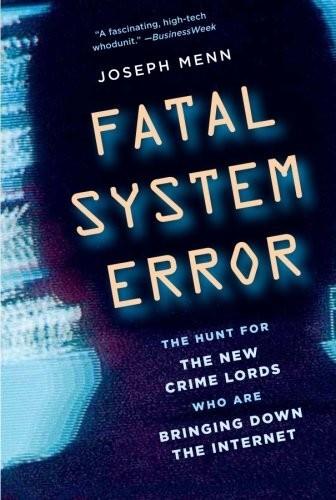
Fatal System Error: The Hunt for the New Crime Lords Who Are Bringing Down the Internet
by
Joseph Menn
Published 26 Jan 2010
Private researchers could explain how one virus differed from previous versions, law enforcement could complain about how the trails from identity theft crimes went overseas and grew cold, and a handful of academics could hold forth on the politics of Eastern Europe. But even as fears rose to the point that President Barack Obama devoted a speech to the vast dangers of cybercrime, cyberspying, and cyberwar, almost no one could give a full picture. Once more, Barrett Lyon could. By then, I learned, he had penetrated not just the Russian mob but the American mob as well, and had gone undercover again, this time wearing a wire for the FBI. Only now does that work become public. In turn, he and I also met British agent Andy Crocker, who followed his leads and plunged deeper than any previous Westerner into hacking in the former Soviet Union—and whose adventures have never been recounted.
…
They’re up right now,” Daly told his boss. Laslop said he thought Reshef’s life had been threatened. Blue Security’s site stayed up long enough for it to post a cryptic goodbye message. “We determined that once we reactivated the Blue Community, spammers would resume their attacks. We cannot take responsibility for an ever-escalating cyberwar through our continued operations.” The company stopped doing business, and the previously media-friendly CEO never gave any interviews about why he quit. It could have been death threats, fear of legal repercussions, or concern for the fate of Blue Security users. But perhaps Reshef knew what would happen next.
…
The vast network, which the group dubbed GhostNet in a report, had infected 1,295 machines, 397 of which were “either significant to the relationship between China and Tibet, Taiwan or India, or were identified as computers at foreign embassies, diplomatic missions, government ministries or international organizations.” DURING THE BUSH ADMINISTRATION, the White House response to the cyberwar threat was abysmal—far worse than its tepid reaction to the rising power of cybercriminal gangs. As far back as 2002, before the rise of the botnets, a broad and distinguished group was so concerned about cyberattacks on the country’s infrastructure that it asked Bush to invest an initial $500 million in a new Manhattan Project for Internet defense.

Enlightenment Now: The Case for Reason, Science, Humanism, and Progress
by
Steven Pinker
Published 13 Feb 2018
Schneier, “Someone Is Learning How to Take Down the Internet,” Lawfare, Sept. 13, 2016. 51. Skepticism about cyberwar: Lawson 2013; Mueller & Friedman 2014; Rid 2012; B. Schneier, “Threat of ‘Cyberwar’ Has Been Hugely Hyped,” CNN.com, July 7, 2010, http://www.cnn.com/2010/OPINION/07/07/schneier.cyberwar.hyped/; E. Morozov, “Cyber-Scare: The Exaggerated Fears over Digital Warfare,” Boston Review, July/Aug. 2009; E. Morozov, “Battling the Cyber Warmongers,” Wall Street Journal, May 8, 2010; R. Singel, “Cyberwar Hype Intended to Destroy the Open Internet,” Wired, March 1, 2010; R. Singel, “Richard Clarke’s Cyberwar: File Under Fiction,” Wired, April 22, 2010; P.
…
University evolution education: The effect of evolution instruction on biology majors’ content knowledge, attitude toward evolution, and theistic position. Evolution: Education and Outreach, 4, 137–44. Richards, R. J. 2013. Was Hitler a Darwinian? Disputed questions in the history of evolutionary theory. Chicago: University of Chicago Press. Rid, T. 2012. Cyber war will not take place. Journal of Strategic Studies, 35, 5–32. Ridley, M. 2000. Genome: The autobiography of a species in 23 chapters. New York: HarperCollins. Ridley, M. 2010. The rational optimist: How prosperity evolves. New York: HarperCollins. Ridout, T. N., Grosse, A. C., & Appleton, A.
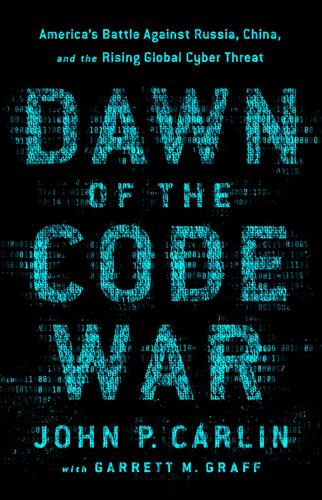
Dawn of the Code War: America's Battle Against Russia, China, and the Rising Global Cyber Threat
by
John P. Carlin
and
Garrett M. Graff
Published 15 Oct 2018
See declassified MOONLIGHT MAZE case files, released under the FOIA, at http://goo.gl/9AMJJw and at https://medium.com/@chris_doman/the-first-sophistiated-cyber-attacks-how-operation-moonlight-maze-made-history-2adb12cc43f7. 80. Rid, Rise of the Machines, 333. 81. Martyn Thomas, “What Really Happened in Y2K?” Gresham College, www.gresham.ac.uk/lectures-and-events/what-really-happened-in-y2k. 82. “Newsweek Exclusive: ‘We’re in the Middle of a Cyberwar’,” PR Newswire, Cision, September 12, 1999, www.prnewswire.com/news-releases/newsweek-exclusive-were-in-the-middle-of-a-cyberwar-74343007.html. 83. Rebecca Hersher, “Meet Mafiaboy, the ‘Bratty Kid’ Who Took Down the Internet,” All Things Considered from NPR, www.npr.org/sections/alltechconsidered/2015/02/07/384567322/meet-mafiaboy-the-bratty-kid-who-took-down-the-internet. 84.
…
Was this Iraq launching a preemptive attack or gathering critical intelligence? “It was a wake-up call,” recalled Brigadier General Francis “Frank” Taylor, the head of the air force’s Office of Special Investigations.71* The deputy secretary of defense, John Hamre, warned President Clinton that this might be “the first shots of a genuine cyber war.”72 The hacking was sophisticated. Utilizing a known vulnerability in the UNIX operating system known as Solaris, whoever was behind the attacks would sneak inside the network, then install a “packet sniffer” to gain additional usernames and passwords, and create a new back door to ensure ongoing network access.
…
US Committee on Energy and Commerce, Subcommittee on Oversight and Investigations, Cyber Espionage and the Theft of U.S. Intellectual Property and Technology, July 9, 2013, docs.house.gov/meetings/IF/IF02/20130709/101104/HHRG-113-IF 02-Wstate-WortzelL-20130709-U1.pdf. Text transcription of hearing. 7. Ibid. 8. See Fred Kaplan, Dark Territory: The Secret History of Cyber War (Simon & Schuster, 2016), 191, and Andrew Blum, Tubes: A Journey to the Center of the Internet (HarperCollins, 2012), 61. 9. “Gartner Says 6.4 Billion Connected ‘Things’ Will Be in Use in 2016, Up 30 Percent from 2015,” November 10, 2015, www.gartner.com/newsroom/id/31 65317. 10. Craig Timberg, “Net of Insecurity: A Flaw in the Design,” Washington Post, May 30, 2015, www.washingtonpost.com/sf/business/2015/05/30/net-of-insecurity-part-1//?

Strategy: A History
by
Lawrence Freedman
Published 31 Oct 2013
Ordinary people could spread images with cell phone photos and news, often inaccurate and half-digested, could spread on social networking sites, while governments were still trying to work out what was going on and shape a response.36 Did this amount to the danger identified by John Arquilla and David Ronfeldt in 1993, when they warned that “Cyberwar is Coming!”37 Their claim was that future wars would revolve around knowledge. They distinguished between “cyberwar,” which they limited to military systems (although it became expanded in later use) and “netwar,” which was more at the societal level. The issue was the same as for any new form of warfare: could it be decisive on its own? Or, as Steve Metz put it, could a “politically usable way” be found to damage an “enemy’s national or commercial infrastructure” sufficiently “to attain victory without having to first defeat fielded military forces?”
…
Nik Gowing, ‘Skyful of Lies’ and Black Swans: The New Tyranny of Shifting Information Power in Crises (Oxford, UK: Reuters Institute for the Study of Journalism, 2009). 37. John Arquilla and David Ronfeldt, “Cyberwar is Coming!” Comparative Strategy 12, no. 2 (Spring 1993): 141–165. 38. Steve Metz, Armed Conflict in the 21st Century: The Information Revolution and Post-Modern Warfare (April 2000): “Future war may see attacks via computer viruses, worms, logic bombs, and trojan horses rather than bullets, bombs, and missiles.” 39. Thomas Rid, Cyberwar Will Not Take Place (London: Hurst & Co., 2013). David Betz argues for the complexity of effect in “Cyberpower in Strategic Affairs: Neither Unthinkable nor Blessed,” The Journal of Strategic Studies 35, no. 5 (October 2012): 689–711. 40.
…
Or, as Steve Metz put it, could a “politically usable way” be found to damage an “enemy’s national or commercial infrastructure” sufficiently “to attain victory without having to first defeat fielded military forces?”38 The presumption that there might be a decisive cyberwar attack assumed that the offense would dominate and that the effects would be far-reaching, enduring, and uncontainable. The threat gained credibility from the frequency with which companies and even high-profile networks, including the Pentagon, were attacked by hackers. Protecting and managing privileged information against sophisticated foes who probed persistently for the weakest links in networks became a high priority.

Our Final Invention: Artificial Intelligence and the End of the Human Era
by
James Barrat
Published 30 Sep 2013
* * * Cyber experts play war games that feature cyberattacks, creating disaster scenarios that seek to teach and to provoke solutions. They’ve had names like “Cyberwar” and “Cyber Shockwave.” Never, however, have war-gamers suggested that our wounds would be self-inflicted, although they will be in two ways. First, as we’ve discussed, the United States cocreated the Stuxnet family, which could become the AK-47s of a never-ending cyberwar: cheap, reliable, and mass-produced. Second, I believe that damage from AI-grade cyberweapons will come from abroad, but also from home. Compare the dollar costs of terrorist attacks and financial scandals.
…
The consensus of experts and self-congratulatory remarks made by intelligence officials in the United States and Israel left little doubt that the two countries jointly created Stuxnet, and that Iran’s nuclear development program was its target. Then, in the spring of 2012, a White House source leaked to The New York Times that Stuxnet and related malware named Duqu and Flame were indeed part of a joint U.S.-Israel cyberwar campaign against Iran called Olympic Games. Its builders were the United States’ National Security Agency (NSA) and a secret organization in Israel. Its goal was indeed to delay Iran’s development of nuclear weapons, and avoid or forestall a conventional attack by Israel against Iran’s nuclear capabilities.
…
it was built to kill industrial machines: Bres, Eric, “The Stuxnet Mystery Continues,” Tofino (blog), October 10, 2010, http://www.tofinosecurity.com/blog/stuxnet-mystery-continues (accessed June 14, 2012). holes that permit unauthorized access: IT Networks, “Stuxnet Things You Don’t Know,” last modified March 25, 2011, http://www.it-networks.org/2011/03/25/stuxnet-things-you-dont-know/ (accessed December 14, 2011). their operators didn’t sense anything wrong: Poeter, Damon, “Former NSA Head: Hitting Iran with Stuxnet Was a ‘Good Idea,’” PCMAG.COM, March 12, 2012, http://www.pcmag.com/article2/0,2817,2401111,00.asp (accessed April 22, 2012). two countries jointly created Stuxnet: Ibid. a joint U.S.-Israel cyberwar campaign against Iran: Sanger, David, “Obama Order Sped Up Wave of Cyberattacks Against Iran,” New York Times, June 1, 2012, http://www.nytimes.com/2012/06/01/world/middleeast/obama-ordered-wave-of-cyberattacks-against-iran.html?_ (accessed June 14, 2012). Duqu and Flame are reconnaissance viruses: “W32.Duqu: The Precursor to the Next Stuxnet,” Symantec Connect (blog), October 24, 2011, http://www.symantec.com/connect/w32_duqu_precursor_next_stuxnet (accessed January 14, 2012).

The Rare Metals War
by
Guillaume Pitron
Published 15 Feb 2020
16 In 2013, Eric Schmidt, the then chair of Google’s board of directors, and Jared Cohen, a former advisor to Hillary Clinton in the US State Department and the self-appointed father of ‘digital diplomacy’, took the rationale a step further with the publication of their book The New Digital Age.17 The global bestseller has helped open our eyes to the growing role of the virtual world. Courtesy of the internet, the two gurus explain, ‘the vast majority of us will increasingly find ourselves living, working, and being governed in two worlds at once’: the physical world and the virtual world. In the future, there will be more and more cyber-states, declaring more cyber-wars against virtual criminal networks that perpetrate increasingly powerful cyber-attacks.18 Yet this is also a prophecy that promises the utopia of a dematerialised world. Already dematerialisation is synonymous with working from home, e-commerce, electronic documentation, digital data storage, and more.
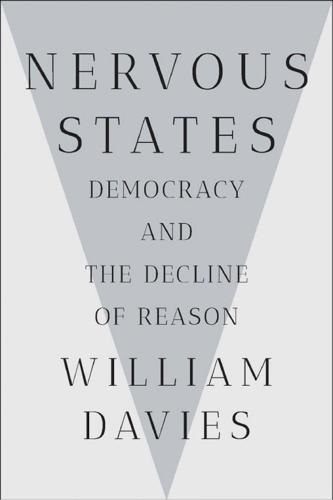
Nervous States: Democracy and the Decline of Reason
by
William Davies
Published 26 Feb 2019
The Russian government exploits the “full spectrum” of hostile interventions to disrupt enemies both within and beyond its borders. These might be illegal, such as the use of a nerve agent in Britain in March 2018, but fall short of being spoken of as “war.” Then there are the various so-called “wars” that don’t involve military combat, such as the “war on drugs,” “cyberwar” or “information war.” States are made increasingly nervous by the difficulty of establishing where war begins and ends, and how to define an enemy. The ambiguity cuts both ways, with military units also being used overseas for peacekeeping and law enforcement, as if they were civilian governments.
…
All political regimes have points of acute vulnerability, he argued, of which they themselves may not be aware because they’ve never considered them in terms of war. Small acts of transgression can have major political effects, if the right tool and target are carefully selected. The article was widely read as a way of understanding Russian tactics and strategies in the context of cyberwar and other covert hostilities, such as those that have sought to disrupt elections in NATO countries. The “Gerasimov Doctrine,” as it became known, has helped to explain why Russia seems to be using a wider range of nonmilitary means, such as online trolling, data breaches, and “fake news,” to sow civic and political unrest.
…
The most serious threat here is not that we lose any respect for truth as such, but that truth becomes a political issue, which heightens disagreement and the potential for conflict rather than resolving them. That may be what Russian defense strategists are seeking. The Gerasimov Doctrine speaks specifically to the age of social media and “cyberwar.” But its underlying proposition is not new. The legal commitment to splitting “war” from “peace” that was established in Europe in the mid-seventeenth century may have survived rhetorically, but the distinction has been muddied by a whole range of technical and administrative innovations, which crisscross between military, government, business, and back to the military again.

We Are Anonymous: Inside the Hacker World of LulzSec, Anonymous, and the Global Cyber Insurgency
by
Parmy Olson
Published 5 Jun 2012
I have exchanged e-mails with Lloyd “the Mentor” Blankenship to corroborate details about his writing of the 1986 essay. Sabu/Monsegur provided me with links that still showed the deface message he published on the Puerto Rican government websites. Further details on the U.S.-China cyber war that Sabu involved himself in were corroborated by news reports such as Wired’s “It’s (Cyber) War: China vs. U.S.,” published in April of 2001, and CNN’s “China-U.S. Cyber War Escalates,” published on May 1, 2001. Further details about Monsegur and his attempts to start a group for local programmers in 2002 also come from a “dox” file posted by a security researcher nicknamed Le Researcher, who pasted a variety of screenshots of e-mails, deface messages, and forum posts on http://ceaxx.wordpress.com/uncovered/.
…
Smiling at his work, Monsegur considered this his first act of hacktivism. When the U.S. military gave control of the Vieques base back to the locals two weeks later, he felt it was partly thanks to him. Monsegur wanted to keep going. He threw himself into hacking, joining the first stirrings of a cyber war between American and Chinese hackers, which mostly involved young men from each side trash-talking and defacing websites in the other side’s country. Operation China took place in 2001, the same year that Monsegur appears to have dropped out of high school. Beijing at that time had refused to give President Clinton access to a U.S. spy plane that had collided with a Chinese fighter jet and crash-landed on Hainan island.
…
The two were talking sometimes for several hours a day in between the other goings-on in their lives. They got to know each other a little better. Topiary never dared ask Sabu what he had done in the past, but the older hacker laid it out anyway. He told stories about hacking the Puerto Rican government, about cyber war with Chinese hackers, about his defacing spree, about going underground, and about why he had come back to support Anonymous the previous December. Topiary found himself in awe of Sabu’s relentless drive to be a hacktivist after an incredible eleven years, and of his long monologues about refusing to sit down to an authoritative society.

Surveillance Valley: The Rise of the Military-Digital Complex
by
Yasha Levine
Published 6 Feb 2018
Facebook is betting big on virtual reality as the user interface of the future. The Pentagon is, too. According to reports, Facebook’s Oculus virtual reality headset has already been integrated into DARPA’s Plan X, a $110 million project to build an immersive, fully virtual reality environment to fight cyberwars.138 It sounds like something straight out of William Gibson’s Neuromancer, and it seems to work, too. In 2016, DARPA announced that Plan X would be transitioned to operational use by the Pentagon’s Cyber Command within a year.139 On a higher level, there is no real difference between Google’s relationship with the US government and that of these other Internet companies.
…
There, working for the NSA’s information-sharing office out of an underground bunker once used as a storage facility, Snowden began collecting the documents he would use to expose America’s surveillance apparatus. He even applied for a transfer to a different NSA division—this one under contractor Booz Allen Hamilton—because it would give him access to a set of documents on US cyberwar operations that he thought the American people should see.46 “My position with Booz Allen Hamilton granted me access to lists of machines all over the world the NSA hacked. That is why I accepted that position about three months ago,” he told the South China Morning Post from his hideout in Hong Kong.47 Snowden explained his motive in simple moral terms.
…
“You’re not in a two-dimensional view, so you can look around the data. You look to your left, look to your right, and see different subnets of information. With the Oculus you have that immersive environment. It’s like you’re swimming in the internet.” Andy Greenberg, “Darpa Turns Oculus into a Weapon for Cyberwar,” Wired, May 23, 2014. 139. Ellen Nakashima, “With Plan X, Pentagon Seeks to Spread U.S. Military Might to Cyberspace,” Washington Post, May 30, 2012; “DARPA’s Plan X Gives Military Operators a Place to Wage Cyber Warfare,” DoD News, May 12, 2016. 140. The satellite was launched on September 6, 2008, from Vandenberg Air Force Base, sixty miles north of Santa Barbara, California.

The WikiLeaks Files: The World According to US Empire
by
Wikileaks
Published 24 Aug 2015
“Worse than a military attack,” the Republican congressman Peter King expostulated in November 2010, urging that WikiLeaks be categorized as a “terrorist organization.”23 Vice President Joe Biden accused Julian Assange of being a “high-tech terrorist.” Hunt him down like bin Laden, exhorted Sarah Palin.24 “Yes, WikiLeaks is a terrorist organization,” said Fox News.25 The basis of this overblown charge was that WikiLeaks was waging a “cyber-war” on the United States that placed “vital interests” at risk—particularly the flows of information necessary to track down and capture “terrorists”—thus putting American lives in danger. When WikiLeaks invited the US government to name a single cable whose publication put anyone at significant risk of harm, the State Department’s legal advisor wrote back formally declining to name a specific danger, but nonetheless ordered WikiLeaks to shut down its websites, cease publication, and destroy all the information it held.26 This charge of “terrorism” was not merely lazy or overexcited: there was real power behind it.
…
Nicholas 289–91 Burns, William 214–15, 217–18, 219, 230, 245–6, 251, 329–30 Bush, George 46, 75, 444–5, 479–80 Bush, George W. 39–40, 77, 81, 99, 108–9, 113, 156, 159, 169, 481–2, 536; and Afghanistan 369, 386, 387, 389; Anti-Ballistic Missile Treaty withdrawal 212, 224; and Brazil 171; China policy 455; and Costa Rica 170; and Ecuador 177; and the ICC 161–2, 177; Iran policy 339–40; and Iraq 354; and North Korea 396–7; Southeast Asia policy 445; START I Treaty 231; Syria policy 320; Turkish policy 244–5 Bush Six investigation 207–10 Business Insider 241 Butler, Martin 487–8 Butler, Smedley 53 Bybee, Jay 108, 207–10 Bybee memo, the 108–9 Cablegate cables 9, 80, 145, 155, 156, 181, 182, 184 Calipari, Nicola, murder 200–1 Cameron, David 47 Campbell, Kurt 400, 412–19 Camp David accords 28, 39, 45 Camp Mercury 103 Canada 538 Caribbean, the 483, 534–5 Carney, Tim 512 Carter Cables, the 145, 157 Carter, Jimmy 29, 63, 120, 474–7 Carter Ruck 114–15 Cartwright, James 423 Castro, Fidel 491, 515 Caulfield, John 521–2, 530–1 censorship 11 Center for a New American Security (CNAS) 400 Cerén, Salvador Sánchez 492 Chalabi, Ahmed 83–4 Chamorro, Violeta 58 Charter of Economic Rights and Duties of States 138 Chassy, Bruce 188–9 Chávez, Hugo 72, 125, 129, 491, 497; containment policy 538–41; coup attempt against, 2002 30, 59–60, 515–16; death 525, 545; obsession with 515; Petrocaribe program 530–4; popularity 522; radical populist allies 541–4; threat 527–8 Chechen War, Second 215 Cheney, Dick 77, 99 CHEROKEE restriction 13 Chile 49, 516; Article 98 agreements 172; economic reform 69–70; human rights 68–9; ICC-related sanctions 172–3; the Kissinger cables 65–70; Pinochet coup 57, 66–8 China 418, 436, 444, 447; and the Philippines 453–5, 456–7; rise of 447–9, 450, 450–8; US suspicion of 451–5, 470 Christian Science Monitor 216 CIA: and Chile 66–8; coup d’état sponsorship 17–18, 484, 516; covert operations 30; and Ecuador 501–2; in Haiti 64; human rights abuses 75; and Iran 331; in Latin America 51, 57; Omar abduction 206–8; Operation Phoenix 102; overthrow of Mossadegh government 28; Project X 102; rendition 14; and the State Department 4; and Turkey 239–40; use of torture 12, 14, 96, 97, 101–3, 105–9, 206, 386–7; in Venezuela 516 civilians: in Afghanistan 382, 384–5; casualty numbers 86, 88, 89; collateral damage 78, 89–93, 382; definition 12, 87–9; disregard for 76; drone strikes 88–9; killings 86–8; military-aged men 87–9, 91–2; targeting 89–93 Clark, Warren 479 classification levels and markings 6, 6–8, 7–8, 149, 150–2 climate change 469 Clinton, Bill 161, 445, 448, 480 Clinton, Hillary 13, 24, 40, 41, 70–3, 405, 490–1 cluster bombs 378–81 Cockburn, Alexander 306 Cold War 45, 50, 55, 60, 62, 182, 183, 212, 235, 416, 433, 442–4, 527 collateral damage 78 collateral murder 350–2 Colom, Álvaro 535–7 Columbia University, School of International and Public Affairs 8–9 Combatant Status Review Tribunals 100 communications, development of 2–3 Communism, threat of 44, 55, 63, 101–2 Comprehensive Anti-Apartheid Act 478, 479 Congo 28 Congressional Research Reports 14, 15 Congressional Research Service (CRS) 169, 177, 368–9, 371–2 Contras, the 57–58, 306, 492 Contreras-Sweet, Maria 492 conventional prompt global strike (CPGS) 233 Conventional Trident Modification program 233 Convention on Cluster Munitions (CCM) 379 Copenhagen, Climate Conference 469 corporate corruption 113, 113–17 Correa, Rafael 125–32, 498–503, 516, 541 Cossio, Mario 509 Costa Rica 170 Coughlin, Dan 533 courts, use of WikiLeaks materials 9–10 Crimea 187, 217 Croatia 163 Cserveny, Vilmos 340 Cuba 26, 50, 51, 52, 98, 486 Cuban Missile Crisis 98 Cuban Revolution 57 cyber-war 80 Czech Republic 225, 227 Daalder, Ivo 196–7 Daanoy, Norman 466–7 Dagan, Meir 251, 289–91, 294–5 Damascus Declaration 314, 315 Dasht-E-Leili massacre, Afghanistan 392–4 Davutoğlu, Ahmet 248–51, 260–1 Dayton, Keith 277 Deauville Partnership 47–8 debt, international 45, 123–5 Declaration on the Conduct of Parties in the South China Sea 450 Defense Planning Guidance, 1992 444–5 Defense Trilateral Talks (DTT) 406–7 Déjoie, Louis 62, 63 de Klerk, F.
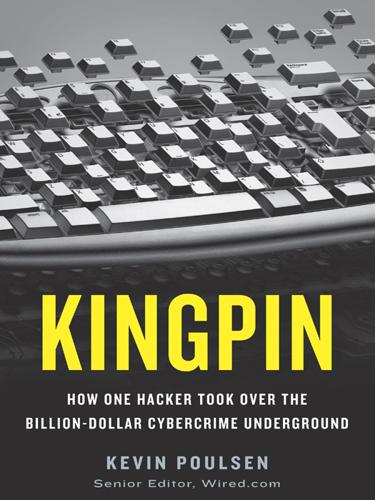
Kingpin: How One Hacker Took Over the Billion-Dollar Cybercrime Underground
by
Kevin Poulsen
Published 22 Feb 2011
HV6773.2.P68 2010 364.16′8092—dc22 2010027952 eISBN: 978-0-307-58870-8 Jacket design by Chris Sergio Jacket photographs © Jonathan Kitchen/Photographer’s Choice v3.1 For Lauren, my unindicted coconspirator in life CONTENTS Cover Title Page Copyright Dedication COPS AND CARDERS PROLOGUE 1. The Key 2. Deadly Weapons 3. The Hungry Programmers 4. The White Hat 5. Cyberwar! 6. I Miss Crime 7. Max Vision 8. Welcome to America 9. Opportunities 10. Chris Aragon 11. Script’s Twenty-Dollar Dumps 12. Free Amex! 13. Villa Siena 14. The Raid 15. UBuyWeRush 16. Operation Firewall 17. Pizza and Plastic 18. The Briefing 19. Carders Market 20. The Starlight Room 21.
…
Flanked by his own parents, Max beamed at the camera, while storm clouds gathered overhead in the Pacific Northwest sky. It was three years almost to the day since Max walked out of prison, and he had everything now—a devoted wife, a promising career as a white-hat hacker, a nice home. In just a few weeks, he’d throw it all away. 5 Cyberwar! ack home in San Francisco, a temptation was waiting for Max, written in computer code. bcopy (fname, anbuf, alen = (char *)*cpp - fname); It was one line of nine thousand comprising the Berkeley Internet Name Domain, an ancient girder in the Internet’s infrastructure, as important as any router or fiber-optic cable.
…
At the same time, prosecutors charged twenty-year-old Jason “Shadow Knight” Diekman of California with cracking NASA and university systems for fun, and sixteen-year-old Jonathan James, known as “C0mrade,” received a six-month sentence for his recreational intrusions into Pentagon and NASA computers—the first term of confinement ever handed down in a juvenile hacking case. To all appearances, federal law enforcement now had firm control of the computer intrusions that had for so long struck fear into corporate America and government officials. In truth, all these victories were battles in yesterday’s cyberwar against bedroom hackers, a dying breed. Even as Max copped his plea in a San Jose courtroom, the FBI was discovering a twenty-first-century threat gathering five thousand miles away—one intimately entwined with Max Vision’s future. 8 Welcome to America he two Russians made themselves at home in the small office in Seattle.

The Snowden Files: The Inside Story of the World's Most Wanted Man
by
Luke Harding
Published 7 Feb 2014
In his eight years in charge of the world’s biggest intelligence agency, Alexander had amassed more power than any previous spy chief. His imperium included three mighty domains: the NSA, the Central Security Service and US Cyber Command – set up by the Department of Defense in 2009 to spearhead the nation’s cyber-war efforts. Officially, Alexander was known by the acronym DirNSA. His subordinates came up with other names: Emperor Alexander, or Alexander the Geek. On first impression Alexander seems nerdy. He is diminutive, has a slight lisp, and appears preoccupied with hyper-technical detail. But he is a polished political operator, his success underpinned by targeted schmoozing.
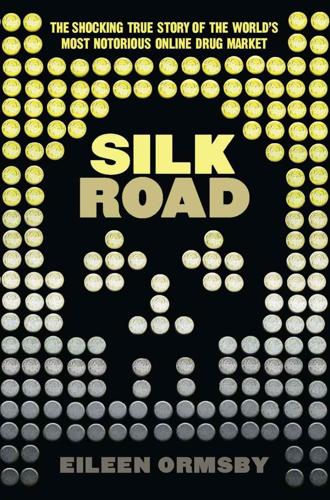
Silk Road
by
Eileen Ormsby
Published 1 Nov 2014
What we’ve found in practice is that if there is an opportunity to cheat, steal or lie for personal short-term gain, someone, somewhere will exploit it. So, we’ve had two major challenges to face as Silk Road grows and evolves. One is making our systems tough enough and flexible enough to withstand and win a cyber-war with the most powerful organizations in the world, should they choose to start that war. This is always and ever a top priority. The other is making the market a place where people can quickly and easily buy and sell just about anything without worrying about being attacked by gun-toting men in uniforms and thrown in a cage or worry about being ripped off by their trading partner.

Connectography: Mapping the Future of Global Civilization
by
Parag Khanna
Published 18 Apr 2016
Some filtering is thus not the same as totally blocking, which as Arab dictators have learned guarantees their citizens will come onto the streets to protest. Setting the locations for the physical servers and routers is the geopolitics of the Internet, while cyber war is geopolitics in the Internet. Cyber war is a quantum type of conflict: Weapons are intangible, their power can be observed but not measured, and there are no fixed stockpiles or arsenals. There are also no laws of war for cyber war, nor is deterrence simply a matter of correlating forces. It is a perpetual war of hack attacks to damage military hardware (as the Stuxnet virus did to the Iranian nuclear program), steal corporate data (as Russian hackers have done to Western banks), or access government data and advanced technological intellectual property (as China’s PLA cyber unit 61398 has successfully done against prominent American companies).
…
NATIONAL GEOSPATIAL-INTELLIGENCE AGENCY https://nga.maps.arcgis.com/home/ The National Geospatial-Intelligence Agency provides public access to large volumes of satellite and other geo-data and imagery in support of scientific research, natural disaster recovery operations, and crisis management. NORSE ATTACK MAP http://map.norsecorp.com/ Norse, a cyber-threat analysis firm, provides real-time visualizations of global cyber war based on data collected every second from Internet and Dark Web sources, plotting origins of attackers and target attacks. OPENSTREETMAP https://www.openstreetmap.org/ OpenStreetMap is a crowdsourced mapping platform maintained by a user community that constantly updates data on transportation networks, store locations, and myriad other content generated and verified through aerial imagery, GPS devices, and other tools.
…
National Interest, Nov. 2013. Simpfendorfer, Ben. The Rise of the New East: Business Strategies for Success in a World of Increasing Complexity. Palgrave Macmillan, 2014. Singer, Peter. One World: The Ethics of Globalization. Yale University Press, 2004. Singer, P. W., and Allan Friedman. Cybersecurity and Cyberwar: What Everyone Needs to Know. Oxford University Press, 2014. Slaughter, Anne-Marie. A New World Order. Princeton University Press, 2005. Smil, Vaclav. Energy in Nature and Society: General Energetics of Complex Systems. MIT Press, 2007. ———. Making the Modern World: Materials and Dematerialization.
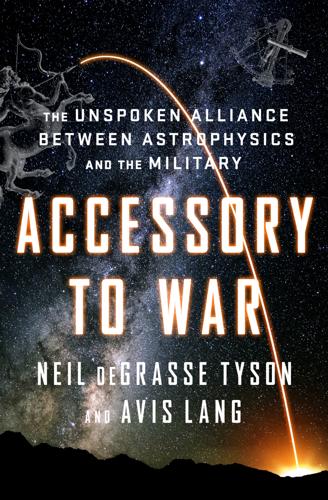
Accessory to War: The Unspoken Alliance Between Astrophysics and the Military
by
Neil Degrasse Tyson
and
Avis Lang
Published 10 Sep 2018
Disable enough satellites—by whatever means—and people suddenly can’t use their credit cards. They have to reacquaint themselves with paper roadmaps and quickly unlearn their expectations of a reliable power grid and minute-by-minute updates on the weather.2 Think of cyberwar against space assets as weaponless sabotage—though “weaponless” can be hard to define, since almost anything, from a hand to a fork to a truck to a plane, can be and has been used as a weapon. Cyberwar’s potential reach is broader than that of all but the most unthinkable weapons. “Space capabilities have proven to be significant force multipliers when integrated into military operations,” state the Joint Chiefs of Staff, who stress space situational awareness, strategic deterrence, cyber support, and weaponless cyber interventions rather than space-to-space, air-to-space, or ground-to-space physical destruction—the kind of destruction that would result in huge new batches of space debris.3 Obviously, if shards and chunks of exploded satellites threaten anything and everything in their path, they’re as likely to disrupt one’s own space assets as the enemy’s.
…
Barely had World War II ended when they embraced an even more devastating near-term scenario: the visiting of intentional nuclear disaster across the entire surface of Earth. Thus began a military shopping spree that continues to this day. By now the wish list is quite long. Space war could take two main forms: direct physical attacks or cyber sabotage. Indeed, today’s Air Force Space Command speaks of “space and cyberspace” in the same breath. Cyberwar wouldn’t require a physical weapon, only a focused disruption. The seventeen hundred–plus operational satellites that circle Earth are the most obvious potential target. Nearly half of these are American, of which one-fifth are military, supporting contemporary technologies of warfare.1 As for the remaining satellites, the daily life of nearly every person in the world, but especially in the United States, depends on more than one of them, knowingly or unknowingly, directly or indirectly.
…
Abbe, Ernst, 132, 133 Abrahamson, James A., 250, 251 accelerators, 28–29 accretion, 384 ACES (Atomic Clock Ensemble in Space), 339 ACES (Atomic Clock with Enhanced Stability), 339 achromatic lens, 130, 132 Active Denial/Silent Guardian System, 201, 470–71n Adams, Evangeline, 55 adaptive optics, 154–56, 300, 457n Adaptive Optics for Astronomical Telescopes (Hardy), 156 Advanced KH-11 satellites, 205–6, 343 Advanced LIGO, 461n Advanced Research Projects Agency (ARPA), 181, 216, 222, 270, 490–91n AEHF (Advanced Extremely High Frequency), 354 aerospace industry consolidation after end of Cold War, 11, 411n contracts with NASA, 21 military-space-industrial complex, 161 missile defense–related campaign contributions, 12, 411–12n prosperity after September 11, 2001, 11 aerospace workforce, 21, 22, 27 AFCRL Infrared Sky Survey, 221–22 Africa circumnavigation by ancient sailors, 72–73, 78, 434n early migrations of humans from, 64, 430n travels of the Portuguese, 81 agonic line, 94 Airborne Laser Laboratory, 156 Air Force Space Command in Colorado Springs, 16, 341 contracts with aerospace corporations, 21 control of GPS system, 158, 337 space systems in Gulf War, 331 space war and cyberwar, 235–36, 274, 324–25 Alaska, and harbor creation by H-bombs, 285, 499n albedo, 196–97, 207 Aldebaran, 73 Aldrin, Buzz, 353 Alexander, Edward Porter, 123, 124, 127, 447–48n Alexander the Great, 78 All Quiet on the Western Front, 387 al-Ma’arri, 434n Almagest (Ptolemy), 50 Alnilam, 67 aluminum, 194, 195, 469n, 528n Alvan Clark & Sons, 130, 450n see also Clark, Alvan Amalfi, Italy, 76 American Academy of Arts and Sciences, 112, 247 American Astronomical Society, 7, 149, 155, 378, 463n American Civil Liberties Union National Security Project, 13, 413n American empire, 34–36 American Philosophical Society, 112 American Science and Engineering (AS&E), 225–27 American Security Council, 304, 505n American Security Project, 13 American Sign Language, 446–47n America Retectio, 436n Ampère, André-Marie, 220 Anaximander, 70 ancient astronomy constellations and zodiac, 41 development of, 38–39 eclipses, 44–49 monuments and stoneworks, 41–42 records and predictions of events, 42–45 time measurement units, 39–41 see also astrology Andromeda galaxy, 234 Andropov, Yuri, 258 Anti-Ballistic Missile Treaty (1972), 12, 250, 287, 293, 502n antibiotic resistance, 14 Antikythera Mechanism, 44–45, 422–23n antiwar movements, 8, 10, 410n Apache helicopters, 332 apochromatic lens, 132 Apollo 1 disaster, 291 Apollo 8 mission, 289 Apollo 11 mission, 353, 369 Apollo–Soyuz Test Project, 357, 521n Arago, François, 142–43, 456n Archimedes, 45, 46, 47, 423n Area 51, 197 Arecibo Observatory, 181–82 Arianespace, 363 Aristarchus, 440n Aristotle, 101, 169 Arkhipov, Vasili, 497n Armageddon (movie), 255 armillary spheres, 44, 80, 101, 436n Armstrong, Neil, 353 Arte de Navegar, 80 Art of War (Sun Tzu), 238 ASATs (antisatellite weapons), 257–59, 283, 291, 294, 356, 485n Ashurnasirpal II, 33–34, 420n Assyrian empire, 33–34 asteroids deflection of, 253–55, 256, 484n formation, 384, 385 impacts on Earth, 234, 253, 483n mining of, 385–86 near-Earth objects (NEOs), 253–54, 255, 256 potentially hazardous asteroids (PHAs), 190, 253 radar tracking of, 184, 190 rare earth metals in, 385 astrolabes, 38, 74, 80, 82, 84, 339 astrology about, 49–51, 424–25nn almanacs and periodicals, 57, 426n Henry the Navigator’s horoscope, 79 in India, 54 “lunar cycle effect,” 56 in Nazi Germany, 57–63, 427–28nn, 429nn opposition to, 51–52, 58–59, 425n reliance on in wartime, 52, 425n, 429n stock market and, 55–56 in the United States, 53–54 Vedic astrology, 54 see also ancient astronomy astronomical photography, early history, 143–44, 456n astronomical unit (AU), 440n Astrophysical Journal, 149, 217 astrophysicists antiwar sentiments, 9 collaboration and recent discoveries, 398–400, 404 employment opportunities, 22–23 as lateral thinkers, 150 telescope design and, 101–2, 133 tools and technology used, 149 astrophysics alliance forged with military, 36–37, 150–52, 386 analysis of light and images, 149–50, 151–52, 176, 196, 198–99 and Cold-War science priorities, 29 electromagnetic spectrum and, 176 photography and, 140, 141–44 spectroscopy and, 140, 144–48 spending for vs. military spending, 403–4, 533nn Atacama Desert, 200 Atacama Large Millimeter/submillimeter Array (ALMA), 183, 200, 201, 231 atmosphere transmission of electromagnetic radiation, 199–200, 214, 225 twinkling of stars and, 152–54, 300 water hole, 200–201, 470n atomic bombs, 151, 190, 263, 303, 457n, 474n atomic clocks, 333, 339 Atomic Energy Commission (AEC), 216, 285, 402, 497n, 532n Atoms for Peace, 287, 498–99n AT&T (American Telephone and Telegraph Company), 128, 177–78, 501n Augustine (saint), 51 Australia early presence of modern humans, 64, 430n exploration and colonization, 92 James Cook and, 92 as penal colony, 92 space program, 32 Square Kilometre Array, 183 Azores, 80, 94, 439n Babel-17 (Delaney), 260 Babylonians, 40, 41, 42 Bacon, Francis, 52 Bacon, Roger, 106–7, 162 BAE Systems, 412n Bahcall, John, 7 balance of terror, 285, 497–98n Ball Aerospace and Technologies, 16 BAMBI (Ballistic Missile Boost Intercepts), 271, 278 Barnard’s Star, 344 Barr and Stroud Ltd, 136, 137 Battle of Copenhagen, 115–16 Bausch and Lomb Optical Company, 139, 140, 450n Bay of Pigs, Cuba, 284 Bechtel, 11 Behaim, Martin, 87, 436n Beidou system, 337 Bell, Alexander Graham, 128 Bell Labs (Bell Telephone Laboratories), 178–79, 288, 501n Berkowski, Johann Julius Friedrich, 144 Berlin blockade, 266, 303 Berlin Wall, fall of, 11, 29, 358, 374 B-52 bombers, 332 Big Dipper, 67, 432n Bikini Atoll nuclear bomb tests, 402–3 Bilmes, Linda, 416n bin Laden, Osama, 12, 206, 349 binoculars, 109, 125, 128, 132, 139, 451n Biot, Jean-Baptiste, 456n birds, as clue for wayfinders, 65, 430–31n Blackwater USA, 11, 25 Blanton, Thomas, 497n blending camouflage, 172 blinding, 174–75 Blue Origin, 300 Boeing campaign contributions, 412n in Colorado Springs, 16 prosperity after September 11, 2001, 11, 12 Russian rocket joint ventures, 363, 371 weapons manufactured by, 18, 20 Bolden, Charles, 376 Bonaparte, Napoleon, 115, 122, 130, 447n Bond, William Cranch, 144 Book of Calculation (Fibonacci), 77 Book of Useful Information on the Principles and Rules of Navigation, 67 Borghese, Scipione, 104 Bourdieu, Pierre, 92 Bourne, William, 107 Bowen, Alan, 47–48 Brahe, Tycho, 49 Brahma, 40 Brazil, 81, 310, 431n, 444n, 518n Brilliant Pebbles, 250, 271 British Mariner’s Guide (Maskelyne), 94 Broadmoor Hotel and Resort, 16, 17, 24, 26 Broder, John M., 250 bronze, 44, 69, 422n, 432n Browne, Malcolm, 334–35, 336 Brown, Louis, 185, 187, 190, 464n, 465n, 467n Brunhübner, Fritz, 62–63 B-2 stealth bombers, 198, 303, 470n Buchheim, Robert W., 248, 481–82n Buckland, Michael, 454n Bulganin, Nikolai, 277 Bulletin of the Atomic Scientists, 310–11 Bull Run, First Battle of, 124, 448n, 449n Bunsen, Robert, 147 Burbidge, Margaret and Geoffrey, 402 Burns, Dean, 306 Burrows, William E., 80, 206, 270, 357, 362, 366, 468n Bush, George H.
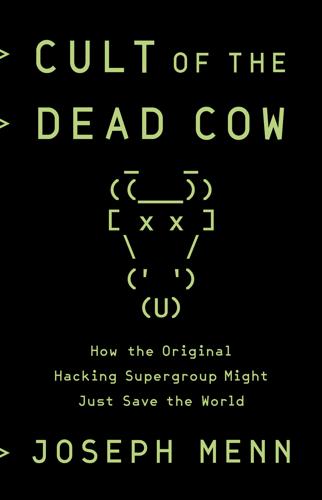
Cult of the Dead Cow: How the Original Hacking Supergroup Might Just Save the World
by
Joseph Menn
Published 3 Jun 2019
“The first mainstream articles on the zero-day business”: Andy Greenberg profiled the @stake veteran who calls himself the Grugq in “Shopping for Zero-Days: A Price List for Hackers’ Secret Software Exploits,” Forbes, March 23, 2012, www.forbes.com/sites/andygreenberg/2012/03/23/shopping-for-zero-days-an-price-list-for-hackers-secret-software-exploits/. I later wrote a deeper story and a sidebar for Reuters: “Special Report: U.S. Cyberwar Strategy Stokes Fear of Blowback,” Reuters, May 10, 2013, www.reuters.com/article/us-usa-cyberweapons-specialreport/special-report-u-s-cyberwar-strategy-stokes-fear-of-blowback-idUSBRE 9490EL20130510, and “Booming ‘Zero-Day’ Trade Has Washington Cyber Experts Worried,” Reuters, May 10, 2013, www.reuters.com/article/us-usa-cyberweapons-policy/booming-zero-day-trade-has-washington-cyber-experts-worried-idUSBRE9490EQ20130510.
…
Poring over the documents released by Edward Snowden a few years later, Deibert thought he realized why, and Rohozinski agreed: the Canadians had known about the Chinese spy network and had been piggybacking on it, collecting their own intelligence, until the Citizen Lab blew the whistle. The year after the GhostNet report, Google said that the Chinese had hacked it as well, and that it was pulling out of the mainland as a result. Now everyone realized that they had been living in an undeclared cyberwar. Google had among the best technical defenders anywhere. After Google realized the Chinese had gotten in and gone after the accounts of human rights advocates and Google’s own code, it brought in the best outside minds it could find. That included Dave Aitel and other NSA veterans, and even the NSA itself.
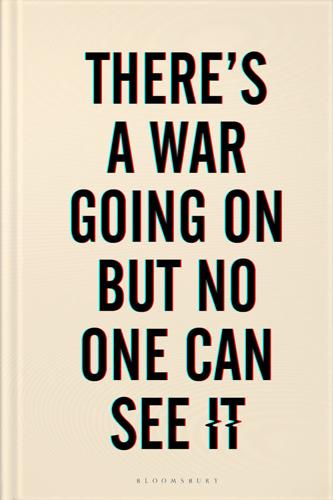
There's a War Going on but No One Can See It
by
Huib Modderkolk
Published 1 Sep 2021
The decision, they said, was made by the national security and counter-terrorism co-ordinator following high-level talks in which the AIVD had been unable to present any incriminating intelligence concerning Kaspersky. Nevertheless, the counter-terrorism unit and administration wanted to take these precautionary measures. This situation illustrates how companies can find themselves caught in the middle of an escalating cyberwar. Kaspersky has one tremendous weakness: its head office is in Moscow. That’s enough to trigger all kinds of wild theories – like one that claims the company’s CEO was trained by the KGB and therefore must work for the Russian secret police. The part about the training is true enough, but Kaspersky wasn’t established until years later.
…
At some point, seeing me chatting with one of his own, AIVD chief Rob Bertholee hurries over to interrupt. Half playfully, half seriously, he warns, ‘Don’t give away too much!’ People from the MIVD are more open and direct, but there’s also a strong element of hierarchy and group dynamics at work. They discuss the ongoing cyberwar in military jargon, talking about adversaries’ ‘offensive potential’, the ‘reconnaissance’ they’ve gathered, the operational details they’re not allowed to share, and intelligence meant for ‘the principal’ – either the prime minister or president. For them, the world is a perpetual game of Stratego.
…
Piet Hein Donner press conference on hacking of government websites YouTube, 3 September 2011. 3 The Switzerland of the Surveillance World Abdul Qadeer Khan Jaco Alberts, ‘De Nederlandse connectie met de islamitische bom’, de Volkskrant, 19 November 2011. BBC China vessel intercepted in Italy Robin Wright, ‘Ship Incident May Have Swayed Libya’, Washington Post, 1 January 2004. Iraqi communication systems attacked in 2003 John Markoff and Thom Shanker, ‘Halted ’03 Iraq Plan Illustrates [U.S] Fear of Cyberwar Risk’, The New York Times, 1 August 2009. Natanz and its centrifuges Kim Zetter, Counting down to Zero Day: Stuxnet and the Launch of the World’s First Digital Weapon, Broadway Books, 2015. Casualties resulting from Natanz operation Kim Zetter and Huib Modderkolk, ‘Revealed: How a secret Dutch mole aided the U.S.
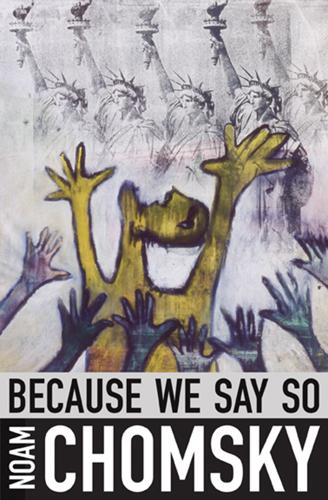
Because We Say So
by
Noam Chomsky
Allison joins many others in regarding Iran’s nuclear programs as the most severe current crisis, “an even more complex challenge for American policymakers than the Cuban missile crisis” because of the threat of Israeli bombing. The war against Iran is already well under way, including assassination of scientists and economic pressures that have reached the level of “undeclared war,” in the judgment of the Iran specialist Gary Sick. Great pride is taken in the sophisticated cyberwar directed against Iran. The Pentagon regards cyberwar as “an act of war” that authorizes the target “to respond using traditional military force,” the WALL STREET JOURNAL reports. With the usual exception: not when the United States or an ally is the perpetrator. The Iran threat has recently been outlined by Gen. Giora Eiland, one of Israel’s top military planners, described as “one of the most ingenious and prolific thinkers the [Israeli military] has ever produced.”

Digital Bank: Strategies for Launching or Becoming a Digital Bank
by
Chris Skinner
Published 27 Aug 2013
This is why Josef Ackermann, former CEO of Deutsche Bank stated in 2012 that: “we have a social responsibility, because if this inequality increases in income distribution or wealth distribution we may have a social time bomb ticking and no-one wants to have that.” Meanwhile, the Occupy, Anonymous and the 99% movements could be powerful if they had a leader, as we are living through a moment of revolution in all aspects of society and government. Cyberwars: a far bigger threat than hacktivists Whilst consumers are creating mobile social pressures and hacktivism, governments are creating global cyberattacks. This cyberwarfare is already rife, with a host of malware targeting Middle Eastern nations. McAfee Labs researchers recently debated the leading threats for the coming year and show that it’s only going to get worse: “Hacking as a Service”: Anonymous sellers and buyers in underground forums exchange malware kits and development services for money The decline of online hacktivists Anonymous, to be replaced by more politically committed or extremist groups Nation states and armies will be more frequent sources and victims of cyberthreats Large-scale attacks like Stuxnet, an attack on Iranian nuclear plants, will increasingly attempt to destroy infrastructure, rather than make money Mobile worms on victims’ machines that buy malicious apps and steal via tap-and-pay NFC Malware that blocks security updates to mobile phones Mobile phone ransomware “kits” that allow criminals without programming skills to extort payments Covert and persistent attacks deep within and beneath Windows Rapid development of ways to attack Windows 8 and HTML5 A further narrowing of Zeus-like targeted attacks using the Citadel Trojan, making it very difficult for security products to counter Malware that renews a connection even after a botnet has been taken down, allowing infections to grow again The “snowshoe” spamming of legitimate products from many IP addresses, spreading out the sources and keeping the unwelcome messages flowing SMS spam from infected phones.
…
Can any company claim to be bulletproof? No, but banks and payment service providers are the ones who need to be bulletproof, especially when it is clear that the financial system manages the economic viability of nations and is therefore going to be one of the first lines of attack in national cyberwars. That was made clear to me when NYSE’s CIO presented at a conference I chaired a couple of years ago, and said that they had been targeted in a cyberattack at the same time as the US Department of Defence. The US Department of Defence had a security breach, NYSE did not. This is why the banks can learn much from the cyberwarfare of governments.
…
In the latest developments in the Middle East for example, the latest systems attack bank accounts, rather than nuclear plants. This is because the banking system is the heart of the economic health of a nation, with Gauss malware targeting multiple users in select countries to steal large amounts of data, with a specific focus on banking and financial information. When governments engage in cyberwars that focus upon the bank system first, there’s going to be a meltdown at some point, and potentially these developments are far more threatening than those of the paltry hacktivists. For example, just as pure speculation, here is a short fiction about a cyberattack on Wall Street: Shaiming Zheng had finally finished his masterpiece.
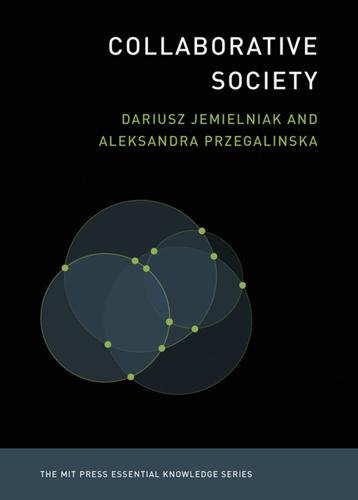
Collaborative Society
by
Dariusz Jemielniak
and
Aleksandra Przegalinska
Published 18 Feb 2020
As we write this book, controversy regarding the 2016 US presidential election still remains unresolved, despite strong links to intervention by Russian hackers. The influence and spread of fake news in this context exemplifies an activity that is hard to classify but can be placed within the range of cyberactivism and cyberterrorism, or even cyberwar. The impact of social media’s vulnerability and compliance in these attacks has been challenged in the US Senate.51 We return to this issue in the last chapter. To make the matter even more complex, hacking has become a tool to serve not only activists but also governments that want to suppress protests.
…
Thompson et al., “Inside the Two Years That Shook Facebook—and the World,” Wired February 12, 2018. 52. ”More Snowden Leaks Reveal Hacking by NSA and GCHQ against Communications Firm.” Network Security (2015): 1–2. 53. https://perma.cc/HXA4-XVKU 54. T. Jordan and P. Taylor, Hacktivism and Cyberwars (Routledge, 2004). 55. P. S. Ryan, “War, Peace, or Stalemate: Wargames, Wardialing, Wardriving, and the Emerging Market for Hacker Ethics,” Virginia Journal of Law and Technology 9 (2004): 41. 56. P. Himanen, The Hacker Ethic (Random House, 2010). Chapter 6 1. D. Innerarity, The Democracy of Knowledge (Bloomsbury Publishing USA, 2013). 2.

Who Rules the World?
by
Noam Chomsky
Bush even invited Iraqi nuclear engineers to the United States for advanced training in weapons production, an extremely serious threat to Iran.31 Sanctions against Iran were intensified, including against foreign firms dealing with it, and actions were initiated to bar it from the international financial system.32 In recent years the hostility has extended to sabotage, the murder of nuclear scientists (presumably by Israel), and cyberwar, openly proclaimed with pride.33 The Pentagon regards cyberwar as an act of war, justifying a military response, as does NATO, which affirmed in September 2014 that cyberattacks may trigger the collective defense obligations of the NATO powers—when we are the target, that is, not the perpetrators.34 “THE PRIME ROGUE STATE” It is only fair to add that there have been breaks in this pattern.
…
The most interesting was that of a respected left-liberal political commentator, Matthew Yglesias, who explained that “one of the main functions of the international institutional order is precisely to legitimate the use of deadly military force by western powers,” so it is “amazingly naïve” to suggest that the United States should obey international law or other conditions that we righteously demand of the weak.31 Only tactical objections, it seems, can be raised to aggression, assassination, cyberwar, or other actions that the Holy State undertakes in the service of mankind. If the traditional victims see matters somewhat differently, that merely reveals their moral and intellectual backwardness. And the occasional Western critic who fails to comprehend these fundamental truths can be dismissed as “silly,” Yglesias explains—incidentally, he is referring specifically to me, and I cheerfully confess my guilt.

How Everything Became War and the Military Became Everything: Tales From the Pentagon
by
Rosa Brooks
Published 8 Aug 2016
—Peter Bergen, author of United States of Jihad “The question of where the lines are between war and peace, between the military and the civilian world in 21st-century conflicts that never seem to end, is among the most vexing and important in American politics today. Brooks deftly tackles these issues, weaving together rich analysis with personal anecdotes and stories that pull you in. It’s a book that won’t just inform you, but will make you think.” —P. W. Singer, author of Wired for War, Cybersecurity and Cyberwar, and Ghost Fleet Thank you for downloading this Simon & Schuster eBook. * * * Join our mailing list and get updates on new releases, deals, bonus content and other great books from Simon & Schuster. CLICK HERE TO SIGN UP or visit us online to sign up at eBookNews.SimonandSchuster.com Contents PART I: Tremors PART II: The New American Way of War ONE Pirates!
…
Technically, the Department of Homeland Security is the lead agency for defending U.S. cyber infrastructure, but budget figures tell a different story: the 2016 budget request for DoD’s cybersecurity activities—not including those carried out by the NSA, which has a separate, classified budget—was over $5 billion, while Homeland Security’s 2016 cyber budget request was just $1.4 billion.1 The emerging era of cyberwar also creates new legal puzzles. If cyberattacks can be a form of “warfare,” what law should apply? International law on this question remains unsettled, but the government has already staked out a position: cyber operations are subject to the law of armed conflict, and any cyberattacks that cause injury, death, or “significant destruction” could be considered “armed attacks” for legal purposes, triggering, among other things, a legal right to retaliate using conventional armed force.
…
They’ll finally be able to pass the Turing Test. For all intents and purposes, they will have become humans—and it’s humans we’ve had reason to fear, all along. Nonlethal Weapons If we fought a war with weapons that did no permanent physical harm to our enemies, would they still be weapons, and would it still be a war? The advent of cyberwar forces us to ask this question, but similar questions also arise when we consider advances in “nonlethal weapons.” The military is already experimenting with a number of technologies that can incapacitate or control enemies without causing injury or death. For instance, there’s the “active denial technology,” which can shoot a focused beam of radio frequency millimeter waves at a frequency of 95 gigahertz toward a specific area.
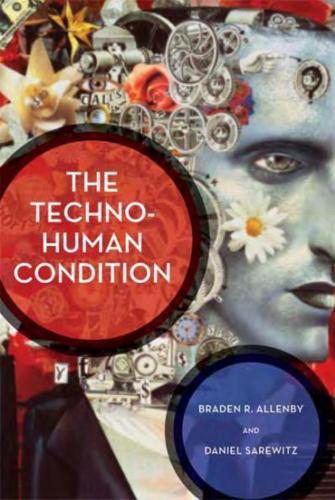
The Techno-Human Condition
by
Braden R. Allenby
and
Daniel R. Sarewitz
Published 15 Feb 2011
(The mechanisms for introducing such chaos would not be the relatively clumsy denial-of-service attacks that we saw in Russia's assaults on Estonia and Georgia, but rather the "back doors" planted in Internet systems, which would be activated in such a way as to cause appropriate damage in case 140 Chapter 7 of attack-"appropriate" being the level of damage required to achieve one's strategic goals under the conditions as they unfold, which need not involve full implementation of "cyberwar" capability.) Details, of course, are classified, but it is reasonable to expect that, even now, a new "balance of terror" based on "mutual assured destruction" is evolving on the cyber battlefield. And in the realm of asymmetric warfare, cyberspace is also the obvious place for less technologically advanced nations and for non-governmental organizations to go if they wish to inflict relatively undirected damage on a sophisticated opponent.
…
Microparasites and macroparasites. Cultural Anthropology 2 (1): 155-171. Callaway, E. 2009. Brain scanners can tell you what you're thinking about. New Scientist 2732. Available at www.newscientist.com. Clark, A. 2003. Natural-Born Cyborgs. Oxford University Press. 212 Bibliography Clark, R. A., and R. K. Knake. 2010. Cyberwar: The Next Threat to National Security and What To Do About It. HarperCollins. Conquest, R. 2000. Reflections on a Ravaged Century. Norton. Cronon, W. 1991. Nature's Metropolis: Chicago and the Great West. Norton. Crystal, D. 1997. English as a Global Language. Cambridge University Press. de Gray, A.
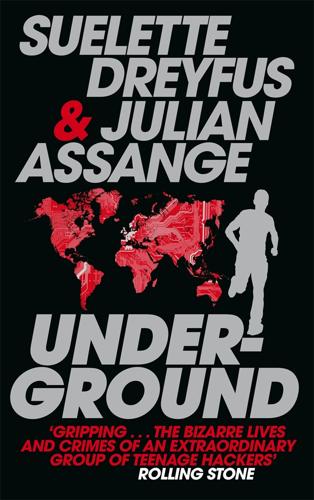
Underground
by
Suelette Dreyfus
Published 1 Jan 2011
CONCLUSION FEBRUARY 2011 The early hacking world portrayed in this book seems innocent by today’s standards of organised crime and military vigilante hacking groups. It’s good to be reminded that the roots of this tree were a youthful curiosity that was more about adventure than serious crime. Yet now we live in a world of electronic strip searches at airports and government-sponsored cyber wars with publishers and nations alike. The early computer underground was where it all began. Ironically, the core values of the underground may also be where it could end. Ken Day, the former head of Australian Federal Police Computer Crimes Unit, ran the first big anti-hacking investigations in Australia.
…
His observation applies to all free societies that lay claim to the moral high ground of democracy and greatness, including our own. The peacetime internet occurred when this book was written in the 1990s before the start of the era of war – the Iraq War, the Afghan war, the War on Terror, the undeclared cyber wars on China, Iran and the Russian mafia. Now we look back to that time as a sort of Paradise Lost – the peacetime internet of incredible growth and innovation. The ideas we are now debating – such as freedom of information – sprang to life from this fertile ground. There was free trade, free information, and unprecedented freedom of expression.
…
These tendencies, which so clearly play out as a theme in the early computer underground, also happen to be very Australian. Perhaps that is why the early underground thrived so well in the sunburnt country. We should have known how the world was going to unfold in the years since the events described in this book took place. Cyberwar is now a reality, and the US military doesn’t need a congressional stamp of approval to launch one. In addition to the Army, Navy, Marines, Coast Guard and Air Forces, there is now also the United States Cyber Command. And it too has its own offensive and defensive units. It has its own emblem, complete with an American eagle and a globe with a grid overlay.

The Levelling: What’s Next After Globalization
by
Michael O’sullivan
Published 28 May 2019
Hard and Soft Power Still, Russia is a good example of how a country leverages hard power (measured in terms of fighting readiness and tactical ability, as set out in military analyses by Jane’s Information Group and think-tank assessments).12 It and a select number of other countries have reserves of hard power, such as nuclear, space, and cyberwar capabilities.13 From a diplomatic point of view, Russia is also an example of the way certain countries can look at the same set of facts and, disturbingly from the point of view of international peace, reach different conclusions. The Western narrative on Russian diplomacy is that it is a reckless and aggressive provocateur.
…
The easiest way to do this is to support the creation of several regional champion banks through a wave of consolidation and bank closures. The harmonization of regulation in areas like the recognition of bad debts and nonperforming loans would be a helpful start here. In the case of the Fed and the ECB, tensions between poles may mean that they are drawn into situations of geopolitical tension. In the same way that cyberwars are now being fought silently and invisibly, the two large central banks may be called upon as sources of nondeadly but nonetheless consequential power. For instance, might a cyber- or even military incursion by Russia on Estonia be met with the selling of, say, the ruble, or the selling of Russian government and company bonds by the ECB?
…
The former mayor of New York, Michael Bloomberg, has, together with environmentalist Carl Pope, underlined these points in a compelling book (Climate of Hope) on the role of cities in the battle for climate change.20 A related proposal might be to have common campaigns across cities threatened by the same environmental dangers, such as rising sea levels provoked by global warming. Cyberlaws Better climate and environmental policy coordination is an important global, public good of the future. Another is the policing of the internet, specifically in the areas of cyberwar and cybercrime. In the same way that cities can play a distinct policy role in climate policy, the large technology companies—Facebook, Google, and Tencent, for example—are vital parts of the policy process in the domain of the internet. Their centrality to the concept of the levelling, as strategic assets for large states and regions, will condition the way governments and regulators address them.
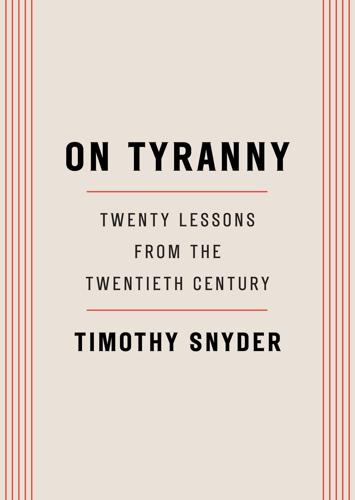
On Tyranny: Twenty Lessons From the Twentieth Century
by
Timothy Snyder
Published 14 Sep 2017
To them, much about the president’s campaign was familiar, and the final outcome was no surprise. Ukrainian and Russian journalists who sniffed the air in the Midwest said more realistic things than American pollsters who had built careers on understanding the politics of their own country. To Ukrainians, Americans seemed comically slow to react to the obvious threats of cyberwar and fake news. When Russian propaganda made Ukraine a target in 2013, young Ukrainian journalists and others reacted immediately, decisively, and sometimes humorously with campaigns to expose disinformation. Russia deployed many of the same techniques against Ukraine that it later used against the United States—while invading Ukraine.

Ghost Fleet: A Novel of the Next World War
by
P. W. Singer
and
August Cole
Published 28 Jun 2015
Defense Intelligence Agency, accessed August 19, 2014, http://www.dia.mil/About.aspx. 38 A compact HK G48: “G36C — Das ultrakurze Sturmgewehr,” Heckler and Koch, accessed August 17, 2014, http://www.heckler-koch.com/de/produkte/militaer/sturmgewehre/g36/g36c/produktbeschreibung.html; fictional version. 38 using covert radio signals: Geoffrey Ingersoll, “The NSA Has Secretly Developed the ‘Bigfoot’ of Computer Hacks,” BusinessInsider.com, January 15, 2014, accessed August 19, 2014, http://www.businessinsider.com/nsa-has-the-bigfoot-of-computer-hacks-2014-1. 39 SIPRNet classified network: Sharon Weinberger, “What Is SIPRNet?,” Popular Mechanics, December 1, 2010, accessed August 19, 2014, http://www.popularmechanics.com/technology/how-to/computer-security/what-is-siprnet-and-wikileaks-4085507. 39 air-gapped: Peter W. Singer and Allan Friedman, Cybersecurity and Cyberwar: What Everyone Needs to Know (New York: Oxford University Press, 2014). 39 three faintly glowing metallic smart-rings: Darren Quick, “Ring Puts the Finger on Gesture Control,” Gizmag, March 4, 2014, accessed August 19, 2014, http://www.gizmag.com/logbar-smart-ring-bluetooth/31080/. 39 nicknamed the Eastern MIT: “Shanghai Jiao Tong University,” Times Higher Education World University Rankings 2012–2013, accessed August 19, 2014, http://www.timeshighereducation.co.uk/world-university-rankings/2012-13/world-ranking/institution/shanghai-jiao-tong-university. 39 Hainan Island incident: “Interview with Lt.
…
Singer and Allan Friedman, Cybersecurity and Cyberwar: What Everyone Needs to Know (New York: Oxford University Press, 2014). 39 three faintly glowing metallic smart-rings: Darren Quick, “Ring Puts the Finger on Gesture Control,” Gizmag, March 4, 2014, accessed August 19, 2014, http://www.gizmag.com/logbar-smart-ring-bluetooth/31080/. 39 nicknamed the Eastern MIT: “Shanghai Jiao Tong University,” Times Higher Education World University Rankings 2012–2013, accessed August 19, 2014, http://www.timeshighereducation.co.uk/world-university-rankings/2012-13/world-ranking/institution/shanghai-jiao-tong-university. 39 Hainan Island incident: “Interview with Lt. Shane Osborn, U.S. Navy,” Frontline, accessed August 19, 2014, http://www.pbs.org/wgbh/pages/frontline/shows/china/interviews/osborn.html. 40 hacker militias became crucial hubs: Singer and Friedman, Cybersecurity and Cyberwar. 40 China’s J-20 fighter: Feng Cao, “China Unveils More Capable Stealth Fighter Prototype,” U.S. Naval Institute, March 19, 2014, accessed August 20, 2014, http://news.usni.org/2014/03/19/china-unveils-capable-stealth-fighter-prototype. 41 her circulatory system: David Axe, “This Scientist Wants Tomorrow’s Troops to Be Mutant-Powered,” Danger Room (blog), Wired, December 26, 2012, http://www.wired.com/2012/12/andrew-herr/all/. 42 randomize signals: Ryan W.
…
id=5708. 289 companies’ own generators as weapons: Michael Swearingen et al., “What You Need to Know (and Don’t) About the AURORA Vulnerability,” Power, September 1, 2013, accessed August 24, 2014, http://www.powermag.com/what-you-need-to-know-and-dont-about-the-aurora-vulnerability/?printmode=1. 289 arching eyebrows, a wide mustache: Monica Nickelsburg, “A Brief History of the Guy Fawkes Mask,” Week, July 3, 2013, http://theweek.com/article/index/245685/a-brief-history-of-the-guy-fawkes-mask. 291 “We are Anonymous”: Singer and Friedman, Cybersecurity and Cyberwar, 80–84. 294 General Atomics Avenger stealth drone: “Predator C Avenger UAS,” General Atomics Aeronautical Systems, accessed August 24, 2014, http://www.ga-asi.com/products/aircraft/predator_c.php. 296 Pupukea-Paumalu Forest Reserve: “Kaunala Loop,” Trails.com, accessed August 24, 2014, http://www.trails.com/tcatalog_trail.aspx?

Destined for War: America, China, and Thucydides's Trap
by
Graham Allison
Published 29 May 2017
Jeremy Page, “For Xi, a ‘China Dream’ of Military Power,” Wall Street Journal, March 13, 2013, http://www.wsj.com/articles/SB10001424127887324128504578348774040546346. [back] 74. Iraq’s command-and-control systems became so compromised that Saddam Hussein was ultimately forced to use couriers riding motorbikes to deliver his orders to the frontlines. Fred Kaplan, Dark Territory: The Secret History of Cyber War (New York: Simon & Schuster, 2016), 22–23. [back] 75. Components of Pillsbury’s research for the Defense Department’s Office of Net Assessment were published in Michael Pillsbury, China Debates the Future Security Environment (Washington, DC: National Defense University Press, 2000). See also Chinese Views of Future Warfare, ed.
…
The president and his advisers begin to think in apocalyptic terms, some recalling former Federal Reserve chairman Ben Bernanke’s warning in 2008 that unless decisive action is taken immediately, “we may not have an economy on Monday.”37 To prevent China’s cyberwarriors from doing any more damage, the president decides to launch a cyberattack on the source. But despite US Cyber Command’s best efforts, the attack is only partially effective, as more financial institutions are hacked. The president’s military advisers recommend air strikes to destroy all known locations of China’s cyberwar units. Hoping to avoid a shooting war with Beijing, the president reaches deep into the Pentagon’s black bag of secret capabilities. He orders the military to use a heretofore undisclosed drone to attack the Shanghai headquarters of PLA Unit 61398—China’s most sophisticated cyberwarriors. Beyond stealthy, the drone uses “adaptive camouflage” that its designers liken to Harry Potter’s invisibility cloak, allowing it to blend in to its surroundings.38 By using this option, the US seeks to create “plausible deniability.”

Top Secret America: The Rise of the New American Security State
by
Dana Priest
and
William M. Arkin
Published 5 Sep 2011
Looking at only government organizations working at the top secret level on counterterrorism and intelligence, Arkin counted twenty-one new organizations created in just the last three months of 2001, among them the Office of Homeland Security and the FBI’s Foreign Terrorist Tracking Task Force. In 2002, thirty-four more organizations were created. Some tracked weapons of mass destruction, others joined the cyberwar and collected threat tips. Still others coordinated counterterrorism among different agencies, attempting to tame the growing information load. Those were followed the next year by thirty-nine new organizations, from the formidable Department of Homeland Security to Deep Red, a small naval intelligence cell working on the most difficult terrorism problems.
…
Even in the case of the two hottest threats to domestic security, cyberattacks and weapons of mass destruction, NorthCom was not in charge. National protection of the U.S. electronic lifeline is the responsibility of DHS and the new four-star military Cyber Command at Fort Meade, Maryland, activated in 2009. It—not NorthCom—controls all military electronic defenses and would fight any cyberwar affecting U.S. assets. Inside the United States, the FBI, not NorthCom, is responsible for cybersecurity. In 2005, the Strategic Command in Omaha, and not NorthCom, was given the mission of countering the global WMD threat, with the FBI taking the lead inside the United States. Were military Special Operations Forces called upon to deploy for super-secret operations to prevent a WMD attack at home, they would ultimately fall under Special Operations Command in Tampa or the FBI, not NorthCom.

Program Or Be Programmed: Ten Commands for a Digital Age
by
Douglas Rushkoff
Published 1 Nov 2010
I encourage you to explore them, come up with your own strategies, and then share them with others—including me. If living in the digital age teaches us anything, it is that we are all in this together. Perhaps more so than ever. * * * 9. The Bureau of Labor Statistics (http://www.bls.gov/) updates these figures yearly. 10. See Richard Clarke, Cyberwar: The Next Threat to National Security (New York: HarperCollins, 2010). ESSENTIAL READING Innis, Harold. The Bias of Communication. Toronto: University of Toronto Press, 2008 (first published in 1951). Kelly, Kevin. What Technology Wants. New York: Viking, 2010. Lanier, Jaron. You Are Not a Gadget.

The Road to Ruin: The Global Elites' Secret Plan for the Next Financial Crisis
by
James Rickards
Published 15 Nov 2016
This new money creation binge will test the outer limits of confidence in central bank money. In addition to this list of catalysts from gold, debt, deflation, and default, there are exogenous threats that emerge in geopolitical space and spill over quickly into financial panics. These threats include conventional wars, cyberwars, assassinations, prominent suicides, power grid outages, and terror attacks. Finally there are natural disasters such as earthquakes, volcanic eruptions, tsunamis, category five hurricanes, and deadly epidemics. Skeptics say that wars, earthquakes, disease, and the rest have always been with us.
…
Free Trade Doesn’t Work: What Should Replace It and Why. Sheffield, MA: Coalition for a Prosperous America, 2011. Freeland, Chrystia. Plutocrats: The Rise of the New Global Super-Rich and the Fall of Everyone Else. New York: Penguin Press, 2012. Friedman, Allan, and P. W. Singer. Cybersecurity and Cyberwar: What Everyone Needs to Know. New York: Oxford University Press, 2014. Friedman, Milton, and Anna Jacobson Schwartz. A Monetary History of the United States, 1867–1960. Princeton, NJ: Princeton University Press, 1993. Friedman, Thomas L. The World Is Flat: A Brief History of the Twenty-first Century.

You've Been Played: How Corporations, Governments, and Schools Use Games to Control Us All
by
Adrian Hon
Published 14 Sep 2022
“DARWARS,” Wikipedia, updated August 1, 2020, https://en.wikipedia.org/wiki/DARWARS. 61. John C. Tang et al., “Reflecting on the DARPA Red Balloon Challenge,” Communications of the ACM 54, no. 4 (April 2011): 78–85, https://doi.org/10.1145/1924421.1924441. 62. Noah Shachtman, “This Pentagon Project Makes Cyberwar as Easy as Angry Birds,” Wired, May 28, 2013, www.wired.com/2013/05/pentagon-cyberwar-angry-birds. 63. Zachary Fryer-Biggs, “Twilight of the Human Hacker,” Center for Public Integrity, September 13, 2020, https://publicintegrity.org/national-security/future-of-warfare/scary-fast/twilight-of-the-human-hacker-cyberwarfare. 64. “Gamifying the Search for Strategic Surprise,” Defense Advanced Research Projects Agency, November 30, 2016, www.darpa.mil/news-events/2016-11-30. 65.

Boom: Bubbles and the End of Stagnation
by
Byrne Hobart
and
Tobias Huber
Published 29 Oct 2024
John Rennie, “The Immortal Ambitions of Ray Kurzweil: A Review of Transcendent Man,” Scientific American, February 15, 2011, https://www.scientificamerican.com/article/the-immortal-ambitions-of-ray-kurzweil/. 387 Vernor Vinge, “The Coming Technological Singularity: How to Survive in the Post-Human Era,” VISION-21 Symposium, March 30–31, 1993, https://edoras.sdsu.edu/~vinge/misc/singularity.html; Kurzweil, The Age of Spiritual Machines; Kurzweil, The Singularity Is Near. 388 Echoing John’s apocalyptic vision in Revelation 21:4 of a New Jerusalem descending from Heaven in which “there will be no more death or sorrow or crying or pain,” the singularity, according to its believers, will “wipe away all tears from their eyes; and there shall be no more death.” New Jerusalem will materialize in cyberspace, with humans resurrected in new, machinic form. 389 Michael Benedikt, Cyberspace: First Steps (Cambridge, MA: MIT Press, 1992), 14. 390 Paul Virilio, “Cyberwar, God and Television,” interview by Louise Wilson, CTheory 21 (1994), https://journals.uvic.ca/index.php/ctheory/article/view/14355/5131. 391 The eminent philosopher of media and self-described “apocalypticist” Marshall McLuhan condemns electronic media as the apotheosis of the Antichrist because it produces a “demonic simulacrum” of the mystical body of Christ.
…
United Nations Department of Economic and Social Affairs. World Population Ageing 2019. New York: United Nations, 2020. https://www.un.org/development/desa/pd/news/world-population-ageing-2019. Vijg, Jan. The American Technological Challenge: Stagnation and Decline in the 21st Century. New York: Algora Publishing, 2011. Virilio, Paul. “Cyberwar, God and Television,” interview by Louise Wilson, CTheory 21 (1994). https://journals.uvic.ca/index.php/ctheory/article/view/14355/5131. Virilio, Paul. The Lost Dimension. New York: Semiotext(e), 1991. Virilio, Paul. Speed and Politics. Cambridge, MA: MIT Press, 2006. Vollrath, Dietrich.

Future Crimes: Everything Is Connected, Everyone Is Vulnerable and What We Can Do About It
by
Marc Goodman
Published 24 Feb 2015
The incident is widely believed to have been carried out with the direct support of the Russian government via nationalist proxy hackers after Estonia decided to move a Soviet-era grave marker from its long-standing position in Tallinn’s city center to the outskirts of town—a move that deeply offended Moscow. Many security experts called the all-out digital assault against Estonia the “world’s first cyber war” because of its size and scale. Given that Iran had just bested that attack, one security researcher noted the Islamic Republic’s technical bombardments have graduated from being the equivalent of “a few yapping Chihuahuas into a pack of fire-breathing Godzillas.” Of course, there have also been widespread allegations of hacking by the United States against the rest of the world, based largely on the numerous classified documents stolen and unilaterally released by the former National Security Agency (NSA) contractor Edward Snowden beginning in June 2013.
…
Penetrated by Spies,” Wall Street Journal, April 8, 2009. 13 In the video: Jack Cloherty, “Virtual Terrorism: Al Qaeda Video Calls for ‘Electronic Jihad,’ ” World News, May 22, 2012. 14 Earlier FBI investigations: Barton Gellman, “Cyber Attacks by Al Qaeda Feared,” Washington Post, June 27, 2002. 15 At the Chaos Communication Congress: Darlene Storm, “Hackers Exploit SCADA Holes to Take Full Control of Critical Infrastructure,” Computerworld, Jan. 15, 2014; Vortrag: SCADA StrangeLove 2, http://events.ccc.de/. 16 One well-known hacker database: Shodan HQ, home page, accessed Feb. 9, 2014, http://www.shodanhq.com. 17 Several such incidents: “Cyber War: Sabotaging the System,” 60 Minutes, June 6, 2011. For the criminal angle, see David Shamah, “Hack Attacks on Infrastructure on the Rise, Experts Say,” Times of Israel, Jan. 30, 2014. 18 President Obama when he noted: Barack Obama, “Remarks by the President on Securing Our Nation’s Cyber Infrastructure,” The White House Office of the Press Secretary, May 29, 2009. 19 Each plays its role: “War in the Fifth Domain,” Economist, July 5, 2010. 20 Let’s not forget two hackers: Phil Lapsley, “The Definitive Story of Steve Wozniak, Steve Jobs, and Phone Phreaking,” Atlantic, Feb. 20, 2013. 21 As time passed, other notable hackers: Kevin D.
…
Massive Anonymous ‘Million Mask March’ as It Happened,” RT, Dec. 24, 2013; “Anonymous (Group),” Wikiquote. 35 When MasterCard, Visa: Lauren Turner, “Anonymous Hackers Jailed for DDoS Attacks on Visa, MasterCard, and PayPal,” Independent, Jan. 24, 2013. 36 Anonymous is strongly against: Karol Snapbacks, “Anonymous Explaining Why They Hacked PSN/Sony,” YouTube, April 22, 2011; Quinn Norton, “Anonymous Goes After World Governments in Wake of Anti-SOPA Protests,” Wired, Jan. 25, 2012; Lisa Vaas, “Anonymous Bullies Sony and Nintendo over SOPA Support,” Naked Security, Jan. 3, 2012. 37 Anonymous views itself: Quinn Norton, “How Anonymous Picks Targets, Launches Attacks, and Takes Powerful Organizations Down,” Wired, July 3, 2012. 38 Even some of the group’s most ardent critics: “Hackers Take Down Child Pornography Sites,” BBC, Oct. 24, 2011. 39 In recognition of their growing power: Barton Gellman, “The World’s 100 Most Influential People: 2012,” Time, April 18, 2012. 40 Their burgeoning influence and capabilities: “Snowden Leaks: GCHQ ‘Attacked Anonymous’ Hackers,” BBC, Feb. 5, 2014. 41 Meanwhile, terrorist organizations too: For detailed information on terrorist and jihadist use of technology, see the United Nations Counterterrorism Implementation Task Force report Countering the Use of the Internet for Terrorist Purposes, May 2011. 42 “do the things you”: Paul Tassi, “ISIS Uses ‘GTA 5’ in New Teen Recruitment Video,” Forbes, Sept. 20, 2014. 43 Internet reconnaissance and research: Thomas Harding, “Terrorists ‘Use Google Maps to Hit UK Troops,’ ” Telegraph Online, Jan. 13, 2007; Caroline McCarthy, “Report: JFK Terror Plotters Used Google Earth,” CNET, June 4, 2007. 44 For instance, “Ramzi Yousef”: Jack Kelley, “Terror Groups Hide Behind Web Encryption,” USA Today, Feb. 5, 2001. 45 Widely available online are documents: Gabriel Weimann, How Modern Terrorism Uses the Internet, United States Institute of Peace, Special Report 116, March 2004. 46 In a striking example of how dangerous: “Search of Tsarnaev’s Phones, Computers Finds No Indication of Accomplice, Source Says,” NBC News, April 23, 2013. 47 “The trio reportedly made fraudulent”: Counter-terrorism Implementation Task Force, Countering the Use of the Internet for Terrorist Purposes, May 2011, 18. 48 Even the infamous 2002 Bali bombing mastermind: Q&A with Tom Kellermann, “Internet Fraud Finances Terrorism,” Discovery News, Feb. 11, 2013. 49 Samudra was technologically savvy: Alan Sipress, “An Indonesian’s Prison Memoir Takes Holy War into Cyberspace,” Washington Post, Dec. 14, 2004. 50 Terrorists seem to be getting: Jeremy Scott-Joynt, “Warning Signs for the Funding of Terror,” BBC, July 20, 2005; Gordon Rayner and David Williams, “Revealed: How MI5 Let 7/7 Bombers Slip Through Their Fingers,” Daily Mail, May 1, 2007. 51 The Filipino hacking cell: Associated Press, “Filipino Police Arrest 4 Suspected AT&T Hackers,” CBS News, Nov. 27, 2011; Somini Sengupta, “Phone Hacking Tied to Terrorists,” New York Times, Nov. 26, 2011; Daily Mail Reporter, “Four Filipinos Arrested for Hacking AT&T Phone ‘to Fund Saudi Terror Group,’ ” Daily Mail, Nov. 28, 2011; Jennifer Rowland, “The LWOT: Phone Hacking Linked to Terrorist Activity,” Foreign Policy, Nov. 29, 2011. 52 Though the average Internet user: Marc Goodman and Parag Khanna, “The Power of Moore’s Law in a World of Geotechnology,” The National Interest, February 2013. 53 Though a $50,000 criminal: Siobhan Gorman, August Cole, and Yochi Dreazen, “Computer Spies Breach Fighter-Jet Project,” Wall Street Journal, April 21, 2009. 54 In May 2013: Ernesto Londono, “Pentagon: Chinese Government, Military Behind Cyberspying,” Washington Post, May 6, 2013. 55 Over the years, it has been reported: Ellen Nakashima, “Confidential Report Lists U.S. Weapons System Designs Compromised by Chinese Cyberspies,” Washington Post, May 27, 2013. 56 According to an FBI report: Marcus Ranum, “Cyberwar Rhetoric Is Scarier Than Threat of Foreign Attack,” U.S. News and World Report, March 29, 2010. 57 Of course it is not just the American military’s: Craig Timberg and Ellen Nakashima, “Chinese Cyberspies Have Hacked Most Washington Institutions, Experts Say,” Washington Post, Feb. 20, 2013. 58 Moreover, a 2009 report: John Markoff, “Vast Spy System Loots Computers in 103 Countries,” New York Times, March 28, 2009; Omar El Akkad, “Meet the Canadians Who Busted GhostNet,” Daily Globe and Mail, March 30, 2009; Tom Ashbrook et al., “Unmasking GhostNet,” On Point with Tom Ashbrook, WBUR, April 2, 2009, http://onpoint.wbur.org/2009/04/02/unmasking-ghostnet. 59 China has also been accused: David E.

Poking a Dead Frog: Conversations With Today's Top Comedy Writers
by
Mike Sacks
Published 23 Jun 2014
We look pretty stupid when we make the same basic joke that everyone else is making, because we have a reputation for doing the opposite. The Onion has a long history of snidely pointing out how everyone is making the same point. We’re jerks in that sense. REJECTED HEADLINE: Area Man Stocking Up on Computers for Impending Cyber-War Something about this still amuses me—I like the idea of someone physically stockpiling computers like they’re rifles or something. But it’s just too odd, and the logic doesn’t actually hold. It’s the kind of joke we talk about for a few minutes in the room until the question of “How would you actually write this?”

Homo Deus: A Brief History of Tomorrow
by
Yuval Noah Harari
Published 1 Mar 2015
Aside from their unpredictability and their susceptibility to fear, hunger and fatigue, flesh-and-blood soldiers think and move on an increasingly irrelevant timescale. From the days of Nebuchadnezzar to those of Saddam Hussein, despite myriad technological improvements, war was waged on an organic timetable. Discussions lasted for hours, battles took days, and wars dragged on for years. Cyber-wars, however, may last just a few minutes. When a lieutenant on shift at cyber-command notices something odd is going on, she picks up the phone to call her superior, who immediately alerts the White House. Alas, by the time the president reaches for the red handset, the war has already been lost. Within seconds, a sufficiently sophisticated cyber strike might shut down the US power grid, wreck US flight control centres, cause numerous industrial accidents in nuclear plants and chemical installations, disrupt the police, army and intelligence communication networks – and wipe out financial records so that trillions of dollars simply vanish without trace and nobody knows who owns what.

Vanished Kingdoms: The Rise and Fall of States and Nations
by
Norman Davies
Published 30 Sep 2009
It did so in 1994, when a sea-going ferry sank in the night in the Gulf of Finland with the loss of nearly a thousand lives, and it did so again in April 2007. On the latter occasion, the Estonian government had ordered the removal of a war memorial from the centre of the capital to a suburban cemetery. The result was violent rioting, followed by a strange episode that some commentators called ‘the world’s third cyber war’, organized, or so it appeared, by or from the country’s largest neighbour.* A very tiny flea had somehow enraged a very big bear. Estonia joined the European Union in 2004. One of ten new member states, it was one of three entrants which, until recently, had formed part of the Soviet Union. Its accession substantially extended the EU’s frontier with Russia that had first come into being to the north of St Petersburg, Russia’s second city, as a result of Finland’s accession in 1995.
…
Shops were looted and windows smashed; 300 disturbers of the peace were detained.17 Not content with the strength of this reaction, Vladimir Putin, president of the Russian Federation, used the occasion of the annual Red Square parade on 9 May to fuel the fire: ‘Those who are trying today to desecrate memorials to war heroes are insulting their own people and sowing enmity and new distrust,’ he told thousands of veterans and soldiers.18 Kremlin sources accused Estonia of ‘blasphemy’ and of ‘indulging neo-fascists’. Members of a Kremlin-backed youth movement barricaded the Estonian embassy in Moscow. Such was the context of the mysterious ‘cyber war’. The basic facts are not in dispute. The websites of Estonian government ministries, political parties, newspapers, banks and businesses were disabled by tens of thousands of simultaneous electronic ‘hits’. Their servers were swamped, and a domino-style sequence of Distributed Denial of Service (DDS) was triggered: in other words, paralysis.
…
These attitudes, macho and defiant, underpinned his undoubted popularity.91 One must presume that Putin shared with his compatriots a strong sense of bafflement about how the great calamity had actually happened. There had been no time to reflect. The Soviet Union had been there one day, and had gone the next. Contrary to the wishes of its supporters, and the efforts of its guardians, it had performed world history’s ultimate vanishing act. * The first cyber war was fought in 1998 between NATO and Serbia, the second in 2006 by Israel and Hisbollah. * Owing to tsarist Russia’s use of the Julian Calendar, the ‘October Revolution’ actually took place on 7 November 1917 (New Style). To bring Russia into line with the rest of Europe, a Bolshevik decree abolished the Julian Calendar one month later; 17 December 1917 (Old Style) was inmediately followed the next day by 1 January 1918 (New Style)
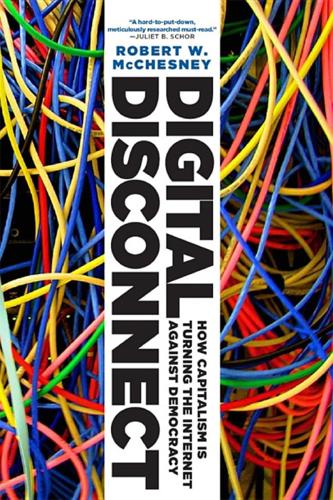
Digital Disconnect: How Capitalism Is Turning the Internet Against Democracy
by
Robert W. McChesney
Published 5 Mar 2013
Carl Franzen, “Cybersecurity Bill Backed by Obama Won’t Protect U.S., Experts Agree,” TPM Idea Lab, July 21, 2012, idealab.talkingpointsmemo.com/2012/07/president-obamas-warning-on-cyber-attacks-divides-experts.php; Ed O’Keefe, “Cybersecurity Bill Fails in Senate,” Washington Post online, Aug. 2, 2012, washingtonpost.com/blogs/2chambers/post/cybersecurity-bill-fails-in-the-senate/2012/08/02/gJQABofxRX_blog.html. 247. Sascha Meinrath e-mail to author, Aug. 22, 2012. 248. Sascha Meinrath e-mail to author, May 7, 2012. 249. Ari Melber, “Obama Sides with Civil Libertarians on Cyberwar Policy,” TheNation.com, May 3, 2012, thenation.com/blog/167706/obama-sides-civil-libertarians-cyberwar-policy. 250. Tim Karr e-mail to author, May 7, 2012. 251. “Declaration of Internet Freedom,” internetdeclaration.org/freedom. 252. Daniel J. Solove, Nothing to Hide: The False Tradeoff Between Privacy and Security (New Haven, CT: Yale University Press, 2011), 207. 253.
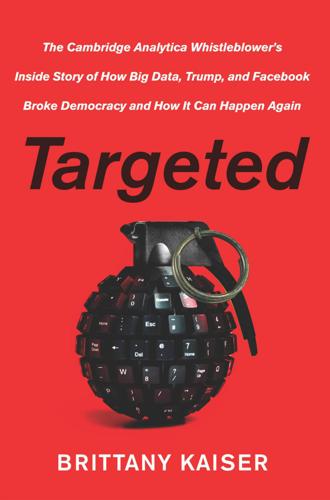
Targeted: The Cambridge Analytica Whistleblower's Inside Story of How Big Data, Trump, and Facebook Broke Democracy and How It Can Happen Again
by
Brittany Kaiser
Published 21 Oct 2019
Now, what more could a conservative donor family want than a media baron to produce messaging and a data science company to target those messages to their audience? Steve Bannon would become, by many accounts, the Mercers’ Obi-Wan Kenobi. Steve, Bob, Bekah, and Alexander were an obvious match—all connected via Wisconsin GOP politico Mark Block. In 2013, Block was on an airplane when he met, by chance, a U.S. Air Force cyberwar expert who sang the praises of SCL. Block then sought out Alexander. Block had been aware of the Obama campaign’s data analytics, but after meeting Alexander, he realized that Nix’s vision was “light-years ahead” of what the Democrats had.6 Block went on to get everyone on board—literally. As he once described the Nix-Bannon-Mercers meeting to a journalist, he and Alexander arrived at a “grungy sports bar” on the Hudson River, where they had been told they were to meet up with the Mercers.
…
For me, there was a poignant moment here and there: a platform I had trusted with all my data (my hopes, my fears, my family photos, my life events) had become the arbiter of bad faith. Not only had it allowed all my data to be taken by any company around the world willing to pay for access, but it had also opened up its platform for interference in elections by powers foreign and domestic. Cyberwar crimes had been committed against the American people, and Mark Zuckerberg and Sheryl Sandberg were financially benefiting from them. Remorse was nowhere to be seen. Theirs was a modern-day dictatorship like the ones I used to lobby against in the European Parliament and the United Nations. How had it taken so long for me to see it?
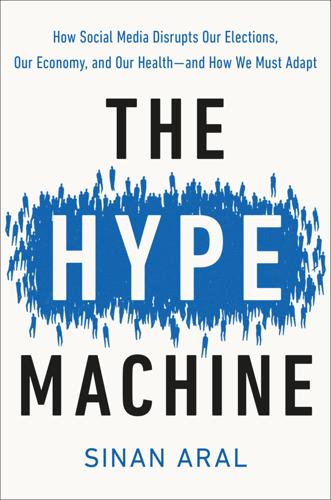
The Hype Machine: How Social Media Disrupts Our Elections, Our Economy, and Our Health--And How We Must Adapt
by
Sinan Aral
Published 14 Sep 2020
Rather than impersonating Americans, they are now nudging American citizens to repeat misinformation to avoid social media platform rules against “inauthentic speech.” They have shifted their servers from Russia to the United States because American intelligence agencies are barred from domestic surveillance. They have infiltrated Iran’s cyberwar department, perhaps to launch attacks made to seem like they originated in Tehran. In November 2019, Russian hackers successfully infiltrated the servers of the Ukrainian gas company Burisma, which was at the center of widely discredited allegations against Joe Biden and his son Hunter Biden, perhaps in an effort to dig up dirt to use during the general election.
…
Russian-linked spending and exposure to fake news: Hunt Allcott and Matthew Gentzkow, “Social Media and Fake News in the 2016 Election,” Journal of Economic Perspectives 31, no. 2 (2017): 211–36; Andrew Guess, Brendan Nyhan, and Jason Reifler, “Selective Exposure to Misinformation: Evidence from the Consumption of Fake News During the 2016 US Presidential Campaign,” European Research Council (2018), 9; N. Grinberg et al., “Fake News on Twitter During the 2016 US Presidential Election,” Science 363, no. 6425 (2019): 374–78. a combination of Russian trolls and hacking: Kathleen Hall Jamieson, Cyberwar: How Russian Hackers and Trolls Helped Elect a President (New York: Oxford University Press, 2018). observational estimates of the effects of Facebook advertising campaigns: Brett R. Gordon et al., “A Comparison of Approaches to Advertising Measurement: Evidence from Big Field Experiments at Facebook,” Marketing Science 38, no. 2 (2019): 193–225.
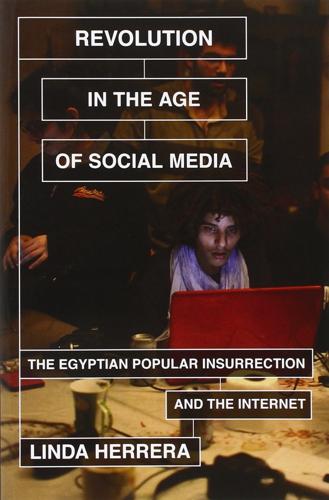
Revolution in the Age of Social Media: The Egyptian Popular Insurrection and the Internet
by
Linda Herrera
Published 14 Apr 2014
As reported in the Washington Post article “Tech Firms Hiring White House Staffers,” the Obama administration “brought Facebook and Twitter to politics.”11 In addition to the State Department’s 2.0 diplomacy initiatives, some of which targeted Tunisian and Egyptian internet activists, the Department of Defense and US intelligence agencies also liaised with tech companies on matters pertaining to national security. Technology companies had become deeply enmeshed in American power. Tunisia’s cyberwars escalated to even greater heights when Anonymous, the decentralized internet group that promotes online freedom, launched Operation Tunisia. During the Tunisian uprising, WikiLeaks founder Julian Assange released a series of incriminating cables detailing embezzlement and nepotism by the Ben Ali oligarchy, information that further fueled the revolt.

Vanished Kingdoms: The History of Half-Forgotten Europe
by
Norman Davies
Published 27 Sep 2011
It did so in 1994, when a sea-going ferry sank in the night in the Gulf of Finland with the loss of nearly a thousand lives, and it did so again in April 2007. On the latter occasion, the Estonian government had ordered the removal of a war memorial from the centre of the capital to a suburban cemetery. The result was violent rioting, followed by a strange episode that some commentators called ‘the world’s third cyber war’, organized, or so it appeared, by or from the country’s largest neighbour.* A very tiny flea had somehow enraged a very big bear. Estonia joined the European Union in 2004. One of ten new member states, it was one of three entrants which, until recently, had formed part of the Soviet Union. Its accession substantially extended the EU’s frontier with Russia that had first come into being to the north of St Petersburg, Russia’s second city, as a result of Finland’s accession in 1995.
…
Shops were looted and windows smashed; 300 disturbers of the peace were detained.17 Not content with the strength of this reaction, Vladimir Putin, president of the Russian Federation, used the occasion of the annual Red Square parade on 9 May to fuel the fire: ‘Those who are trying today to desecrate memorials to war heroes are insulting their own people and sowing enmity and new distrust,’ he told thousands of veterans and soldiers.18 Kremlin sources accused Estonia of ‘blasphemy’ and of ‘indulging neo-fascists’. Members of a Kremlin-backed youth movement barricaded the Estonian embassy in Moscow. Such was the context of the mysterious ‘cyber war’. The basic facts are not in dispute. The websites of Estonian government ministries, political parties, newspapers, banks and businesses were disabled by tens of thousands of simultaneous electronic ‘hits’. Their servers were swamped, and a domino-style sequence of Distributed Denial of Service (DDS) was triggered: in other words, paralysis.
…
(left) 1 para black, Nikola magnoludovicien; (centre) 2 para purple, King Nikola and Queen Milena; (right) 5 para green, the King on horseback. 76. Kalevipoeg, ‘The Son of Kalevi’: Estonia’s foundation myth. 77. The Pronkssödur or ‘Bronze Soldier’: a Soviet war memorial, whose removal to a war cemetery in Tallinn caused the cyber war of 2007. 78. The pre-war Linda Monument: used in Soviet times as an unofficial memorial site for Estonians killed or deported by Stalin. 79. Red Army cavalry enters Tallinn. The forces of the Soviet Union occupied Estonia twice, in 1940–41 and for a second time between 1945 and 1991. 80.

The Scandal of Money
by
George Gilder
Published 23 Feb 2016
El-Erian, The Only Game in Town (2016) China today is a Rorschach test of American leadership. How we respond to its murky mass of conflicting images—great cities of mostly empty skyscrapers next to industrial zones churning with much of the world’s manufacturing capacity, military charades and cyberwar aggressions accompanied by monetary statesmanship and wild prodigality, miracles of growth and swamps of pollution, alleged harvesting of body parts from Falun Gong prisoners and a robust Christian population of between 67 and 130 million, capitalist chaos and communist brutality—will likely determine the American future.
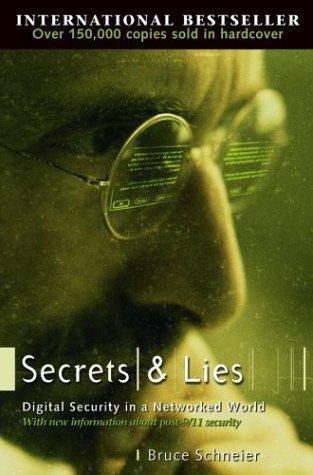
Secrets and Lies: Digital Security in a Networked World
by
Bruce Schneier
Published 1 Jan 2000
To subscribe, visit: http://www.schneier.com/crypto-gram.html Or send a blank message to: crypto-gram-subscribe@chaparraltree.com You can read back issues on the Web site, too. Some specific articles that may be of interest are: Risks of cyberterrorism: http://www.schneier.com/crypto-gram-0306.html#1 Militaries and cyberwar: http://www.schneier.com/crypto-gram-0301.html#1 The “Security Patch Treadmill”: http://www.schneier.com/crypto-gram-0103.html#1 Full disclosure and security: http://www.schneier.com/crypto-gram-0111.html#1 How to think about security: http://www.schneier.com/crypto-gram-0204.html#1 What military history can teach computer security (parts 1 and 2): http://www.schneier.com/crypto-gram-0104.html#1 http://www.schneier.com/crypto-gram-0105.html#1 Thank you for taking the time to read Secrets and Lies.
…
In retaliation, Serbian hackers attacked hundreds of U.S. and NATO computer sites. Chinese hackers crashed computers in the Department of the Interior, the Department of Energy, and the U.S. embassy in Beijing in retaliation for our accidental bombing of their embassy in Belgrade. China and Taiwan engaged in a little cyberwar through most of 1999, attacking each other’s computers over the Internet (although this was probably not government coordinated on either side). In the past, military and civilian systems were separate and distinct: different hardware, different communications protocols, different everything. Over the past decade, this has shifted; advances in technology are coming too fast for the military’s traditional multiyear procurement cycle.
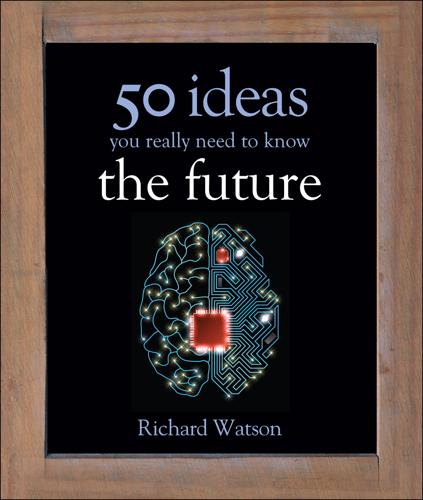
50 Future Ideas You Really Need to Know
by
Richard Watson
Published 5 Nov 2013
These last two are especially interesting because drones or UAVs potentially represent an interesting blend of human and machine intelligence that’s relatively silent, cheap and deadly. Tactics such as these suit informal terrorist groups and are an example of what’s known as asymmetric warfare, where the formal power on one side differs significantly from that of the other. Cyberwar, a form of asymmetric war in many cases, is not limited to the military either. As the cost of winning and losing in business escalates, so too does the temptation to use cyberspace to steal commercial secrets and intellectual property. Moreover, with everyday life moving toward “the cloud,” whereby information is stored remotely and accessed on an on-demand basis, the implications of digital disruption and electronic insecurity (whether government-sponsored or inflicted by politicized geeks, information vigilantes or “hacktivists”) are enormous.
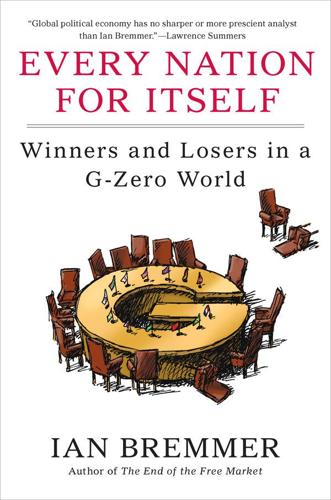
Every Nation for Itself: Winners and Losers in a G-Zero World
by
Ian Bremmer
Published 30 Apr 2012
As with terrorism, attackers have to hit the target only once to do enormous damage. Past efforts to develop treaties or common codes of conduct have produced little real progress, mainly because states don’t perceive their vulnerabilities in the same way or with the same urgency. These vulnerabilities have also fueled the growth of a cyberwar industry, one in which fear of the unknown feeds demand for all kinds of offensive and defensive weaponry—tools created by companies that may not be particular about whom they’re willing to include on their expanding list of customers. In addition, the high-stakes commercial conflict between state-owned companies and multinational corporations is providing state capitalists with a serious home-field advantage.
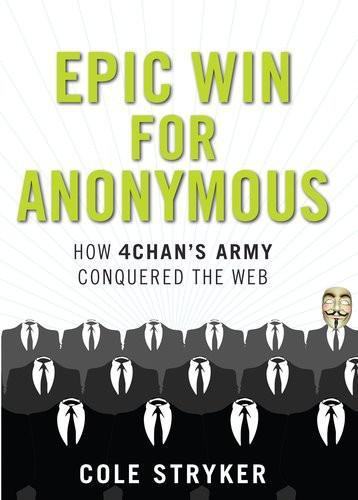
Epic Win for Anonymous: How 4chan's Army Conquered the Web
by
Cole Stryker
Published 14 Jun 2011
Last modified May 1997. http://www.rotten.com/about/obscene.html. Rutkoff, Aaron. “Sean Connery Delivers A Line That Eventually Sparks an Internet Fad.” The Wall Street Journal online. Last modified November 7, 2005. http://online.wsj.com/article_email/SB112801537556955862-lMyQjAxMDE1MjA4NzAwMTc1Wj.html. Ryan, Yasmine. “Tunisia’s Bitter Cyberwar.” Al Jazeera. Last modified January 6, 2011. http://english.aljazeera.net/indepth/features/2011/01/20111614145839362.html. Sausage, Eddie Lee. “Some Notes Toward a History of Shut Up, Little Man!” Last modified 2008. http://shutuplittleman.com/history.php. Schonfeld, Erick. “Time Magazine Throws Up Its Hands As It Gets Pwned By 4Chan.”

The System: Who Owns the Internet, and How It Owns Us
by
James Ball
Published 19 Aug 2020
As light travels down the fibre-optic cables which cross the Atlantic and the world’s other oceans, intelligence agencies split it, siphoning it off and examining its data. The cyber warriors of the planet have a duty to protect us online, but also to spy on adversaries, a dual role and a tension which has left us all vulnerable. Through the Snowden leaks and a trip to the front lines of the cyberwar – thousands of state versus state daily hacks impacting on all of us – the hidden conflicts of the internet will be seen in plain sight. And finally, we come to the rulemakers, the regulators who are supposed to be actually governing this mess, and the resistance: activist groups trying to hold the internet’s power in check – a shift from glitzy multimillion-dollar offices to leaseholds next to garages and one-man operations, a sign of the inequality of the fight they face, yet still score frequent triumphs.

Four Battlegrounds
by
Paul Scharre
Published 18 Jan 2023
BOT WARS 141information ecosystem that is already supercharged with bots: Renee Diresta, “Free Speech Is Not the Same As Free Reach,” Wired, August 30, 2018, https://www.wired.com/story/free-speech-is-not-the-same-as-free-reach/. 141bots have played a role in amplifying: Chengcheng Shao et al., “The Spread of Low-Credibility Content by Social Bots,” Nature Communications 9 (2018), https://www.nature.com/articles/s41467-018-06930-7. 141“we all have trust in Mohammed Bin Salman”: Chris Bell and Alistair Coleman, “Khashoggi: Bots Feed Saudi Support After Disappearance,” BBC News, October 18, 2018, https://www.bbc.com/news/blogs-trending-45901584; Case Studies—Collated—NOV 2019.docx (ox.ac.uk, November 2019), 89–91, https://comprop.oii.ox.ac.uk/wp-content/uploads/sites/93/2019/09/Case-Studies-Collated-NOV-2019-1.pdf. 141list of top trending hashtags in Saudi Arabia: Bel Trew, “Bee Stung: Was Jamal Khashoggi the First Casualty in a Saudi Cyberwar?” The Independent, October 20, 2018, https://www.independent.co.uk/news/world/middle-east/jamal-khashoggi-saudi-arabia-cyberwar-trolls-bee-army-missing-journalist-turkey-us-a8591051.html. 141broader disinformation effort by Saudi Arabia: Jack Stubbs, Katie Paul, and Tuqa Khalid, “Fake News Network vs. Bots: The Online War Around Khashoggi Killing,” Reuters, November 1, 2018, https://uk.reuters.com/article/uk-saudi-khashoggi-disinformation-idUKKCN1N63R0. 141common tool by political actors: Marc Jones and Alexei Abrahams, “A Plague of Twitter Bots Is Roiling the Middle East,” Washington Post, June 5, 2018, https://www.washingtonpost.com/news/monkey-cage/wp/2018/06/05/fighting-the-weaponization-of-social-media-in-the-middle-east/. 141fifty countries around the world: Samantha Bradshaw and Philip N.

Propaganda and the Public Mind
by
Noam Chomsky
and
David Barsamian
Published 31 Mar 2015
Libya in 1986, one of the worst acts of international terrorism, in fact, is given as an example of how we’re defending ourselves from terror. That’s standard. You can pick any period of years you like and you’ll find many examples. In the same article, Richard Clarke, who is called the “czar” of this antiterrorism campaign, warns against “cyberwar” and “electronic Pearl Harbors.” I wouldn’t say it’s impossible, but as compared with the actual bombing of a pharmaceutical plant in the Sudan, how do you rank potential cyberwarfare as a terrorist threat? They’re not even in the same universe. The source of cyberterror is very likely to be the advanced countries.

A Theory of the Drone
by
Gregoire Chamayou
Published 23 Apr 2013
“DoD News Briefing with Lt. Gen. Deptula and Col. Mathewson from the Pentagon,” July 23, 2009, www.defense.gov/transcripts/transcript.aspx?transcriptid=4451. 6. Siobhan Gorman, Yochi J. Dreazen, and August Cole, “Insurgents Hack U.S. Drones,” Wall Street Journal, December 17, 2009. 7. UPI, “Israel Encrypts UAVs as Cyberwar Widens,” June 12, 2012. 8. Noah Shachtman, “Computer Virus Hits U.S. Drone Fleet,” Wired, July 10, 2011. 9. Lorenzo Franceschi-Bicchierai, “Drone Hijacking? That’s Just the Start of GPS Troubles,” Wired, July 6, 2012. 10. Qiao Liang and Wang Xiangsui, Unrestricted Warfare (Panama City: Pan American Publishing, 2002), 93. 11.
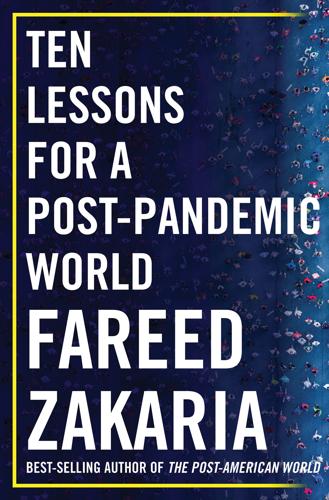
Ten Lessons for a Post-Pandemic World
by
Fareed Zakaria
Published 5 Oct 2020
A pandemic that initially drove countries apart could prove to be the catalyst for a long-sought closer union. The same tension between integration and isolation can be seen across the world. The pandemic is leading countries to look inward. But enlightened leaders will recognize that the only real solution to problems like pandemics—and climate change and cyberwar—is to look outward, toward more and better cooperation. The solution to a badly funded, weak World Health Organization is not to withdraw from it in the hope that it withers away, but rather to fund it better and give it more autonomy so that it could stand up to China—or the United States—if a health emergency required it.
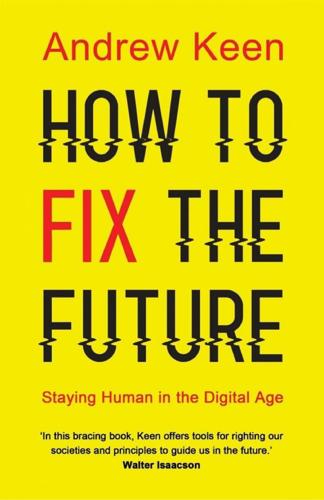
How to Fix the Future: Staying Human in the Digital Age
by
Andrew Keen
Published 1 Mar 2018
Peter Pomerantsev, “The Hidden Author of Putinism,” Atlantic, November 7, 2014. 20. Peter Pomerantsev, “Russia and the Menace of Unreality,” Atlantic, September 9, 2014. 21. Shaun Walker, “Salutin’ Putin: Inside a Russian Troll House,” Guardian, April 2, 2015. 22. Andrew E. Kramer, “How Russia Recruited Elite Hackers for Its Cyberwar,” New York Times, December 29, 2016. 23. Sam Jones, “Russia’s Cyber Warriors,” Financial Times, February 24, 2017. 24. Mark Scott and Melissa Eddy, “Europe Combats a New Foe of Political Stability: Fake News,” New York Times, February 20, 2017. 25. For a compelling narrative of the Aadhaar project, see Nandan Nilekani and Viral Shah, Rebooting India: Realizing a Billion Aspirations (Penguin, 2015).
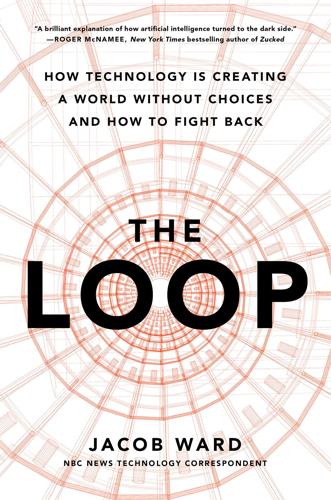
The Loop: How Technology Is Creating a World Without Choices and How to Fight Back
by
Jacob Ward
Published 25 Jan 2022
Cyberwarfare, for instance, reduces the allowed response time in combat still further, from seconds to milliseconds, requiring a total delegation of authority to automated systems that detect and respond to attacks in cyberspace. In fact, an entire industry sells automation so pervasive the product categories have their own acronyms, such as SOAR, for security orchestration, automation, and response. As Peter W. Singer, coauthor of Cybersecurity and Cyberwar and a strategist at the New America Foundation, put it to me, cyberattacks don’t have some hacker on the other end, tapping at a keyboard. “It’s software writing software weaponry.” And from cyber to drones to every other aspect of human conflict, automation is changing war, and how we feel about it.
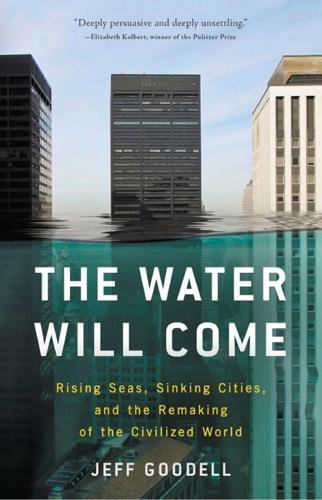
The Water Will Come: Rising Seas, Sinking Cities, and the Remaking of the Civilized World
by
Jeff Goodell
Published 23 Oct 2017
Admiral Samuel Locklear, who was in charge of all US armed forces in the Pacific, is one of the most respected men in the US military—and the one with the toughest job, with both China and North Korea to watch over. But in 2013, when a journalist asked him what he believed was the biggest long-term security threat to the region, he didn’t talk about the nuclear fantasies of North Korean leader Kim Jong-un or a cyberwar with China—he talked about sea-level rise, and increasingly monstrous storms that could wipe out a small nation. The political and social upheaval we’re likely to see from our rapidly warming planet, Locklear said, “is probably the most likely thing that will cripple the security environment, probably more likely than the other scenarios we all often talk about.”
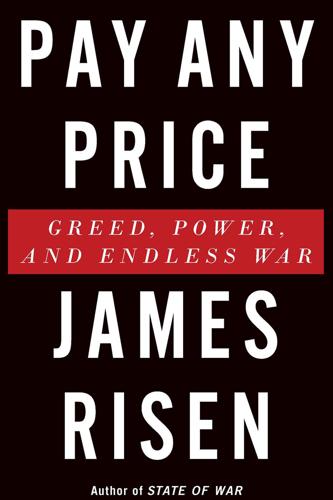
Pay Any Price: Greed, Power, and Endless War
by
James Risen
Published 15 Feb 2014
After he left office, McConnell became a senior executive for Booz Allen Hamilton, one of the top three contractors in defense cybersecurity, according to data compiled by Bloomberg Government in 2012. While at Booz Allen, McConnell has used the media platform provided by his status as a former director of national intelligence to publicly argue that much more needs to be done to protect the nation from cyberattacks. In one op-ed, he argued that cyberwar “mirrors the nuclear challenge in terms of the potential economic and psychological effects.” But a fact rarely mentioned in the rush to grant the NSA more power over cybersecurity—and greater access to the Internet—is that the NSA is now one of the world’s leaders in the use of offensive cyberattacks.

The Rapture of the Nerds
by
Cory Doctorow
and
Charles Stross
Published 3 Sep 2012
Obviously there’s any number of cloudies who would love to get their brains on six trillion trillion kilograms of computronium, even though it’d take quite a long time to cool down on account of 98 percent of it being white hot and under high pressure right now. So there’s a big gap between it being popular, and going land-grab crazy for it. Rumor says that WorldGov’s slave cyberwar AIs sneaked some nasty poison pills into the standard shard firmware design back during the hard takeoff, just in case their owners ever wanted to shut it down—that’s just a rumor,” Ade adds hastily. “Personally, I think it’s a pile of possum poo, but it just might be that they don’t disbelieve it with sufficient conviction to say ‘up yours’ to what’s left of incarnate humanity without going through the correct legal forms.”
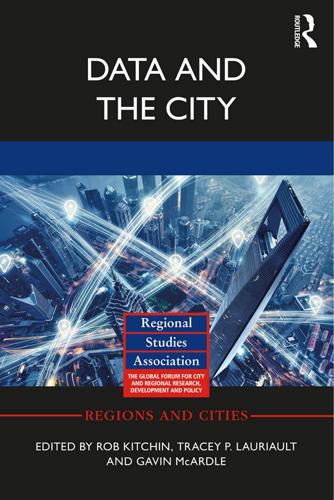
Data and the City
by
Rob Kitchin,Tracey P. Lauriault,Gavin McArdle
Published 2 Aug 2017
During the 1990s and early days of the internet, ‘cyberspace’ was heralded as a new space and it enjoyed considerable popularity to describe being ‘online’ (e.g. Barlow 1996; Gibson 1984; Katz 1997). While variously defined, it has continued to function in contemporary discourse as evident in its many derivatives such as cyberwar, cybersecurity, cyberfeminism and cybercrime. It has also been subject to critical debate and resignification especially by feminist scholars for its connection to cybernetics (e.g. Braidotti 1996; Haraway 1991). While it has somewhat fallen out of fashion and concepts such as online versus offline have become more common, I think it is useful to return to some of the promises in early conceptions of cyberspace.
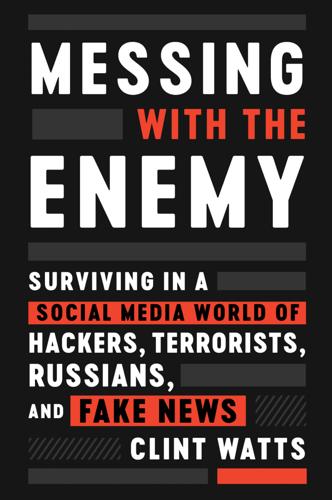
Messing With the Enemy: Surviving in a Social Media World of Hackers, Terrorists, Russians, and Fake News
by
Clint Watts
Published 28 May 2018
Павел Седаков, “Контракт со взломом: как хакер построила бизнес за счет банков и корпораций” Forbes (November 12, 2014). http://www.forbes.ru/tekhnologii/internet-i-svyaz/275355-kontrakt-na-ugrozu-kak-khaker-stroit-biznes-na-zashchite-bankov. For more on Esage Lab and Neuron Hackerspace see: http://esagelab.com/neuronspace; and Andy Greenberg, “How an Entire Nation Became Russia’s Test Lab For Cyberwar,” Wired (June 20, 2017). https://www.wired.com/story/russian-hackers-attack-ukraine. 30. Alan Rappeport and Neil MacFarquhar, “Trump Imposes New Sanctions on Russia Over Ukraine Incursion,” The New York Times (June 20, 2017). https://www.nytimes.com/2017/06/20/world/europe/united-states-sanctions-russia-ukraine.html. 31.

Dark Pools: The Rise of the Machine Traders and the Rigging of the U.S. Stock Market
by
Scott Patterson
Published 11 Jun 2012
A trader could type a symbol into the Watcher and hit Shift B to buy one thousand shares of a stock—or Shift S to sell one thousand. The algorithm behind the key would instantly calculate a price that was 20 percent up or down. The Monster Key was one of the original trading algos, among the first of a growing arsenal of digital weapons in a coming cyberwar that would eventually marshal the most sophisticated techniques in computer science. The Key could be dangerous, a sure way for reckless traders to lose massive sums of money. Good traders, however, could rack up huge profits. More trading algos would come. Levine designed Bombs, then SuperBombs.
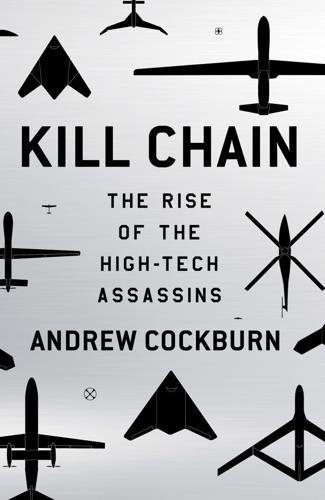
Kill Chain: The Rise of the High-Tech Assassins
by
Andrew Cockburn
Published 10 Mar 2015
Jasons pondering how to block the Ho Chi Minh Trail back in the summer of 1966 would have caught on to the idea immediately. Unsurprisingly, the defense intelligentsia was quick to fall into line. Two Rand Corporation researchers, David Ronfeldt and John Arquilla, academic foot soldiers in the revolution in military affairs, popularized the notions of “cyberwar” and “netwar” as well as the catchy slogan “It takes a network to defeat a network.” Meanwhile, politicians were getting in on the act. In 1996 Senators Joseph Lieberman and Dan Coats sponsored a National Defense Panel as a forum to advance “the revolution in military affairs.” Andrew Krepinevich, the Marshall aide who had coined the revolutionary slogan, was picked to represent the senate Democrats on the panel.

Custodians of the Internet: Platforms, Content Moderation, and the Hidden Decisions That Shape Social Media
by
Tarleton Gillespie
Published 25 Jun 2018
If we dreamed of new forms of public visibility, we also got NSA surveillance. If we dreamed of free content and crowdsourced knowledge, we also got the exploitation of free labor. If we dreamed of easy interconnection between complex technical resources, we also got hacked passwords, data breaches, and cyberwar. The companies that have profited most from our commitment to platforms did so by selling the promises of participatory culture. As those promises have begun to sour and the reality of their impact on public life has become more obvious and more complicated, these companies are now grappling with how best to be stewards of public culture, a responsibility that was not evident to them at the start.

The Raging 2020s: Companies, Countries, People - and the Fight for Our Future
by
Alec Ross
Published 13 Sep 2021
Instead, he stood with Russia, and in the same way that Russian aircraft bombed Assad’s Syrian opponents, Russia and hackers who worked inside and outside government conducted the cyber war for Assad. Companies and countries were combatants. The entire cyber war in Syria blurs the distinction between what is being done by business and what is being done by government. Companies have carved out a unique place for themselves on the global stage in recent decades. This new role can be harnessed to exploit gaps in geopolitics, as we saw with the subject of tax avoidance. Or it can be used to plug those holes, by using companies’ expertise and scale to help create a more stable social contract. In this chapter we will largely use the subject of AI and cyber war as a case study in the stabilizing effect that companies can have on international issues.
…
See also specific CEOs compensation for diplomacy skills and diversity initiatives and short-term planning and Charter Communications Chemical Footprint Project Chevrolet child-labor prevention Chile China AI and authoritarianism and cheap manufacturing in closed systems and cyber war and government and private sector in hardware from private sector in race for technological dominance and surveillance and technology transfer and Western technology companies and Chinese Communist Party Chinese People’s Political Consultative Conference Chouinard, Malinda Chouinard, Yvon Chouinard Equipment Ltd. Christensen, John Chrysler CIA (Central Intelligence Agency) Cisco Systems Citigroup Citizens United decision City of London Corporation Civil War (US) climate change closed systems CloudWalk Technology Coca-Cola Code War. See also cyber war Cohen, Jared Cold War end of Collip, James colonial history Columbia Law School Comcast Corporation Commerce Department Committee on Foreign Investment in the United States Commonwealth countries companies, power of.
…
But these three chapters stay largely within the confines of national borders, asking how each of the world’s 196 countries can build a better social contract for themselves. However, the reality of our world is that many of its biggest concerns are now global; they do not stick within national borders, and instead tend to metastasize in the gaps between countries. Climate change, human rights abuses, tax evasion, cyber war, economic crises, pandemics—all of these are issues that affect people the world over and demand international responses. Any social contract for our new world needs to include means for addressing these issues and reaching beyond borders in a way that the industrial-age contract did not need to.
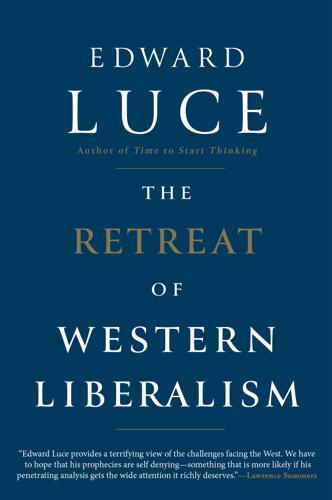
The Retreat of Western Liberalism
by
Edward Luce
Published 20 Apr 2017
‘[Because] of the seamless worldwide network, the packets, and the Internet of Things, cyber war [will] involve not just soldiers, sailors, and pilots but, inexorably, the rest of us,’ says Fred Kaplan, author of Dark Territory: The Secret History of Cyber War. ‘When cyberspace is everywhere, cyber war can seep through every digital pore.’ The good news about cyber warfare is that it can never rival the damage caused by nuclear weapons. The bad news is that it is a permanent war. When Pentagon meetings turned to cyber war, Bob Gates, America’s former Defense Secretary, would mutter, ‘We are entering dark territory again’.20 It was a phrase used by his grandfather, who worked on the railways, about the stretches of line where there were no signals.
…
‘[If] countries are going to have nukes, we are going to be top of the pack,’ he said shortly after becoming president.19 Just as we believed history had come to an end, so we thought we had entered a post-nuclear age. On the contrary, the risk of nuclear conflict has never been higher. The threat of cyber war has since been added to the equation. It poses the opposite problem to Cold War bilateral deterrence. Cyber weapons are the ultimate in asymmetric warfare. Not only are they at the disposal of multiple players – countless players, if you include non-state actors – but it is often impossible to know who is hitting you.
…
When Pentagon meetings turned to cyber war, Bob Gates, America’s former Defense Secretary, would mutter, ‘We are entering dark territory again’.20 It was a phrase used by his grandfather, who worked on the railways, about the stretches of line where there were no signals. It is a good description of the networked world. They say the first casualty of war is truth. In cyber war, truth is a primary target. States, such as Russia, and non-state entities, such as Isis, can generate fake stories at will and make them look as though they came from elsewhere. The system will do the rest. In 2016, a huge number of fake news stories were picked up via Facebook. That year was also a record one for Facebook advertising revenues.
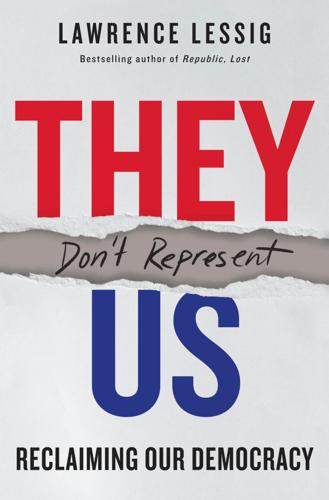
They Don't Represent Us: Reclaiming Our Democracy
by
Lawrence Lessig
Published 5 Nov 2019
See also Laura Hazard Owen, “Facebook Groups Are ‘the Greatest Short-Term Threat to Election News and Information Integrity,’” NiemanLab, November 9, 2018, available at link #135; Jonathan Albright, “The Shadow Organizing of Facebook Groups,” Medium, November 4, 2018, available at link #136. 116.Yochai Benkler and his colleagues are not convinced the Russians affected the 2016 election results. Benkler, Faris, and Roberts, Network Propaganda, chap. 8. Kathleen Hall Jamieson believes the opposite. Kathleen Hall Jamieson, Cyberwar: How Russian Hackers and Trolls Helped Elect a President (New York: Oxford University Press, 2018). It is clear that we are learning more that leads more directly to Jamieson’s conclusion. See, for example, Adam Peck, “The Russian Effort to Divert Votes to Jill Stein Was More Extensive than Previously Thought,” ThinkProgress, December 22, 2018, available at link #137; Peter Weber, “Ex-intelligence Chief James Clapper Says Russia Won the Election for Trump.

New Laws of Robotics: Defending Human Expertise in the Age of AI
by
Frank Pasquale
Published 14 May 2020
Chamayou, A Theory of the Drone, 93, 95. 32. Ibid., 143 (“The fact that your weapon enables you to destroy precisely whomever you wish does not mean that you are more capable of making out who is and who is not a legitimate target”). 33. Ibid., 147. 34. The blurring line between offense and defense is also a theme of the cyberwar literature (and has informed cryptography since at least the 1930s). Galison, “Ontology of the Enemy.” 35. William Bogard, The Simulation of Surveillance: Hypercontrol in Telematic Societies (New York: Cambridge University Press, 1996), 85. 36. Paul Scharre, Army of None: Autonomous Weapons and the Future of War (New York: Norton, 2018). 37.

Hacking Capitalism
by
Söderberg, Johan; Söderberg, Johan;
Johnson, Benjamin, and Patrick Kavanagh and Kevin Mattson. Steal this University—The Rise of the Corporate University and the Academic Labor Movement, New York: Routledge, 2003. Jordan, Tim. Activism!—Direct Action, Hacktivism and the Future of Society, London, Reaktion Books, 2002. Jordan, Tim, and Paul Taylor. Hacktivism and Cyberwars—Rebels With a Cause?, New York: Routledge, 2004. ed. Kabel, Jan, and Gerard Mom. Intellectual Property and Information Law, Hague: Kluwer Law International, 1998. ed. Kahin, Brian, and Hal Varian. Internet Publishing and Beyond Cambridge, Mass.: MIT Press, 2000. Katz, Claudio. From Feudalism to Capitalism—Marxian Theories of Class Struggle and Social Change, New York: Greenwood Press, 1989.

The Ransomware Hunting Team: A Band of Misfits' Improbable Crusade to Save the World From Cybercrime
by
Renee Dudley
and
Daniel Golden
Published 24 Oct 2022
Like the Ransomware Hunting Team, most of the attackers are young men. They are concentrated in Eastern Europe, although scattered globally. In countries such as Russia and North Korea, some gangs appear to enjoy a degree of government protection—and, in some cases, to be weapons in an undeclared cyberwar. Some of the hackers pride themselves on abiding by a code of ethics. For example, they generally uphold their side of the bargain and restore computer access upon receiving a ransom. The gangs recognize that if they earn a reputation as double-crossers, future victims will be less likely to pay.

The Age of Surveillance Capitalism
by
Shoshana Zuboff
Published 15 Jan 2019
Michaels, “All the President’s Spies,” 908; Chris Hoofnagle, “Big Brother’s Little Helpers: How ChoicePoint and Other Commercial Data Brokers Collect and Package Your Data for Law Enforcement,” North Carolina Journal of International Law and Commercial Regulation 29 (January 1, 2003): 595; Junichi P. Semitsu, “From Facebook to Mug Shot: How the Dearth of Social Networking Privacy Rights Revolutionized Online Government Surveillance,” Pace Law Review 31, no. 1 (2011). 90. Mike McConnell, “Mike McConnell on How to Win the Cyber-War We’re Losing,” Washington Post, February 28, 2010, http://www.washingtonpost.com/wp-dyn/content/story/2010/02/25/ST2010022502680.html. 91. Davey Alba, “Pentagon Taps Eric Schmidt to Make Itself More Google-ish,” Wired, March 2, 2016, https://www.wired.com/2016/03/ex-google-ceo-eric-schmidt-head-pentagon-innovation-board; Lee Fang, “The CIA Is Investing in Firms That Mine Your Tweets and Instagram Photos,” Intercept, April 14, 2016, https://theintercept.com/2016/04/14/in-undisclosed-cia-investments-social-media-mining-looms-large. 92.
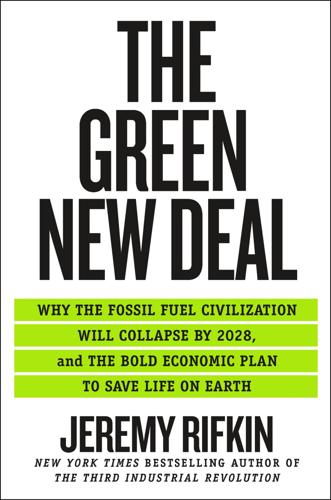
The Green New Deal: Why the Fossil Fuel Civilization Will Collapse by 2028, and the Bold Economic Plan to Save Life on Earth
by
Jeremy Rifkin
Published 9 Sep 2019
Like the Interstate Highway System, the emerging smart national power grid is digitally connecting the American economy and society and increasing the nation’s efficiency, productivity, and economic well-being, and, when finished, will also address security concerns that, at least in part, gave rise to the Interstate Highway System. In the 1950s, the threat was nuclear war. Today, the threat is cyber war. On the upside, the smart national power grid is managing an ever more diverse and complex energy infrastructure made up of literally millions of players in dense relationships on ever-shifting platforms. Yet, the very complexity of the current system makes it increasingly vulnerable to cyberattacks.
…
For those raised voices saying that the US government can’t afford a significant upgrade in the nation’s infrastructure, consider that the defense budget for just the year 2019 is $716 billion, one of the largest in US history.28 According to the Congressional Budget Office, funding for weapons systems takes up about one-third of the budget of the Department of Defense (DoD).29 The United States’ defense budget is larger than the total combined military budgets of China, Russia, the United Kingdom, France, India, Japan, and Saudi Arabia.30 Surely there’s something terribly wrong in the way the federal government is allocating funds to protect “the national security” of the homeland. We ought to consider reallocating at least a small part of the DoD’s priorities from ever more costly expenditures on weapons systems we will never use to the military’s new paramount role in protecting the country against cyber wars and managing climate-related disaster response and relief missions, which will increasingly be seen as the most important national security issues facing our communities and country in the decades to come. An additional $30 billion could be garnered for the federal government’s contribution to the Green New Deal by simply cutting 12.6 percent of the overblown and outsized weapons systems budget of the DoD, which amounts to only approximately 4 percent of the total military budget for 2019.
…
An additional $30 billion could be garnered for the federal government’s contribution to the Green New Deal by simply cutting 12.6 percent of the overblown and outsized weapons systems budget of the DoD, which amounts to only approximately 4 percent of the total military budget for 2019. If we’re not even willing to reprioritize this tiny fraction of the current DoD budget to secure a resilient smart national power grid to address cyber war and catastrophic climate events, then we’re putting the country in deep jeopardy. Additional federal revenue can come from terminating the nearly $15 billion in federal subsidies given to the oil, gas, and coal industries each year.31 There is no longer any justification for subsidizing the fossil fuel sector, whose assets are quickly becoming stranded.

Cities Under Siege: The New Military Urbanism
by
Stephen Graham
Published 30 Oct 2009
If you don’t dominate in cyber, you cannot dominate in other domains’.113 Whilst the Air Force Cyber Command initiative was suspended in August 2008, due to inter-service rivalry, similar capabilities are being developed within the US military, spread out between the Army, Navy and Air Force. These efforts to bolster US cyberwar capabilities were significantly bolstered by developments elsewhere, including a series of massive ‘denial-of-service attacks’ against Estonia in the spring of 2007, apparently in revenge for the moving of a statue commemorating, the Soviet war dead in Talinn.114 These attacks–at least partly the work of hackers linked to the Russian state, it seems–crippled the web sites of Estonia’s prime minister and Estonian banks.

The Best Business Writing 2013
by
Dean Starkman
Published 1 Jan 2013
As he and others have discovered by now, one can continue fooling the public with slick ahistorical jeremiads on geopolitics by serving them with the coarse but tasty sauce that is the Cyber-Whig theory of history. The recipe is simple. Find some peculiar global trend—the more arcane, the better. Draw a straight line connecting it to the world of apps, electric cars, and Bay Area venture capital. Mention robots, Japan, and cyberwar. Use shiny slides that contain incomprehensible but impressive maps and visualizations. Stir well. Serve on multiple platforms. With their never-ending talk of Twitter revolutions and the like, techno-globalists such as Khanna have a bright future ahead of them. In their TED book, the Khannas boldly declare that “mastery in the leading technology sectors of any era determines who leads in geoeconomics and dominates in geopolitics.”

The Default Line: The Inside Story of People, Banks and Entire Nations on the Edge
by
Faisal Islam
Published 28 Aug 2013
At the same time, relations with Russia deteriorated, and among the many bones of contention has been the impact of the Nord Stream pipeline on the sensitive environment of the Baltic Sea. For its part, Russia has from time to time tightened the screws on Estonia, for example launching a crippling cyberwar campaign against its small neighbour in April 2007 in retaliation for the relocation of a Soviet war memorial. The thrust of Putin’s policies, since his accession to the Russian presidency in 2000, shows how energy becomes power. For Russia, the strategy stretches well beyond gas. Gazprom is just one string to Putin’s bow.

Bleeding Edge: A Novel
by
Thomas Pynchon
Published 16 Sep 2013
Except that every day civilians walk around, no clue, even when it’s filling up screens right next to them at Starbucks, cyberspace warfare without mercy, 24/7, hacker on hacker, DOS attacks, Trojan horses, viruses, worms . . .” “Didn’t I see something in the paper about Russia?” “They’re serious enough about cyberwar, training people, spending budget, but even Russia you don’t have to worry about so much as”—pretending to smoke air hookah—”our Muslim brothers. They’re the true global force, all the money they need, all the time. Time is what the Stones call on their side, yes it is. Trouble ahead. Word around the cubes is there’s ’ese huge U.S. government contracts, everybody’s after em, big deal comin up in the Middle East, some people in the community sayin Gulf War Two.

The Cryptopians: Idealism, Greed, Lies, and the Making of the First Big Cryptocurrency Craze
by
Laura Shin
Published 22 Feb 2022
Through these hard forks, the devs also figured out how to structure data so that transactions could call random accounts without bogging the blockchain down. They hadn’t noticed the problem before because there weren’t that many accounts. This fix would enable Ethereum to grow much bigger. The DoS attacks were finally over. Though the period was stressful, Vitalik found fighting—and winning—this cyberwar fun in a way. Throughout, the attacker’s motivation was unclear. There wasn’t an obvious financial gain, although he or she could have shorted ETH. (The price did slide from about $13 to below $10 over the two months of the attacks.) In fact, he or she had spent one thousand ETH (roughly $12,000) on the attacks, plus the time to research and execute them.

WTF?: What's the Future and Why It's Up to Us
by
Tim O'Reilly
Published 9 Oct 2017
And that is to say nothing of groups like ISIS that have successfully used social media for terrorist recruiting, or of the role of propaganda planted or amplified by Russia with the goal of influencing the US presidential election. As one US government official who wished to remain anonymous told me: “We aren’t fighting our first cyberwar. We just fought it. And we already lost.” ALGORITHMIC WHAC-A-MOLE In many ways, the rising influence of fake news is a cautionary tale of algorithms gone wrong, digital djinns given poorly framed instructions with potentially catastrophic consequences. It is worth studying even though Facebook and Google will have done a great deal of work to solve the current iteration of the problem by the time this book is published.

Nexus: A Brief History of Information Networks From the Stone Age to AI
by
Yuval Noah Harari
Published 9 Sep 2024
They don’t announce their presence with a mushroom cloud and a storm of fire, nor do they leave a visible trail from launchpad to target. Consequently, at times it is hard to know if an attack even occurred or who launched it. If a database is hacked or sensitive equipment is destroyed, it’s hard to be sure whom to blame. The temptation to start a limited cyberwar is therefore big, and so is the temptation to escalate it. Rival countries like Israel and Iran or the United States and Russia have been trading cyber blows for years, in an undeclared but escalating war.38 This is becoming the new global norm, amplifying international tensions and pushing countries to cross one red line after another.
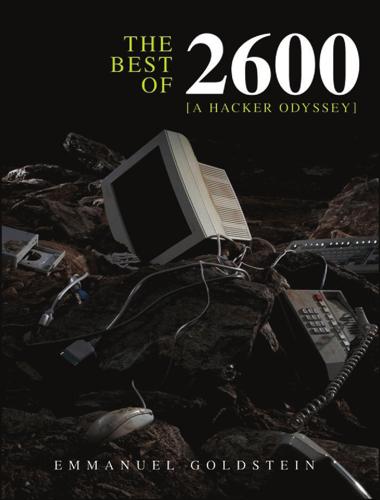
The Best of 2600: A Hacker Odyssey
by
Emmanuel Goldstein
Published 28 Jul 2008
It also plays right into the hands of the Clinton view of hackers by making us into some kind of tool of war that can be used to disrupt infrastructures and destabilize societies. No matter how right the cause seems to be, we must not allow ourselves to be manipulated into this position. In addition to being targeted as enemies of the state, this would also raise the possibility of being used by the government to enact their version of “cyberwar” against this week’s enemy. It’s not inconceivable that such “service” could be held over the head of hackers who get in trouble with the law. Given the choice between recruitment as an agent of electronic warfare and a federal prisoner, which would you choose? Being put in that position is clearly not where we should want to be.
…
The net became clogged, commerce was affected (the claims of billions of lost dollars quickly became accepted as undisputed fact), and our very way of life was once again being threatened. 94192c16.qxd 6/3/08 3:35 PM Page 663 A New Era of Telephony MILESTONE: FEEDING THE FRENZY (continued) So instead of dealing with the fact that we’ve become hooked on operating systems with large security holes that any idiot with a basic knowledge of programming can exploit, we handle it as if it were some sort of “cyberwar” complete with enemy combatants, spies, and a terrified populace. It’s a not-so-distant cousin of the Y2K hysteria when many became convinced that the world would be plunged into anarchy when the calendar changed. In such cases we need to remember some rational thoughts: Don’t become entirely dependent on any single system because failures and flaws are inevitable; Keep regular backups; Put the whole picture into perspective and realize that an occasional glitch in your e-mail or a temporary outage for amazon.com is simply one of the growing pains of the net, not the end of the world; Always have a different way of achieving the same ends so that if a piece of software or hardware becomes unreliable, you won’t be completely stuck.

Free Speech: Ten Principles for a Connected World
by
Timothy Garton Ash
Published 23 May 2016
If the German high command had been forewarned, the young soldier who subsequently became my father would probably have been gunned down as he landed on that Normandy beach with the first assault wave in 1944.22 Will anyone seriously claim that the Obama administration should have briefed the American public and the world in advance about its planned operation to capture or kill Osama bin Laden? Online, violent criminals, drug gangs and foreign armies exploit the so-called dark net, using all the tricks of hacking, malware, denial-of-service attacks and cyberwar. Spies risk their own necks to infiltrate dangerous groups, foiling plots that could cost thousands of innocent lives.23 Secrecy and openness are semantic opposites, but some secrecy is needed to defend an open society. Yet how can secrecy be reconciled with the transparency and accountability that are essential for the rule of law and representative government?
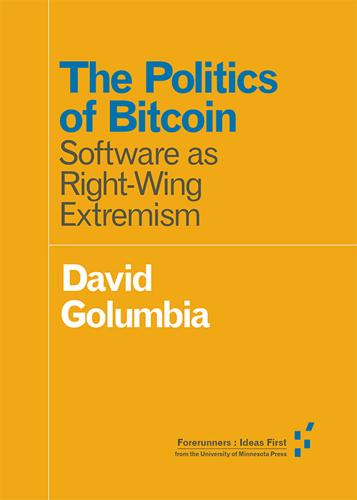
The Politics of Bitcoin: Software as Right-Wing Extremism
by
David Golumbia
Published 25 Sep 2016
Piketty, Thomas. 2014. Capital in the Twenty-First Century. Cambridge, Mass.: Harvard University Press. Popper, Nathaniel. 2015. Digital Gold: Bitcoin and the Inside Story of the Misfits and Millionaires Trying to Reinvent Money. New York: HarperCollins. Powers, Shawn M., and Michael Jablonski. 2015. The Real Cyber War: The Political Economy of Internet Freedom. Urbana: University of Illinois Press. Puddington, Arch. 2013. “The Tea Party’s Views on Tyranny, at Home and Abroad.” Freedom at Issue (September 17). http://freedomhouse.org/. Reagan, Ronald. 1981. Inaugural Address (January 20). In The American Presidency Project, edited by Gerhard Peters and John T.
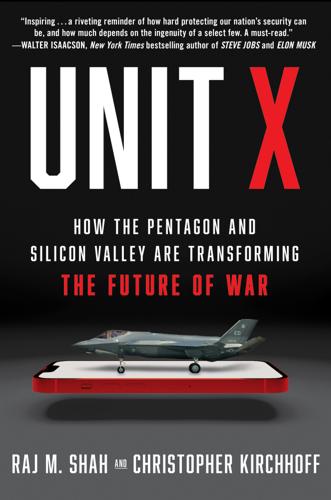
Unit X: How the Pentagon and Silicon Valley Are Transforming the Future of War
by
Raj M. Shah
and
Christopher Kirchhoff
Published 8 Jul 2024
“entire government on a Snowball”: Russ Mitchell, “How Amazon Put Ukraine’s ‘Government in a Box’—and Saved Its Economy from Russia,” Los Angeles Times, December 15, 2022, https://www.latimes.com/business/story/2022-12-15/amazon-ukraine-war-cloud-data/. Microsoft’s rapid response team: Brad Smith, “Defending Ukraine: Early Lessons from the Cyber War,” Microsoft Blog, June 22, 2022, https://blogs.microsoft.com/on-the-issues/2022/06/22/defending-ukraine-early-lessons-from-the-cyber-war/; Lauren Naniche, Jafer Ahmad, and Joe Wang, “Lessons Learned from Ukraine: Protecting Nations’ Digital Freedom from External Aggression,” Special Competitive Studies Project, December 16, 2022, https://scsp222.substack.com/p/lessons-learned-from-ukraine-protecting.

Warnings
by
Richard A. Clarke
Published 10 Apr 2017
He is the author of seven previous books, including the bestsellers Against All Enemies and Cyber War. R.P. EDDY is the CEO of Ergo, one of the world’s leading intelligence firms. His multidecade career in national security includes serving as Director at the White House National Security Council, as a senior U.S. and UN diplomat, and he currently advises intelligence agencies, major corporations, and investors. Discover great authors, exclusive offers, and more at hc.com. ALSO BY RICHARD A. CLARKE NONFICTION Against All Enemies: Inside America’s War on Terror Your Government Failed You: Breaking the Cycle of National Security Disasters Cyber War: The Next Threat to National Security and What to Do About It FICTION Scorpion’s Gate Breakpoint Sting of the Drone Pinnacle Event CREDITS Cover design by Allison Saltzman Cover art © Anna Timoshenko/Shutterstock COPYRIGHT WARNINGS.

WikiLeaks and the Age of Transparency
by
Micah L. Sifry
Published 19 Feb 2011
WIKILEAKS AND THE AGE OF TRANSPARENCY 25 26 27 28 29 30 31 32 33 34 35 206 See Deanna Zandt, “Legitimate civil disobedience: WikiLeaks and the layers of backlash,” December 12, 2010, www.deannazandt.com/2010/12/12/ legitimate-civil-disobedience-wikileaks-and-the-layers-of-backlash. Peter Apps, “Analysis: WikiLeaks battle a new amateur face of cyber war?” Reuters, December 9, 2010, www.reuters.com/article/ idUSTRE6B86OO20101210. See Ethan Zuckerman et al’s “2010 Report on Distributed Denial of Service (DDOS) Attacks,” Berkman Center for Internet & Society, December 20, 2010, http://cyber.law.harvard.edu/publications/2010/ DDoS_Independent_Media_Human_Rights.
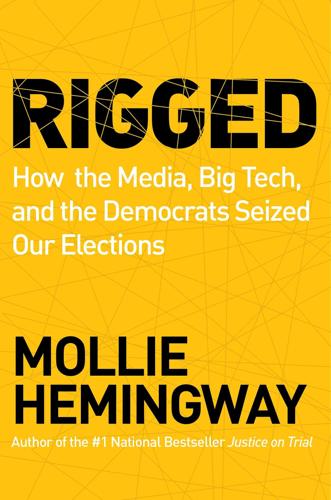
Rigged: How the Media, Big Tech, and the Democrats Seized Our Elections
by
Mollie Hemingway
Published 11 Oct 2021
PBS NewsHour, October 26, 2020, https://www.pbs.org/newshour/show/will-georgias-new-voting-machines-solve-election-problems-or-make-them-worse. 22. Ibid. 23. Ibid. 24. Ibid. 25. Ibid. 26. “Election Security,” C-SPAN, June 12, 2018, 01:18:10, https://www.c-span.org/video/?446920-1/justice-homeland-security-officials-testify-election-security. 27. Kill Chain: The Cyber War on America’s Elections, HBO, 2020, https://www.hbo.com/documentaries/kill-chain-the-cyber-war-on-americas-elections. 28. “Election Security,” C-SPAN, March 21, 2018, 1:17:48, https://www.c-span.org/video/?442759-1/senate-intelligence-committee-hearing-focuses-election-security. 29. Ibid. 30. Associated Press, “How to Treat ‘Election Deniers’ and ‘Big Lie’ Adherents Is an Ongoing Challenge for Mainstream News Organizations,” MarketWatch, June 24, 2021, https://www.marketwatch.com/story/how-to-treat-election-deniers-and-big-lie-adherents-is-an-ongoing-challenge-for-mainstream-news-organizations-01624570721. 31.

Whiplash: How to Survive Our Faster Future
by
Joi Ito
and
Jeff Howe
Published 6 Dec 2016
More troubling yet is that instead of changing our strategy—instead of embracing the inevitable defeats and learning how to contain and limit the damage they cause—we just add more sand to the castle, falling prey again to the illusion of the wall so strong that nothing, not even our blinkered adherence to outdated presumptions, can defeat it In July 2014 Wall Street sent an ominous document to lawmakers in Washington. The financial service industry’s largest trade group asked the government to form a “cyber war council” due to the imminent danger of a cyber attack that could destroy vast amounts of data and drain untold millions from bank accounts. “The systemic consequences could well be devastating for the economy as the resulting loss of confidence in the security of individual and corporate savings and assets could trigger widespread runs on financial institutions that likely would extend well beyond the directly impacted banks, securities firms, and asset managers.”
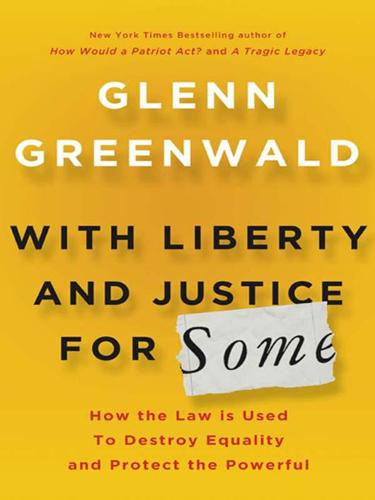
With Liberty and Justice for Some: How the Law Is Used to Destroy Equality and Protect the Powerful
by
Glenn Greenwald
Published 11 Nov 2011
Then he returned to government, where he devoted himself to protecting and shielding that industry from any accountability. Once the Bush administration ended, McConnell went back directly to his lucrative position at Booz Allen, where he advocates for massive expansions of surveillance policies—such as increased, joint government/corporate control over the Internet in the name of fighting “cyber wars”—from which his firm and its clients would profit greatly. This is the toxic pattern that leads government officials to try to shield not only themselves but their most favored private corporations from any consequences for what they do, no matter how legally dubious. Lawbreaking Studiously Ignored When McConnell first publicly demanded full immunity for the telecom industry he served, it seemed implausible in the extreme that it would actually happen.
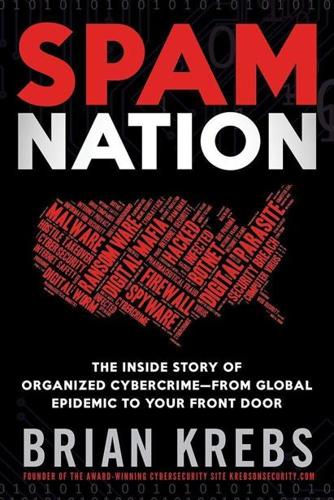
Spam Nation: The Inside Story of Organized Cybercrime-From Global Epidemic to Your Front Door
by
Brian Krebs
Published 18 Nov 2014
In secret, he had deep ties to the cybercrime underworld, helping online miscreants of all stripes obtain credit card processing for their shady endeavors, and taking a hefty cut of the action. Vrublevsky also is the cofounder and administrator of the popular spammer forum Crutop.nu and another pivotal figure in the cyber wars that have made us into a spam nation—or in reality, a world of spam—today. By 2010, I had spent more than a year investigating and reporting on allegations of corrupt business practices by Vrublevsky and his reputed ties to spammers working for the Rx-Promotion rogue pharmacy program, first as an investigative reporter for the Washington Post and then for my own cybersecurity news website, KrebsOnSecurity.com.

My Shit Life So Far
by
Frankie Boyle
Published 30 Sep 2009
Although pupils won’t have been taught what a dodo is; they’ll be saying ‘as dead as MySpace’. Teaching children about information technology is going to replace fad activities, such as reading books and learning about history. That might seem like a dreadful shame to us, but remember that future generations are going to have to fight the cyber wars and, unfortunately, knowing how to download plans for an electromagnetic pulse disruptor is going to be more useful to them than knowing how long Queen Victoria reigned when they come face to face with an army of giant robotic bees. Actually, my primary-school placement was a great time for me.

Social Life of Information
by
John Seely Brown
and
Paul Duguid
Published 2 Feb 2000
Dealers of Lightning: Xerox PARC and the Dawn of the Computer Age. New York: Harper Business. Hobsbawm, Eric J. 1977. The Age of Revolution, 1789 1848. London: Abacus. Hoggdon, Paul N. 1997. "The Role of Intelligent Agent Software in the Future of Direct Response Marketing." Direct Marketing 59 (9): 10 18. Hornett, Andrea. In preparation. "Cyber Wars: Organizational Conflicts of a Virtual Team." Department of Business, Pennsylvania State University, draft June 1999. Hughes, Robert. 1986. The Fatal Shore: The Epic of Australia's Founding. New York: Knopf. Huizinga, Johan. 1972. America: A Dutch Historian's Vision, from Afar and Near.

Going Dark: The Secret Social Lives of Extremists
by
Julia Ebner
Published 20 Feb 2020
The forty-five-year-old Arab woman with an Israeli passport and residency in the United States allegedly used the hacked accounts of her victims to recruit attackers and facilitate attacks.20 According to the FBI, she created a virtual library of instructions on how to build bombs, biological weapons, poisons and suicide vests to help would-be ISIS terrorists stage attacks in the US and beyond.21 The Terror Agency Sisters applaud her when the news breaks and share detailed accounts of her story. ‘The struggle for the cyber caliphate has only just begun,’ one of the ISIS sisters tells me. Sooner or later, we should expect a massive cyber war against the ‘evil Jewish–Crusader Axis led by US, Israel and coalition of friendly governments’. The struggle starts with battles over the hearts and minds of young Muslim men and women receptive to the ideational and social offers made by a new tech-savvy generation of ISIS recruiters. The rise of online echo chambers has heavily influenced the ways in which extremist movements can indoctrinate newcomers, foster their dependence on the group and strengthen their identification with its values.
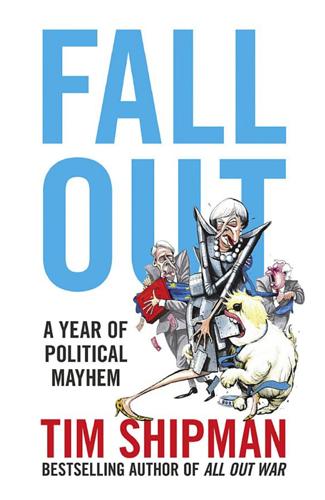
Fall Out: A Year of Political Mayhem
by
Tim Shipman
Published 30 Nov 2017
The leader’s optimism and energy gave Labour an advantage over Theresa May in the ‘air war’, the headline battle which is most visible to the press and public. But election campaigns have three other important elements: the ‘ground war’ fought by activists on the doorsteps; the ‘cyber war’, which pits campaigners against each other on social media sites like Facebook; and the ‘data war’, where strategists use computer modelling to find voters for the cyber and ground warriors to target. In 2015 Labour had emphatically lost the ground and the cyber wars, but this time around the Conservative advantage was obliterated, with dramatic effect. Corbyn may not have been able to rely on trade union mobilisation like Michael Foot, but he had something much better than that.
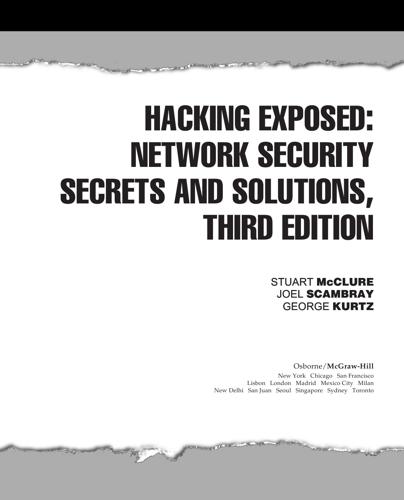
Hacking Exposed: Network Security Secrets and Solutions
by
Stuart McClure
,
Joel Scambray
and
George Kurtz
Published 15 Feb 2001
If the date is between the 20th and 27th of the month (GMT), the thread will stop searching for systems to infect and, instead, sends a flood of unstructured data to TCP port 80 on 198.137.240.9 (which was www.whitehouse.gov up until late July 19, 2001, and is now no longer in use), potentially resulting in a Denial of Service (DoS) attack against that site. Code Red was thought to be created during the much-hyped “cyber war” between American and Chinese hackers during 2001 and was reported to have infected more than 359,000 servers in a 14-hour period during July 19, 2001. The United States government was forced to change the IP address of www.whitehouse.gov to avoid the flood of data from so many infected machines.

The Seventh Sense: Power, Fortune, and Survival in the Age of Networks
by
Joshua Cooper Ramo
Published 16 May 2016
Kovács and Albert-László Barabási, “Network Science: Destruction Perfected,” Nature 524 (August 6, 2015): 38–39; Manlio De Domenico, Albert Solé-Ribalta, Elisa Omodei, et al., “Ranking in Interconnected Multilayer Networks Reveals Versatile Nodes,” Nature Communications 6 (April 23, 2015). America is far too complacent: Stephen J. Cimballa and Roger N. McDermott, “A New Cold War? Missile Defenses, Nuclear Arms Reductions and Cyber War,” Comparative Strategy 34, no. 1 (2015): 95–111. Lloyd George: Margaret MacMillan, Paris 1919: Six Months That Changed the World (New York: Random House, 2002), 381. The scientists: John Maynard Smith and Eörs Szathmáry, The Major Transitions in Evolution (Oxford: Oxford University Press, 1995).
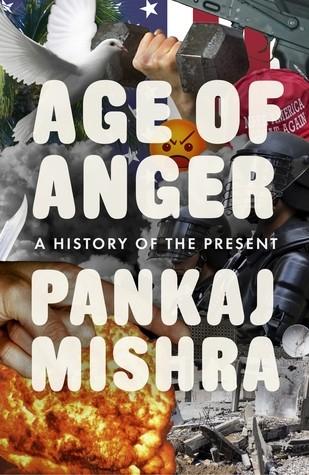
Age of Anger: A History of the Present
by
Pankaj Mishra
Published 26 Jan 2017
* * * Savage violence has erupted in recent years across a broad swathe of territory: wars in Ukraine and the Middle East, suicide bombings in Belgium, Xinjiang, Nigeria and Turkey, insurgencies from Yemen to Thailand, massacres in Paris, Tunisia, Florida, Dhaka and Nice. Conventional wars between states are dwarfed by those between terrorists and counter-terrorists, insurgents and counter-insurgents; and there are also economic, financial and cyber wars, wars over and through information, wars for the control of the drug trade and migration, and wars among urban militias and mafia groups. Future historians may well see such uncoordinated mayhem as commencing the third – and the longest and strangest – of all world wars: one that approximates, in its ubiquity, a global civil war.

Freedom
by
Daniel Suarez
Published 17 Dec 2009
With an encrypted IP beacon beaming out the Daemon's Ragnorok API to the entire Internet, it was only a matter of time until some other national power or corporate group had access to the Destroy function as well. There was no other choice. Why not be the first? That's what finally convinced Connelly to join this effort. Nuclear war was unthinkable--but all-out cyber war was not. They could finally unify the world under a single all-encompassing economic power. One that could achieve miraculous things. Countries didn't matter anymore. The world was just a big market. It needed to be unified. At the same moment Weyburn Labs was invoking the destruction of vast amounts of corporate data, they were also running a second script--one that invoked the Destroy function with a malformed parameter.

Blood and Oil: Mohammed Bin Salman's Ruthless Quest for Global Power
by
Bradley Hope
and
Justin Scheck
Published 14 Sep 2020
Finally, almost three weeks after the boycott started, the Saudi and Emirati leaders issued a list of thirteen requests, which included shutting down Al Jazeera and paying reparations for damage purportedly caused by Qatar in the region. With actual conflict averted thanks to intervention by the United States and other Western allies, including France, both sides intensified a cyber war unlike any seen in recent history. Neither side took credit for attacks, denying any involvement, but the victims were squarely on one side or the other of the battle. Yousef al-Otaiba, the UAE ambassador to the United States, had his inbox hacked within days of the boycott. Soon, newspapers around the world began publishing stories about the UAE’s efforts to influence US officials, including Jared Kushner, as well as think tanks and other influential people, in addition to details of Otaiba’s use of prostitutes.

Exponential: How Accelerating Technology Is Leaving Us Behind and What to Do About It
by
Azeem Azhar
Published 6 Sep 2021
Jackson School of International Studies, 28 June 2016 <https://jsis.washington.edu/news/north-korea-cyber-attacks-new-asymmetrical-military-strategy/> [accessed 26 April 2021]. 19 Edward White and Kang Buseong, ‘Kim Jong Un’s Cyber Army Raises Cash for North Korea’, Financial Times, 17 June 2019 <https://www.ft.com/content/cbb28ab8-8ce9-11e9-a24d-b42f641eca37> [accessed 24 March 2021]. 20 ‘North Korea GDP’, Trading Economics <https://tradingeconomics.com/north-korea/gdp> [accessed 26 April 2021]. 21 ‘North Korea GDP’. 22 Seth Jones, Containing Tehran: Understanding Iran’s Power and Exploiting Its Vulnerabilities (Center for Strategic and International Studies, January 2020) <https://www.csis.org/analysis/containing-tehran-understanding-irans-power-and-exploiting-its-vulnerabilities> [accessed 21 June 2020]. 23 ‘Six Russian GRU Officers Charged in Connection with Worldwide Deployment of Destructive Malware and Other Disruptive Actions in Cyberspace’, US Department of Justice, 19 October 2020 <https://www.justice.gov/opa/pr/six-russian-gru-officers-charged-connection-worldwide-deployment-destructive-malware-and> [accessed 26 April 2021]. 24 ‘MH17 Ukraine Plane Crash: What We Know’, BBC News, 26 February 2020 <https://www.bbc.com/news/world-europe-28357880> [accessed 24 March 2021]. 25 Andrew Marino, ‘Sandworm Details the Group behind the Worst Cyberattacks in History’, The Verge, 28 July 2020 <https://www.theverge.com/21344961/andy-greenberg-interview-book-sandworm-cyber-war-wired-vergecast> [accessed 14 September 2020]. 26 Rae Ritchie, ‘Maersk: Springing Back from a Catastrophic Cyber-Attack’, I-CIO, August 2019 <https://www.i-cio.com/management/insight/item/maersk-springing-back-from-a-catastrophic-cyber-attack> [accessed 26 April 2021]. 27 ‘The Sinkhole That Saved the Internet’, TechCrunch, 8 July 2019 <https://social.techcrunch.com/2019/07/08/the-wannacry-sinkhole/> [accessed 12 January 2021]. 28 ‘National Cyber Force Transforms Country’s Cyber Capabilities to Protect the UK’, GCHQ, 19 November 2020 <https://www.gchq.gov.uk/news/national-cyber-force> [accessed 2 January 2021]. 29 Dustin Volz and Robert McMillan, ‘Hack Suggests New Scope, Sophistication for Cyberattacks’, Wall Street Journal, 18 December 2020 <https://www.wsj.com/articles/hack-suggests-new-scope-sophistication-for-cyberattacks-11608251360> [accessed 24 March 2021]. 30 Simon Oxenham, ‘“I Was a Macedonian Fake News Writer”’, BBC Future, 28 May 2019 <https://www.bbc.com/future/article/20190528-i-was-a-macedonian-fake-news-writer> [accessed 30 September 2020]. 31 Soroush Vosoughi, Deb Roy and Sinan Aral, ‘The Spread of True and False News Online’, Science, 359(6380), 2018, pp. 1146–51 <https://doi.org/10.1126/science.aap9559>. 32 Sean Simpson, ‘Fake News: A Global Epidemic Vast Majority (86 per cent) of Online Global Citizens Have Been Exposed to It’, Ipsos, 11 June 2019 <https://www.ipsos.com/en-us/news-polls/cigi-fake-news-global-epidemic> [accessed 24 March 2021]. 33 Digital News Report 2018, Reuters, p. 144. 34 Samantha Bradshaw and Philip N.
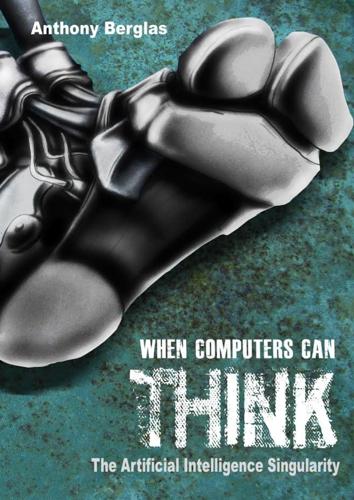
When Computers Can Think: The Artificial Intelligence Singularity
by
Anthony Berglas
,
William Black
,
Samantha Thalind
,
Max Scratchmann
and
Michelle Estes
Published 28 Feb 2015
The book discusses some potential solutions such as the research into friendly AGI by the Machine Intelligence Research Institute. It also considers analogous control for biological research resulting from the Asilomar conference. The difficulty of locking up an AGI is discussed, including Yudkowsky’s experiment. The unfriendly nature of military applications is analyzed, noting that the next war will probably be a cyber war. This book is a good wake up call. However, the book does not consider natural selection at all, and certainly not how natural selection might ultimately affect an AGI’s goals. Muehlhauser 2013 Facing the Intelligence Explosion Fair Use In this short book, Luke Muehlhauser focuses on our natural reluctance to contemplate a radically different future because it has never been encountered before.
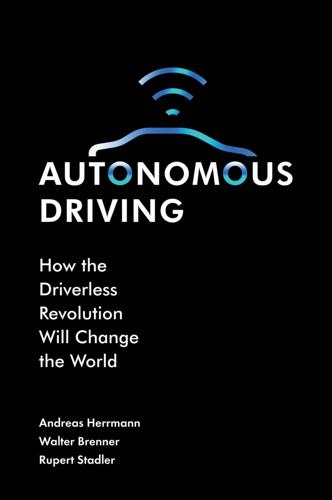
Autonomous Driving: How the Driverless Revolution Will Change the World
by
Andreas Herrmann
,
Walter Brenner
and
Rupert Stadler
Published 25 Mar 2018
Rather surprisingly, customers are much more tolerant towards Internet giants such as Google, Apple, Facebook or Amazon than towards traditional car companies. The best way of tackling this issue is to argue with data protection and to gain customers’ confidence by dealing responsibly with their data. Cyber Security and Data Privacy 149 K e y T a ke a w a y s The number of cyber-attacks is constantly increasing; meanwhile, a cyber war industry exists that carries out attacks on persons, companies and objects. The automotive industry must work together on cyber security with private and state institutions, and must formulate processes and measures to prevent cyber-attacks. Due to vehicles’ advancing automation and connectivity, increasing volumes of data are being generated, the protection of these is a key task.

Sunfall
by
Jim Al-Khalili
Published 17 Apr 2019
Twenty-four hours from now the global media would have moved on to some other story. It had taken the world decades to acknowledge that anthropogenic climate change was a real threat to humanity, so why should this rare threat from space be anything more than a temporary distraction from the constant backdrop of terrorism and global cyber wars? He took a bowl down from the cupboard – almost everything in the house was just as it was when his parents had died, within four months of each other three years ago, and he’d not got round to having a good clear-out. He sat down at the breakfast bar with a bowl of cereal and forced himself to think more positively.
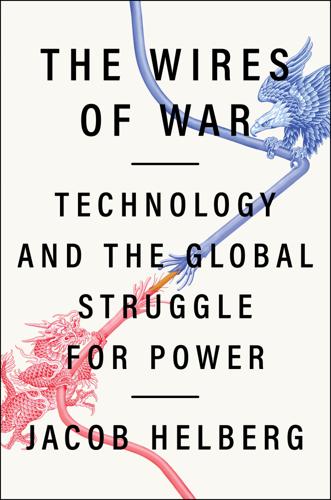
The Wires of War: Technology and the Global Struggle for Power
by
Jacob Helberg
Published 11 Oct 2021
guccounter=1&guce_referrer=aHR0cHM6Ly93d3cuZ29vZ2xlLmNvbS8&guce_referrer_sig=AQAAAHyI8D7LmH-g_AbPhYoztCSNVDK5Nj1h1kDTdPQhczfj—ayPdyeFhT47kBvUQCERoUbcya4zQVsh26cS0P8NP_nI2JSKE1KBvSXqVg_i1CgAy5BAYQJIwEiLNkhZB3p5vYe2KyhOF0Zwx3Go1Yzoeq-KK6ajyC68ErjgCCOO1ma. 18 Hafner and Lyon, Where Wizards Stay Up Late, 236. 19 John P. Carlin, Dawn of the Code War: America’s Battle Against Russia, China, and the Rising Global Cyber Threat (New York: Hachette, 2018), e-book, 59. 20 Fred Kaplan, Dark Territory: The Secret History of Cyber War (New York: Simon & Schuster Paperbacks, 2016), 2. 21 Carlin, Dawn of the Code War, e-book, 160–161. 22 “Timeline: The U.S. Government and Cybersecurity,” Washington Post, May 16, 2003, https://www.washingtonpost.com/wp-dyn/articles/A50606-2002Jun26.html. 23 Carlin, Dawn of the Code War, e-book, 161. 24 Ibid. 25 Brad Smith, Tools and Weapons: The Promise and the Peril of the Digital Age (New York: Penguin Random House, 2019), 23. 26 Singer and Brooking, LikeWar, 38. 27 Walter Isaacson, The Innovators: How a Group of Hackers, Geniuses, and Geeks Created the Digital Revolution (New York: Simon & Schuster Paperbacks, 2014), 411. 28 Singer and Brooking, LikeWar, 39. 29 Ibid. 30 Carlin, Dawn of the Code War, e-book, 162–163. 31 “The Reaction to that First Spam,” Brad Templeton, May 4, 1978, https://www.templetons.com/brad/spamreact.html#reaction. 32 Carlin, Dawn of the Code War, e-book, 153. 33 Ibid., 181. 34 Ibid., 104. 35 Ibid., 106. 36 William M.
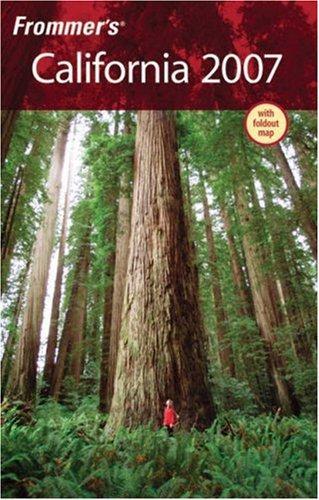
Frommer's California 2007
by
Harry Basch
,
Mark Hiss
,
Erika Lenkert
and
Matthew Richard Poole
Published 6 Dec 2006
The newest ride, Revenge of the Mummy, is a super high-tech indoor roller coaster that whips you backwards and forwards through a dark Egyptian tomb filled with creepy Warrior Mummies. Jurassic Park— The Ride is short in duration but long on dinosaur animatronics; riders in jungle boats float through a world of five-story-tall T-rexes and airborne raptors that culminates in a pitch-dark vertical drop with a splash ending. Terminator 2: 3D, a high-tech cyberwar show, combines live action with triple-screen 3-D technology, explosions, spraying mists, and laser fire (Arnold prevails, of course). Shrek 4D is one of the park’s best attractions, an animated show that combines 3-D effects, a humorous storyline, and “surprise” special effects—the flying dragon chase is wild.

The Zero Marginal Cost Society: The Internet of Things, the Collaborative Commons, and the Eclipse of Capitalism
by
Jeremy Rifkin
Published 31 Mar 2014
Choe Sang-Hun, “Computer Networks in South Korea Are Paralyzed in Cyberattacks,” New York Times, March 20, 2013, http://www.nytimes.com/2013/03/21/world/asia/south-korea-computer-network-crashes.html (accessed March 21, 2013); Siobhan Gorman, “Electricity Grid in U.S. Penetrated by Spies,” Wall Street Journal, April 8, 2009, http://online.wsj.com/article /SB123914805204099085.html (accessed March 21, 2013). 61. James A. Lewis, “Assessing the Risks of Cyber Terrorism, Cyber War, and Other Cyber Threats,” Center for Strategic and International Studies, 2002, 1, http://csis.org/files/media/csis /pubs/021101_risks_of_cyberterror.pdf (June 15, 2013). 62. Nicole Perlroth and David E. Sanger, “Cyberattacks Seem Meant to Destroy, Not Just Disrupt,” New York Times, March 28, 2013, http://www.nytimes.com/2013/03/29/technology/corporate -cyberattackers-possibly-state-backed-now-seek-to-destroy-data.html?

Dark Mirror: Edward Snowden and the Surveillance State
by
Barton Gellman
Published 20 May 2020
“just get all the American people”: A transcript of my exchange with Alexander is archived at https://archive.is/tg9pB. Maybe a review of the video: The panel with Negroponte and Blair was recorded in its entirety and may be viewed at “Clear and Present Danger: Cyber Crime; Cyber Espionage; Cyber Terror; and Cyber War,” Aspen Security Forum, 2013, https://youtu.be/Ncc0zPRrV04?t=58m21s. video evidence of waterboarding: Mark Mazzetti and Scott Shane, “Jose Rodriguez, Center of Tapes Inquiry, Was Protective of His CIA Subordinates,” New York Times, February 20, 2008, archived at https://archive.is/j5B2. CHAPTER SIX: JAMBOREE toothpaste bombs: Bond, the fictional British spy, used a toothpaste bomb supplied by Q in the film Licence to Kill, 1989.
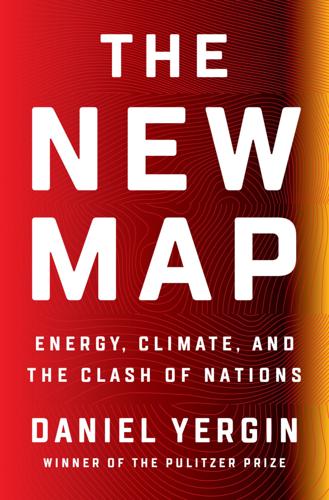
The New Map: Energy, Climate, and the Clash of Nations
by
Daniel Yergin
Published 14 Sep 2020
The other case studies include the naval race and economic competition between Britain and Germany that culminated in the First World War. At the end, both victors and vanquished were much worse off, and the carnage laid the ground for the Second World War. None of these historic cases, of course, involved large arsenals of nuclear weapons—nor, of course, cyber war. While the validity of the Thucydides Trap is debated, it has become part of the vocabulary. “There is no such thing as the Thucydides Trap in the world,” said Xi Jinping on a visit to Seattle. Yet he warned, “Should major countries time and again make the mistakes of strategic miscalculation, they might create such traps for themselves.”4 From the collapse of Soviet communism in 1991 until the 2008 global financial crisis, the U.S. design for global economic management had been generally accepted.

Frommer's California 2009
by
Matthew Poole
,
Harry Basch
,
Mark Hiss
and
Erika Lenkert
Published 2 Jan 2009
Jurassic Park—The Ride is short in duration as well but long on dinosaur animatr onics; riders in jungle boats float thr ough a world of fiv e-story-tall T-rexes and airborne raptors that culminates in a pitch-dar k vertical drop with a splash L . A .’S TO P AT T R AC T I O N S LO S A N G E L E S 544 ending. Terminator 2: 3D is a high-tech cyberwar show that combines live action along with triple-scr een 3-D technology , explosions, spraying mists, and laser fir e (Arnold prevails, of course). Shrek 4D is one of the par k’s best attractions, a multisensor y animated sho w that combines 3-D effects, a humor ous stor yline, and “ surprise” special effects—the flying dragon chase is wild.

Frommer's Los Angeles 2010
by
Matthew Richard Poole
Published 28 Sep 2009
Revenge of the Mummy is a high-tech indoor r oller coaster that whips you backward and for ward through a dar k Egyptian tomb filled with cr eepy Warrior Mummies (and ends a bit too soon). Jurassic Park—The Ride is shor t in duration but long on dinosaur animatr onics; riders in jungle boats float thr ough a world of fiv e-story-tall T-rexes and airborne raptors that culminates in a pitch-dar k vertical drop with a splash ending. Terminator 2: 3D is a high-tech cyber war show that combines live action with triple-screen 3-D technology, explosions, spraying mists, and laser fir e (Arnold prevails, of course). Shrek 4D is one of the park’s best attractions, a multisensory animated show Fun Facts B ody Double Here’s a really cheap and easy way to get a great seat at a fanc y Hollywood award ceremony: Log on to Seatfiller.com and sign up to be one of those people who makes sure all the front seats are occupied.
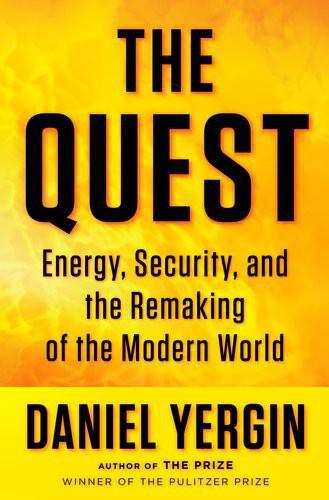
The Quest: Energy, Security, and the Remaking of the Modern World
by
Daniel Yergin
Published 14 May 2011
There have been a number of early examples of technology glitches and cost overruns as utilities roll out pilot programs. One possible risk will require careful assessment and attention in terms of design: to assure that a more complex system, which is more interactive and relies more on information technology and the Internet, does not open doors that make it vulnerable to hacking, cyber attacks, or outright cyber war. The threats are real. One study found that there was “little good news about cyber-security in the electric grid and other crucial services that depend on information technology and industrial control systems. Security improvements are modest and overmatched by the threat.”21 Overall, new technologies and new practices can do much to improve the operations throughout the electricity system and to increase the efficiency with which buildings use energy.